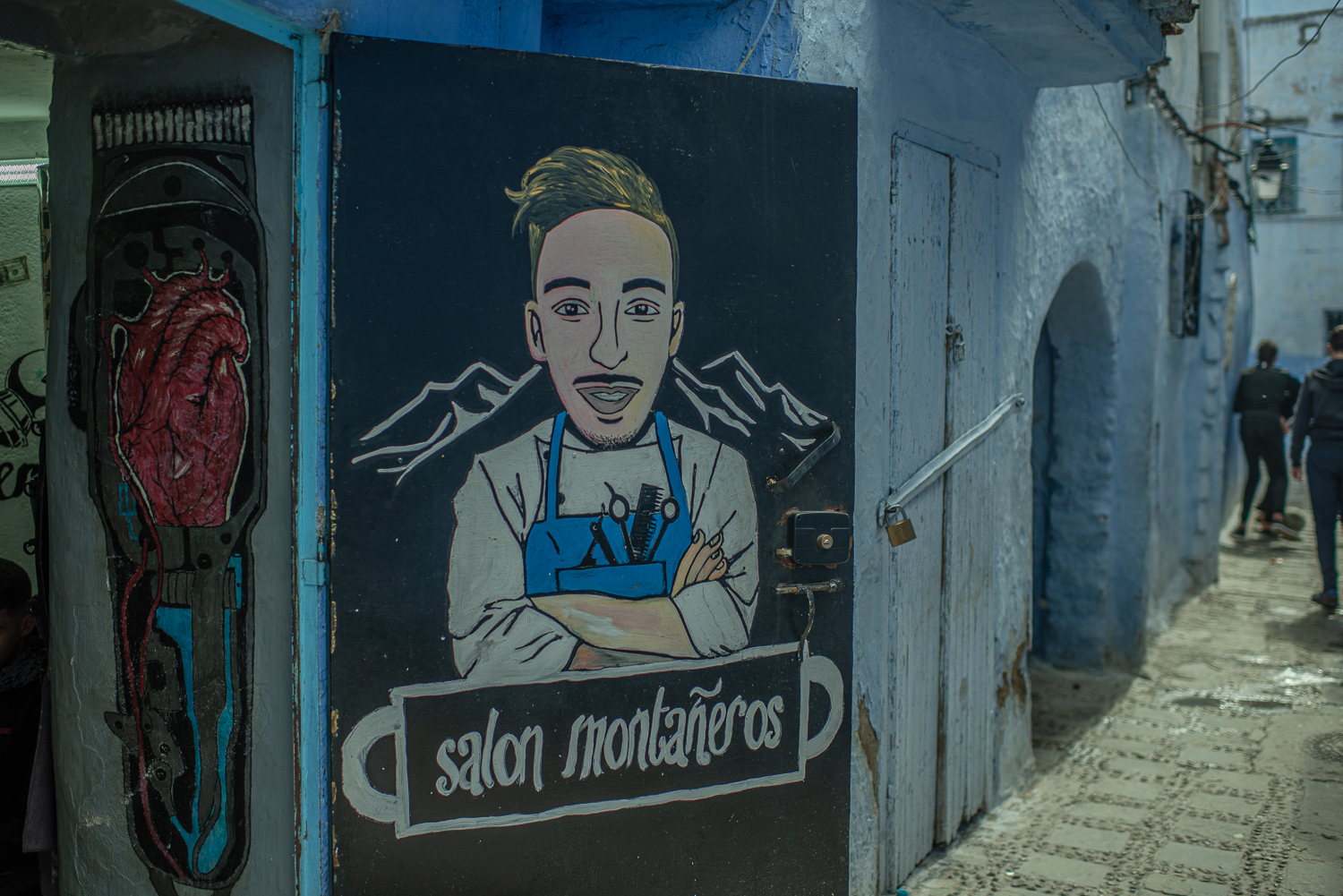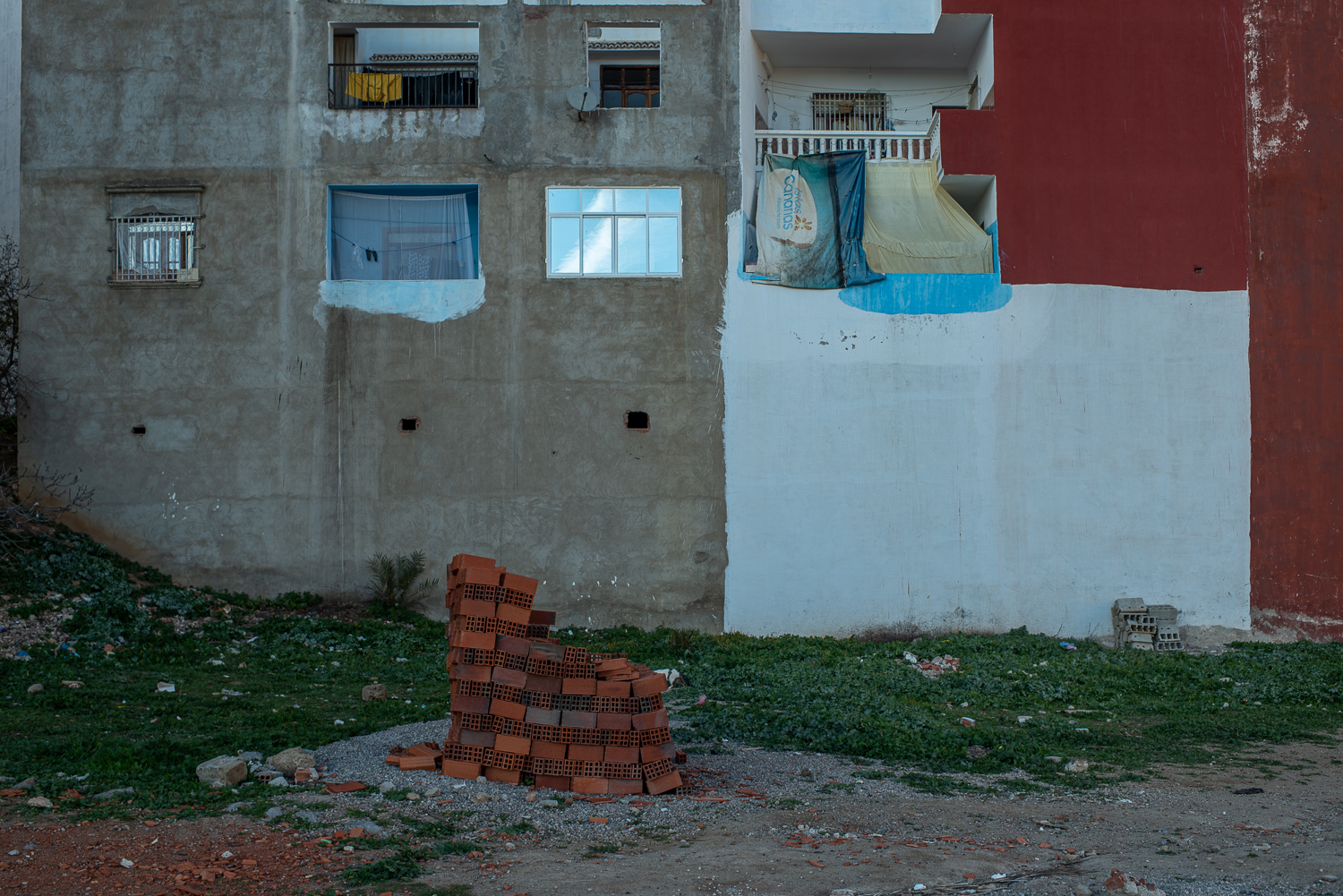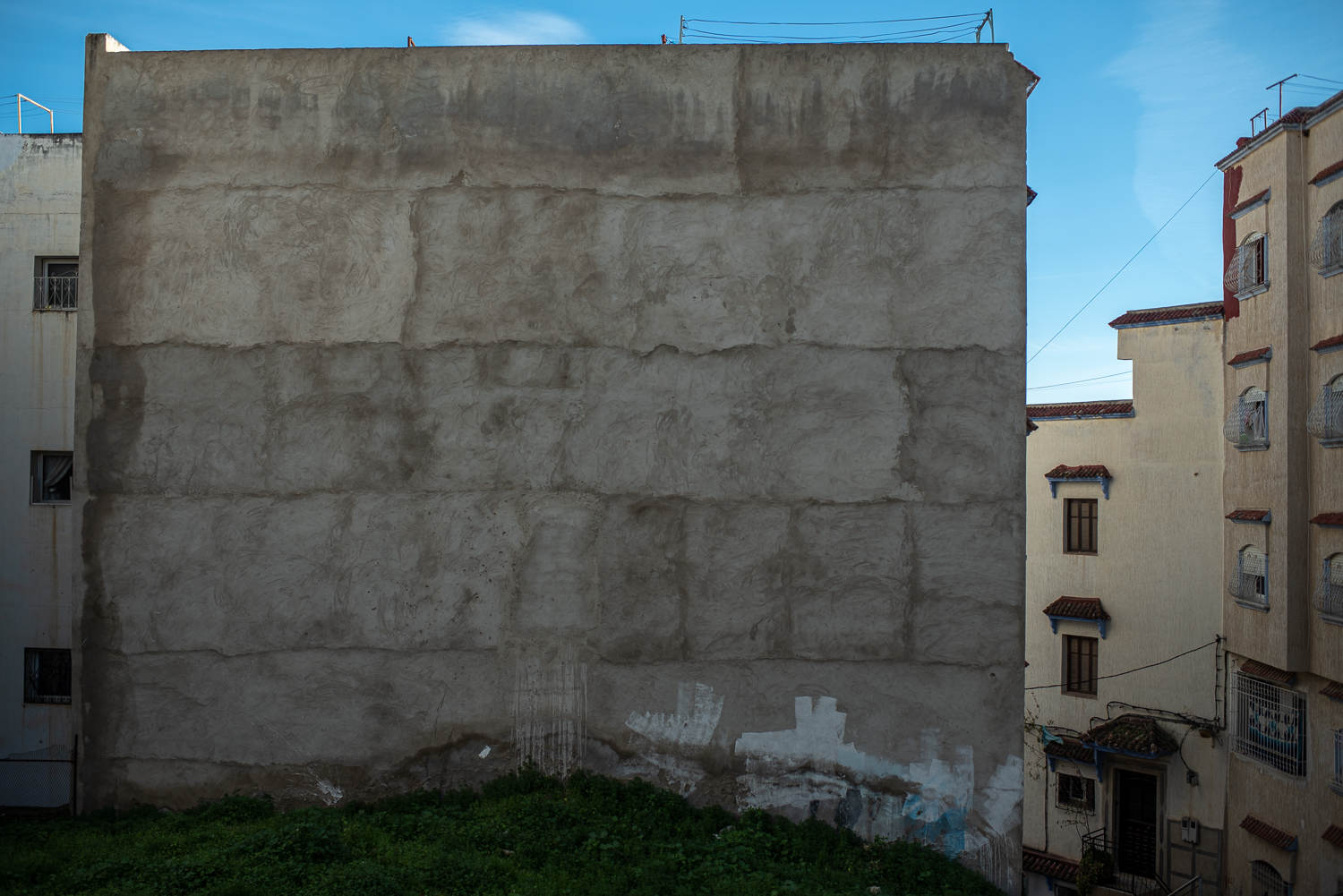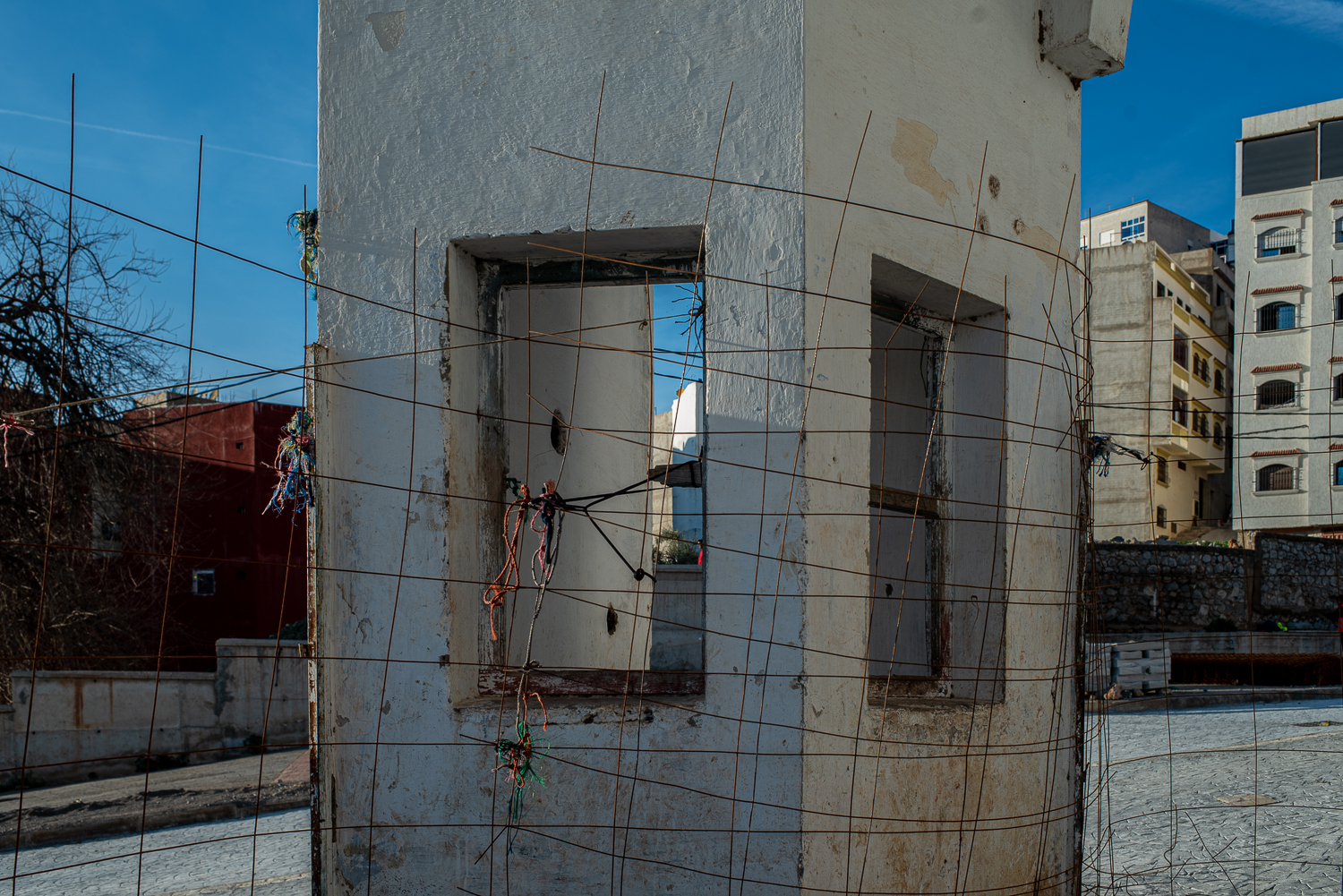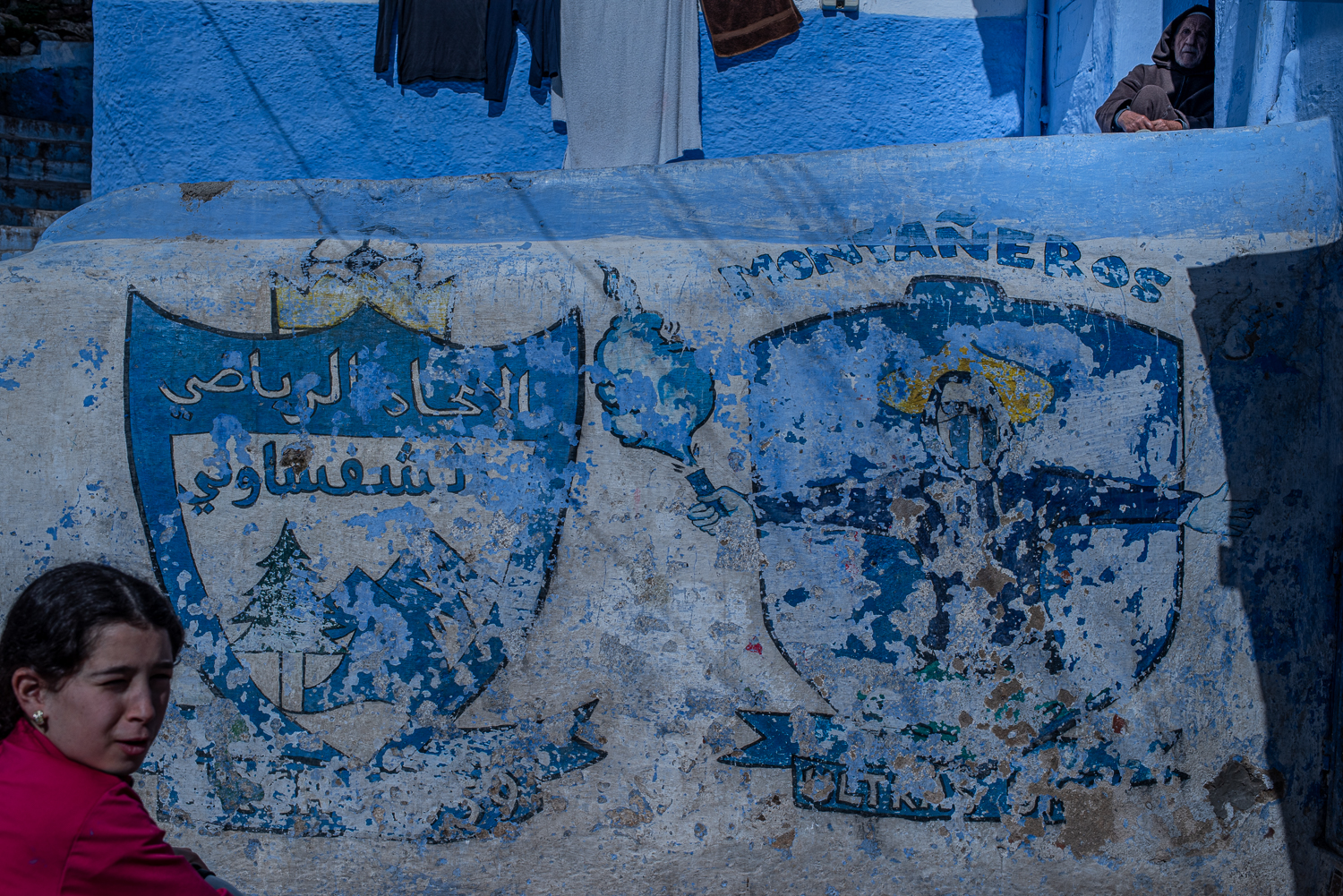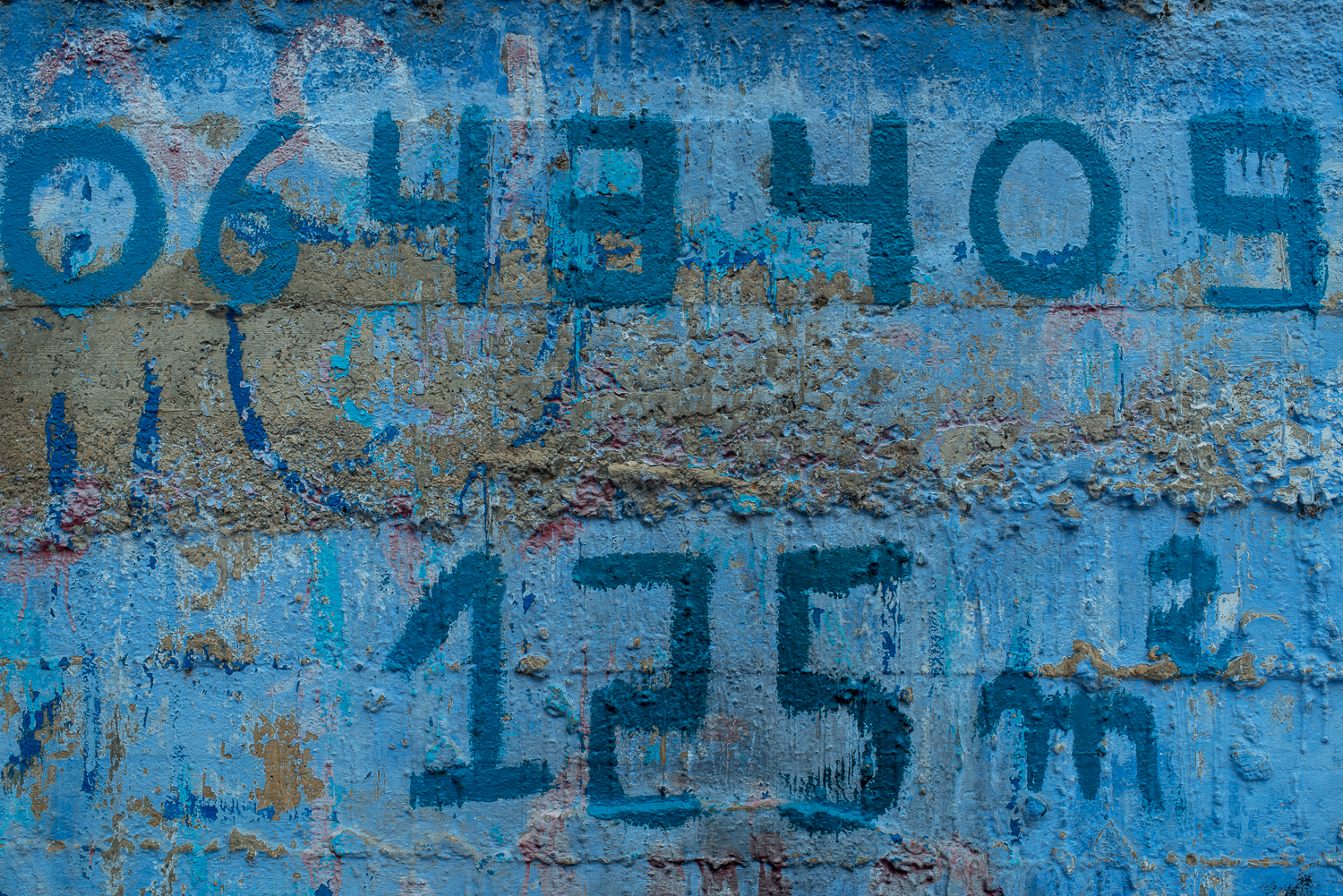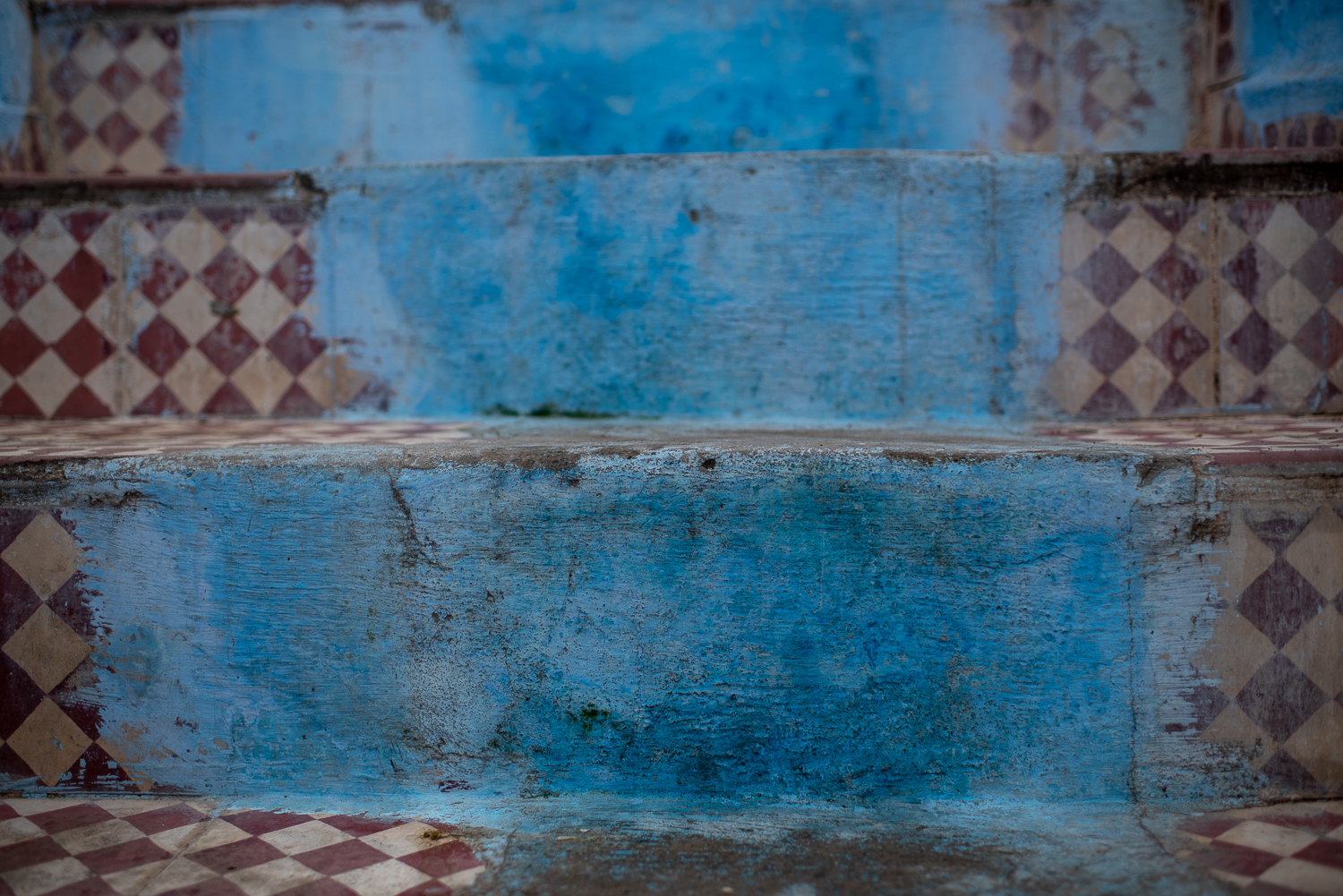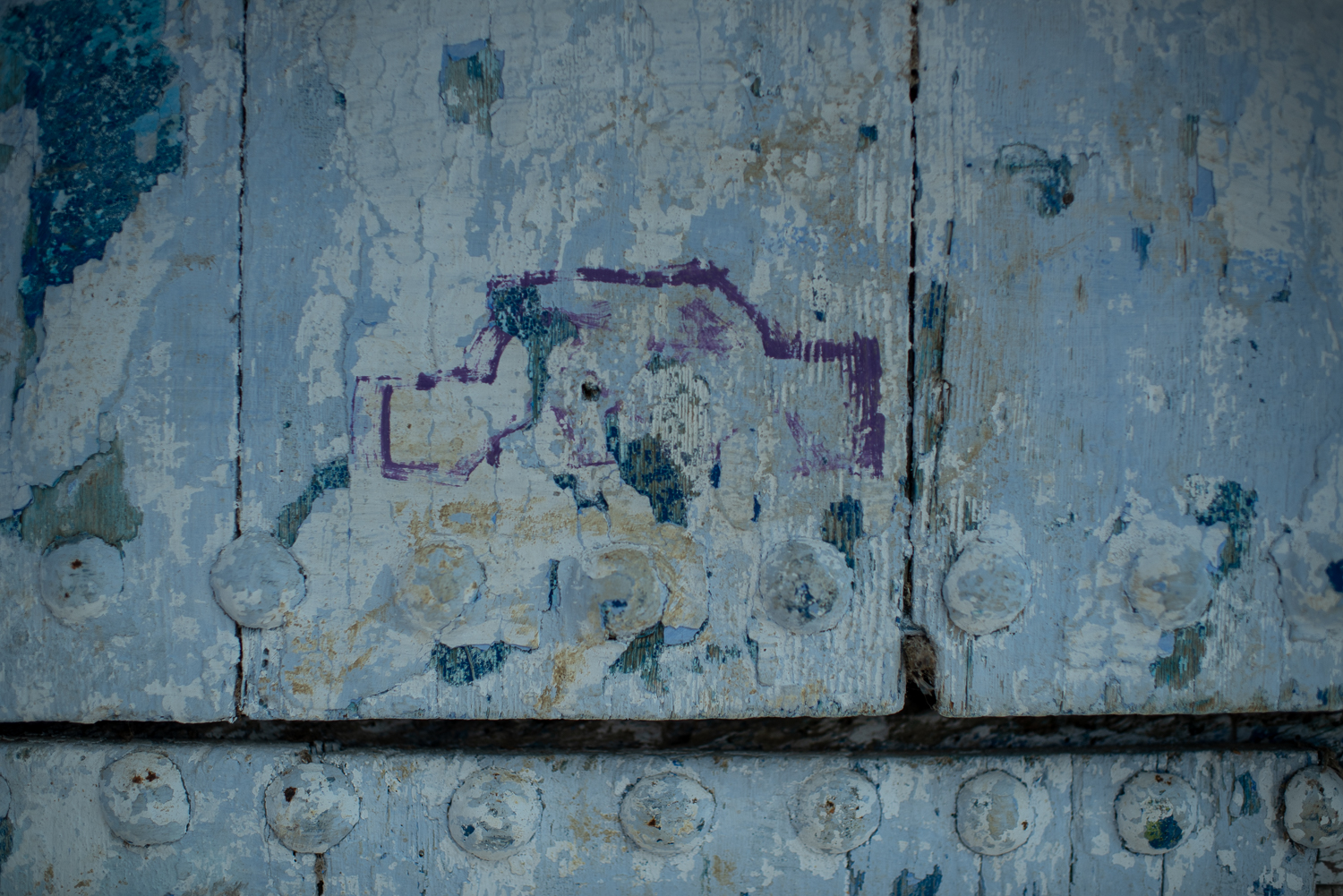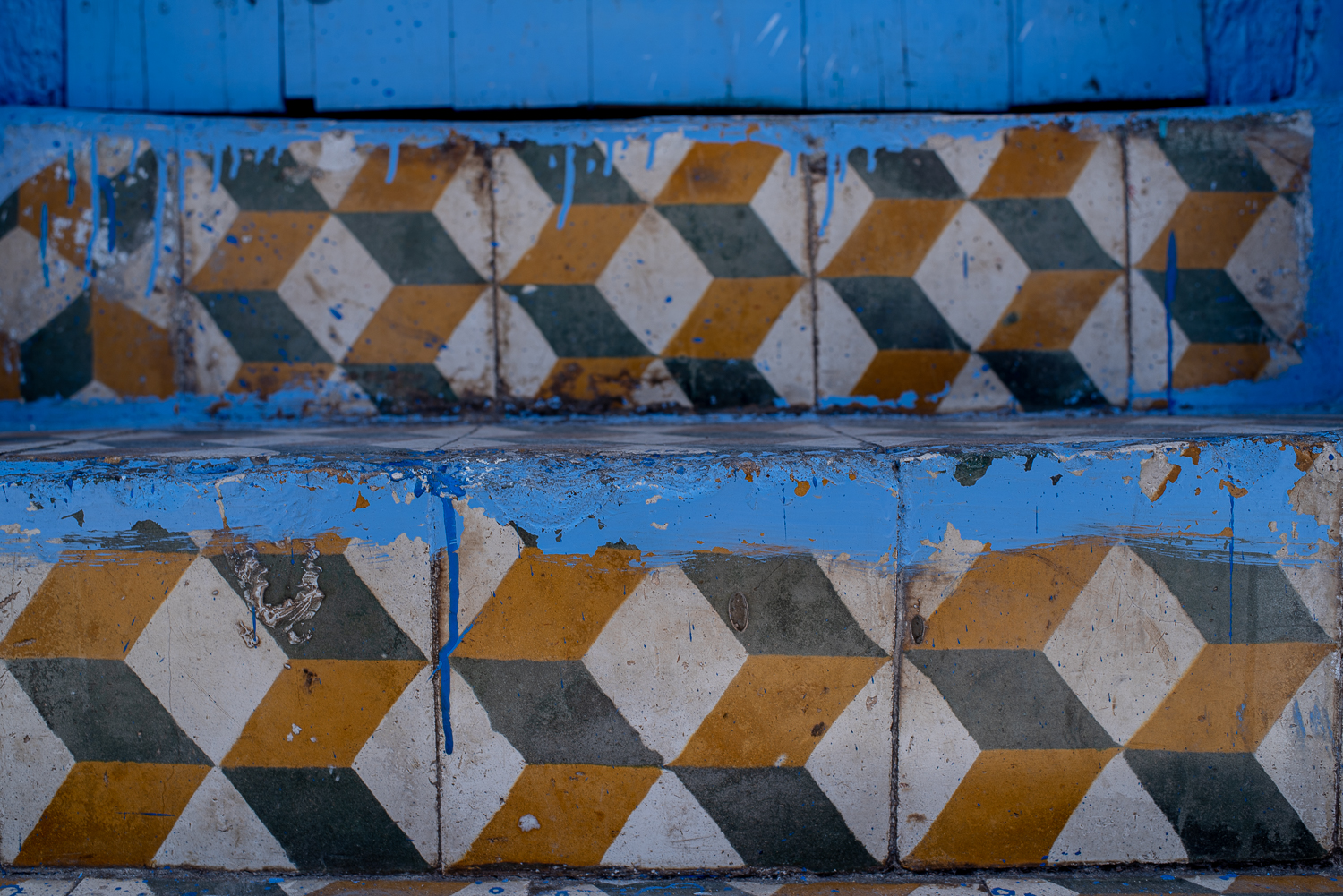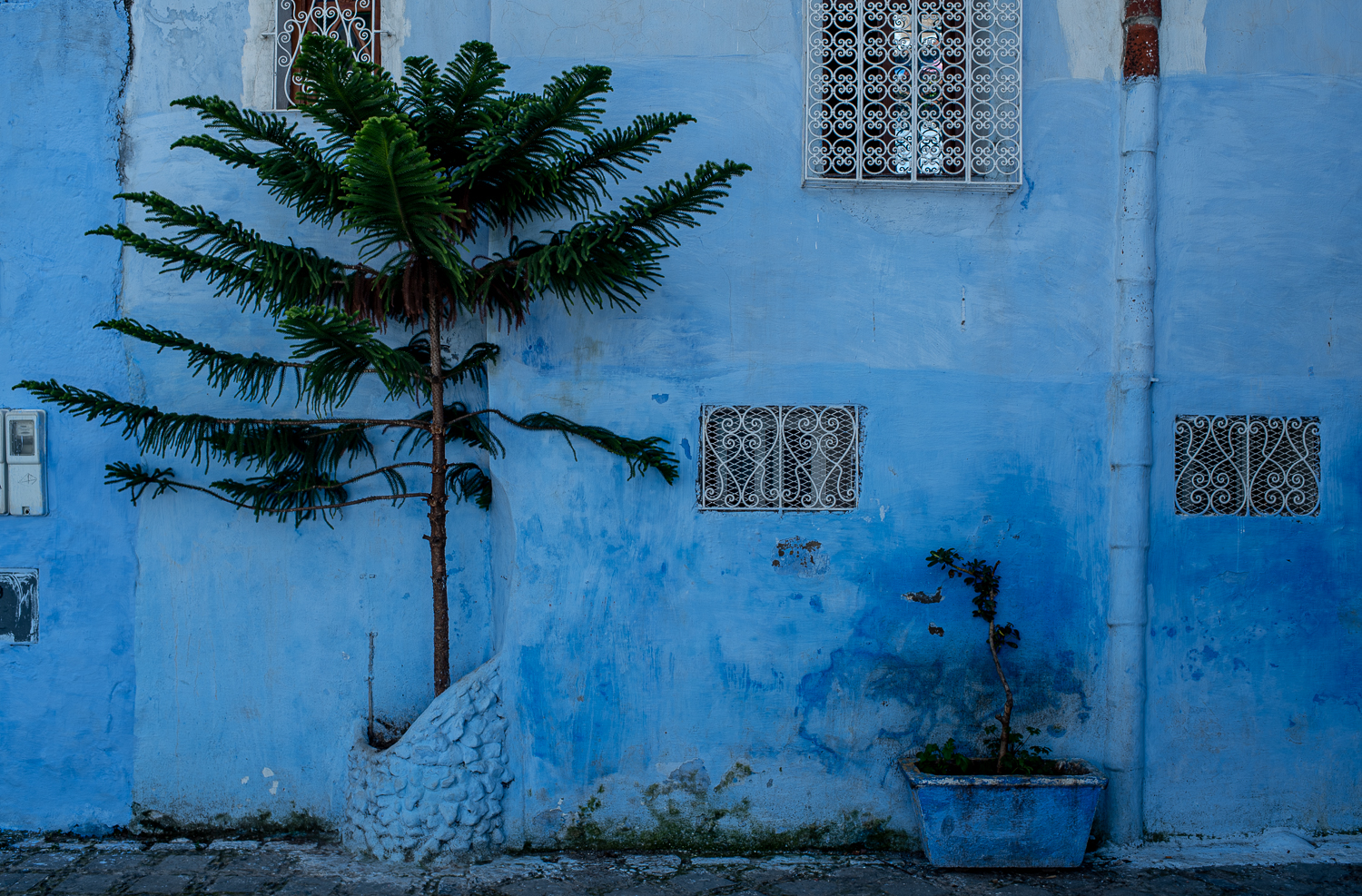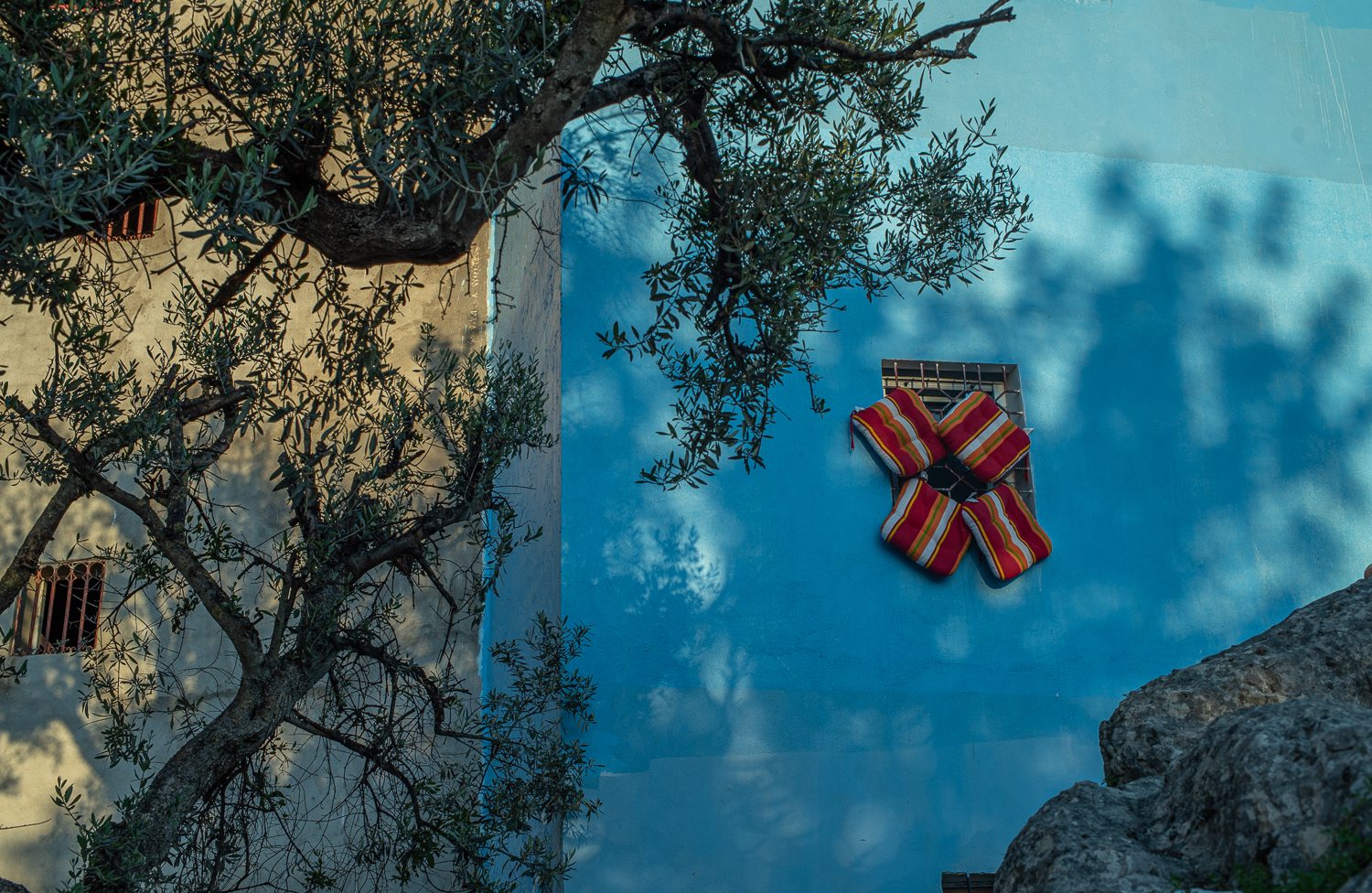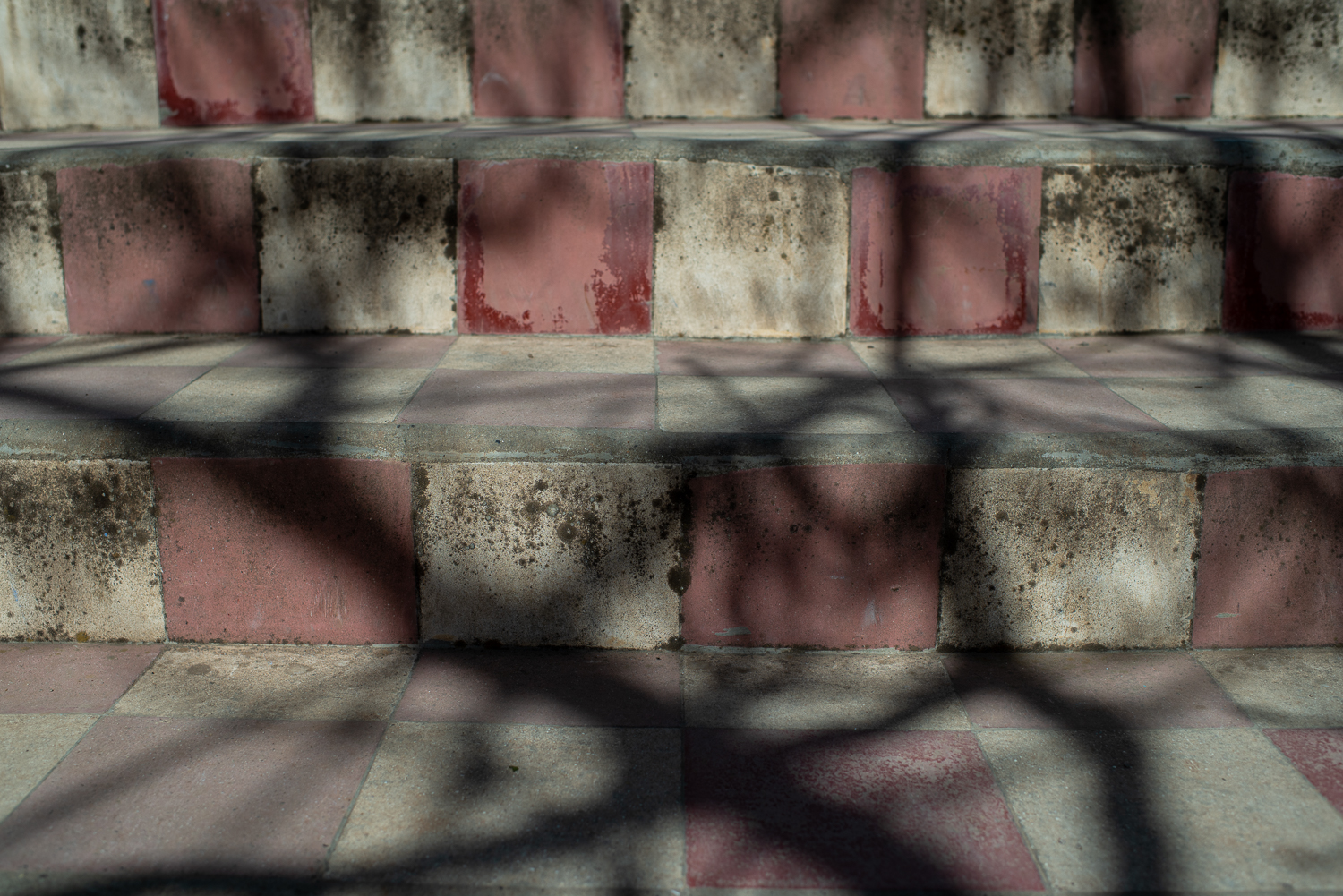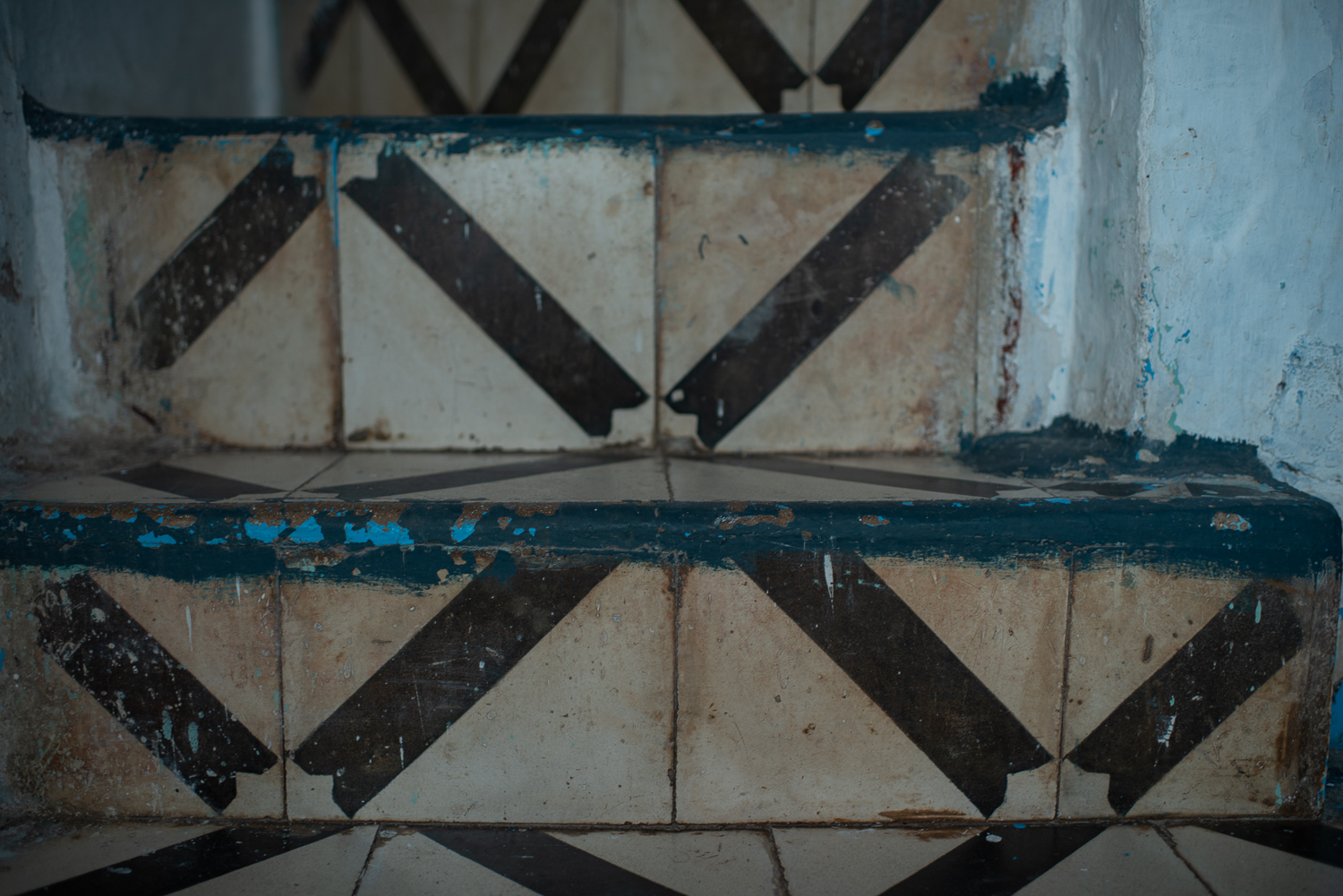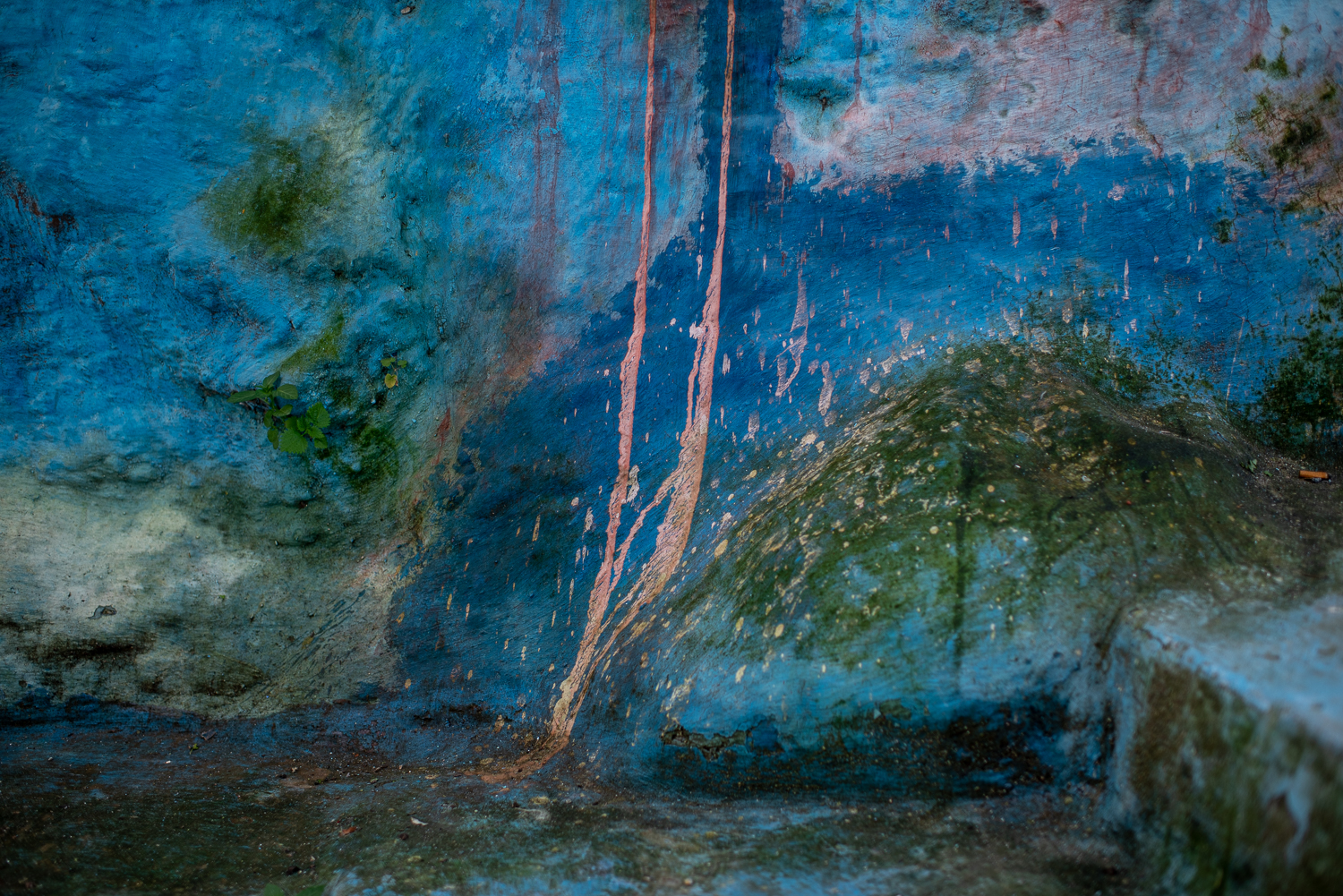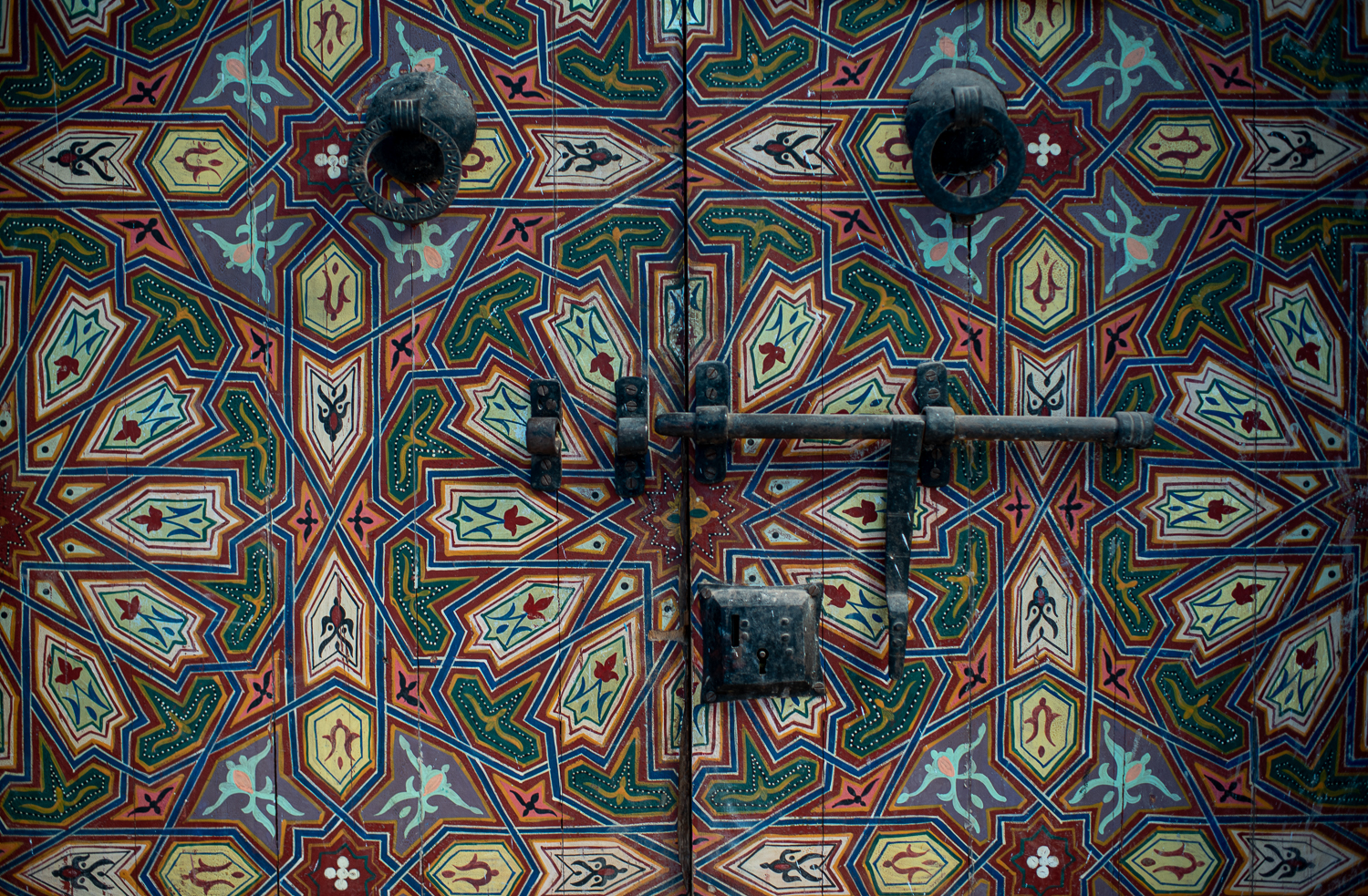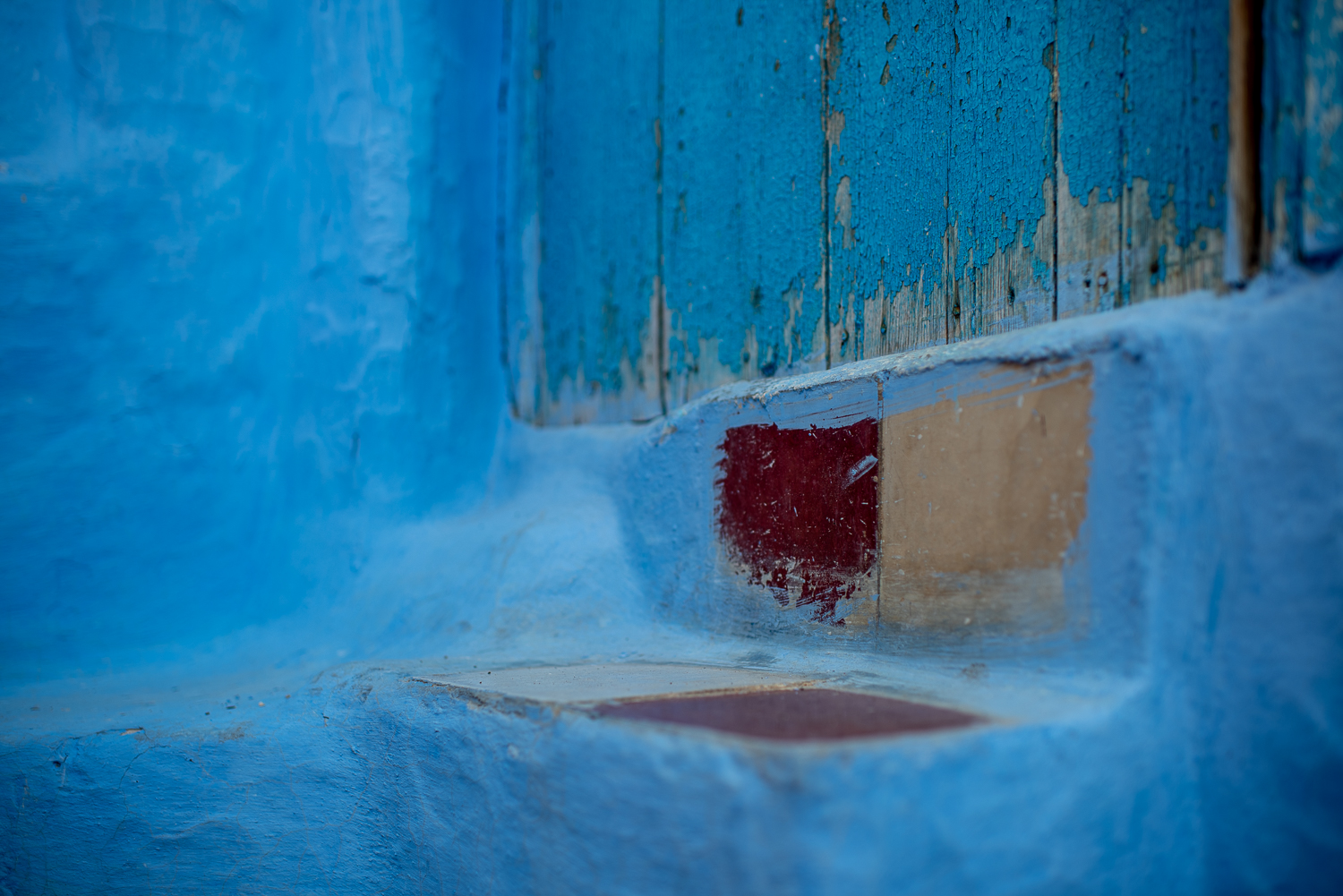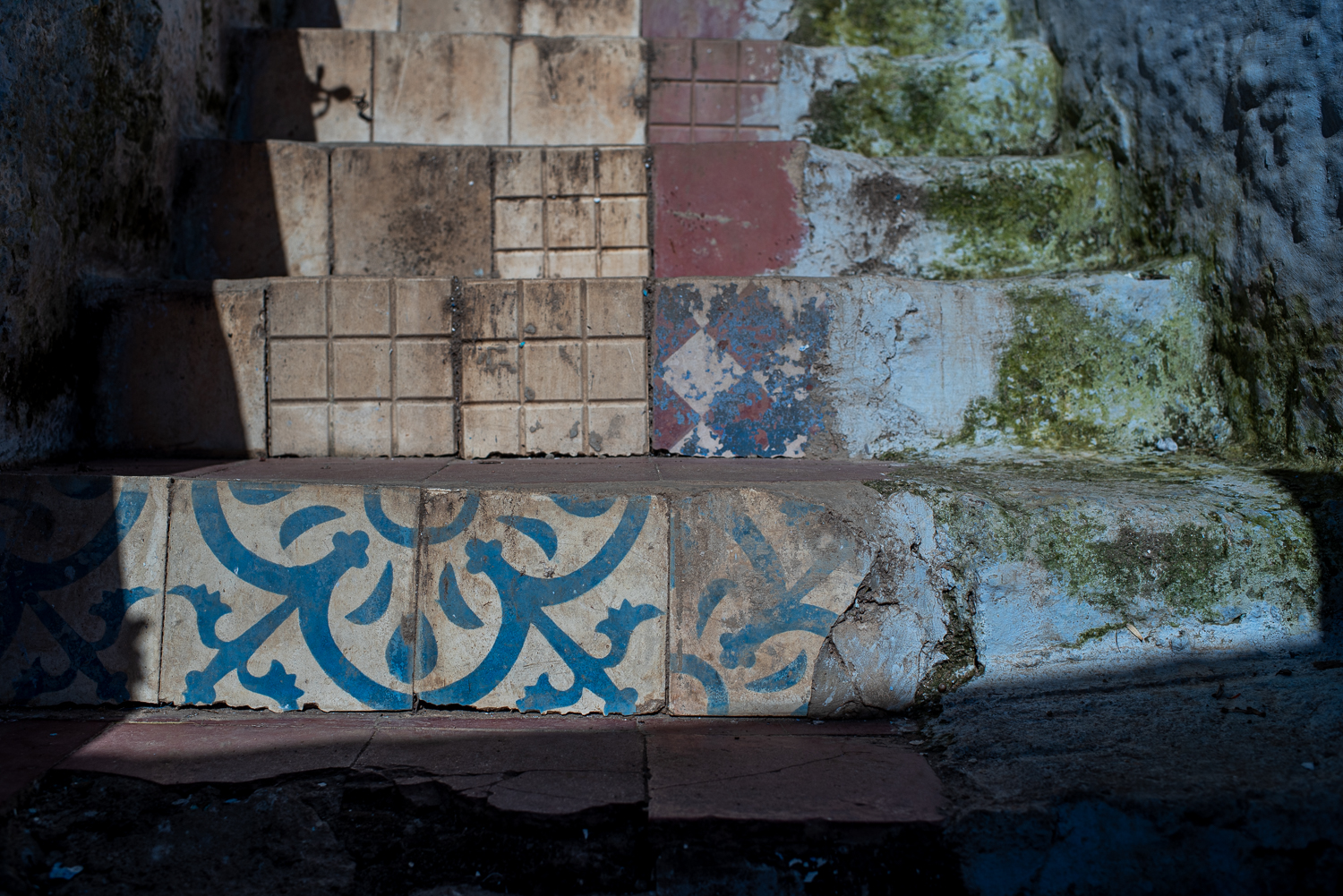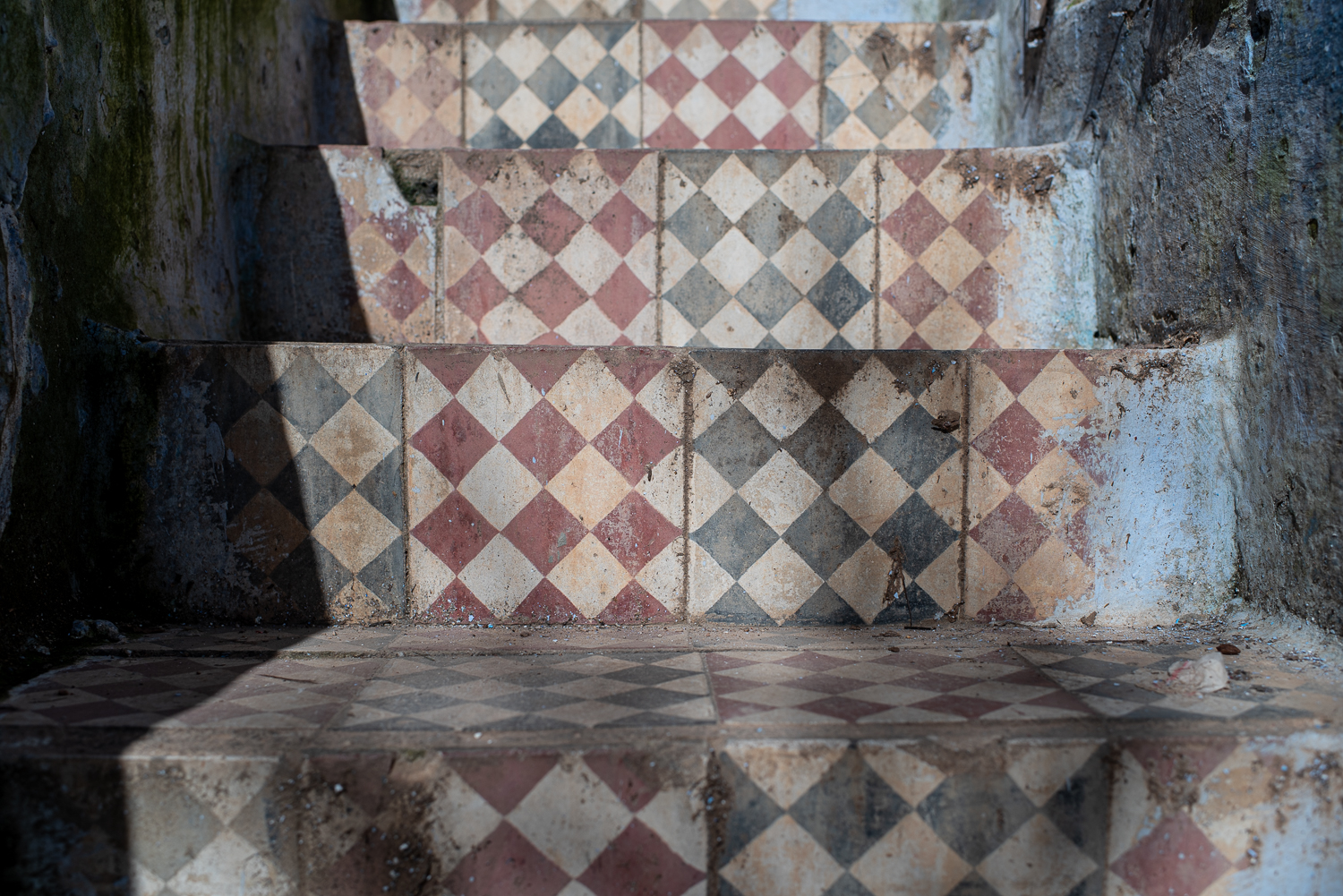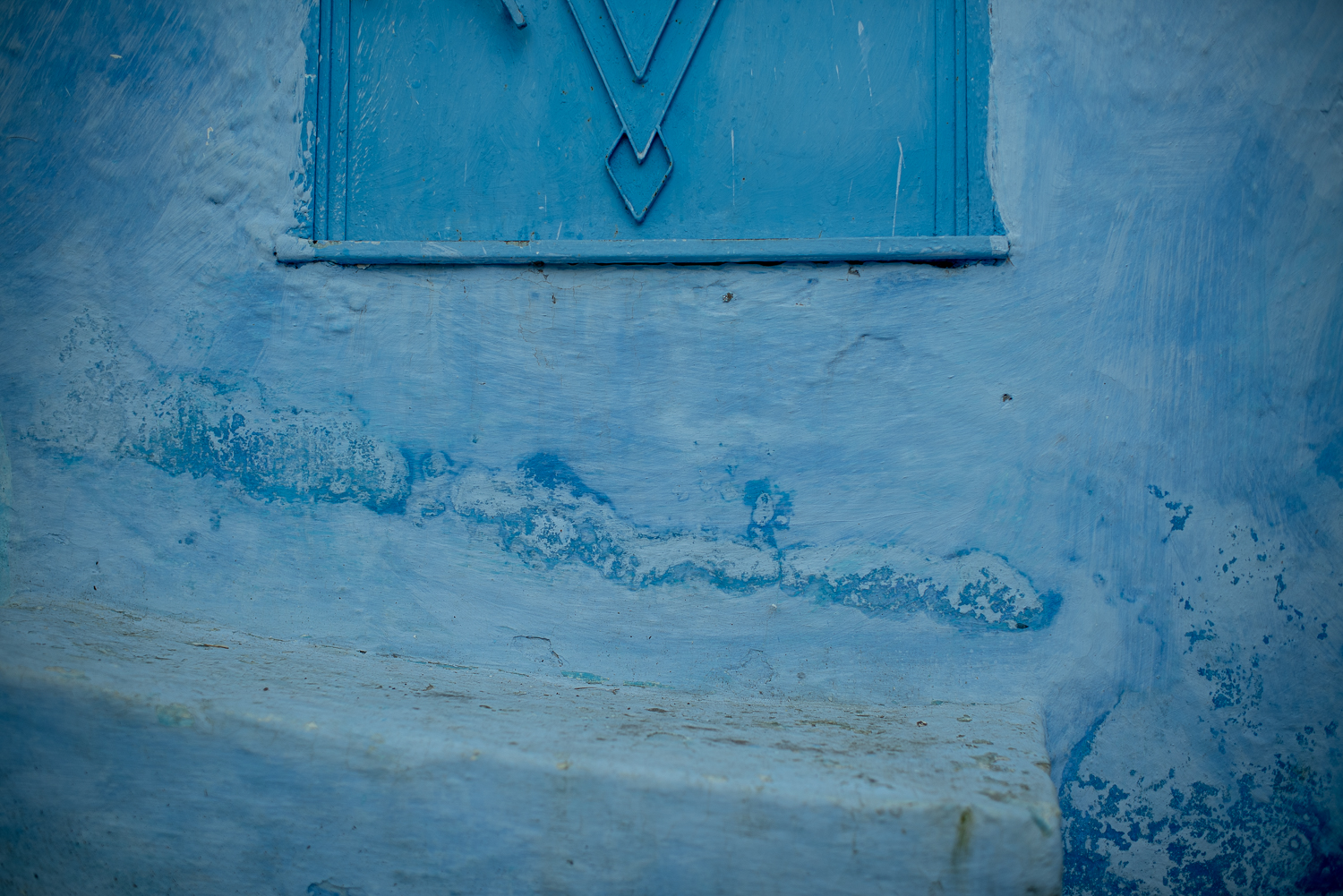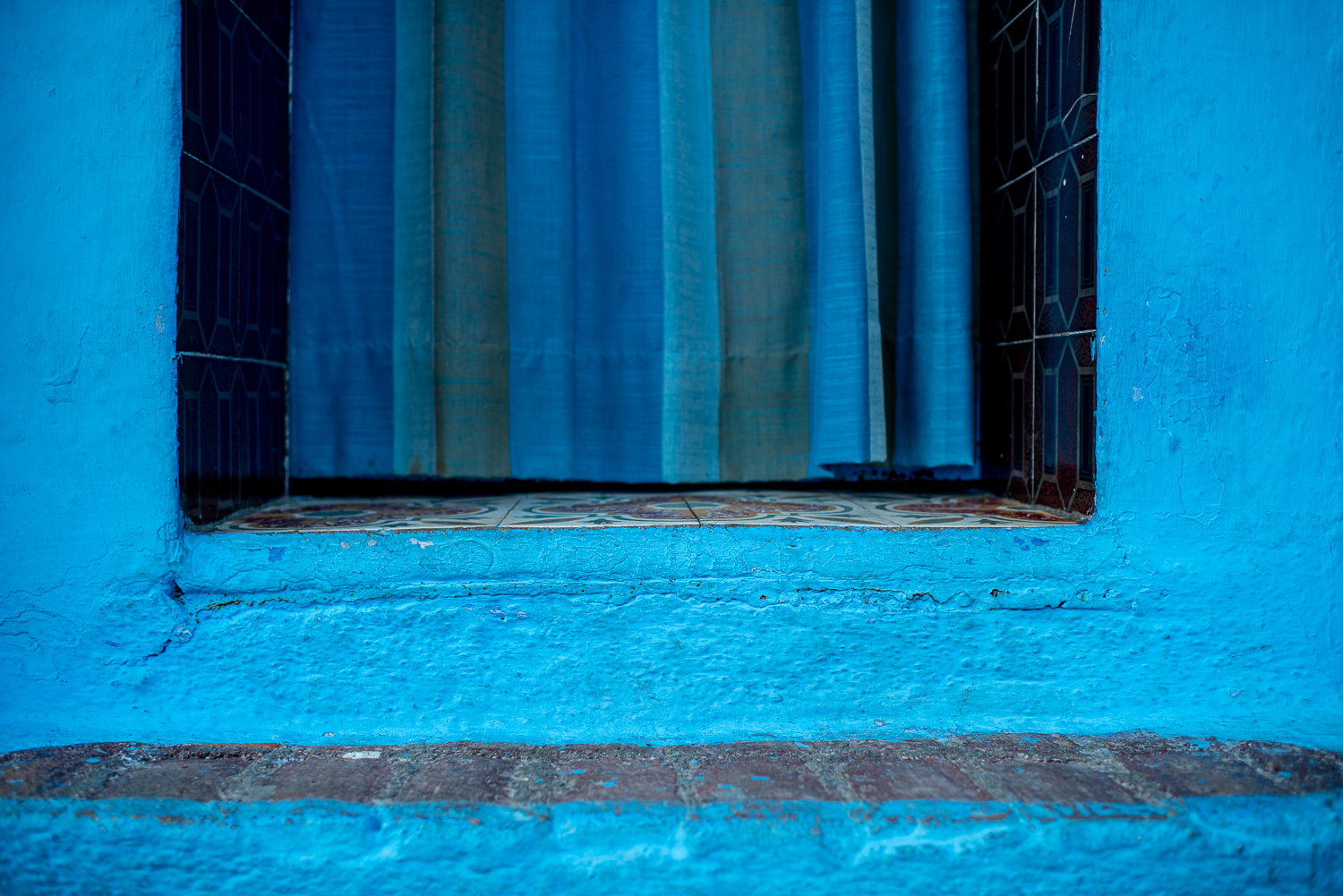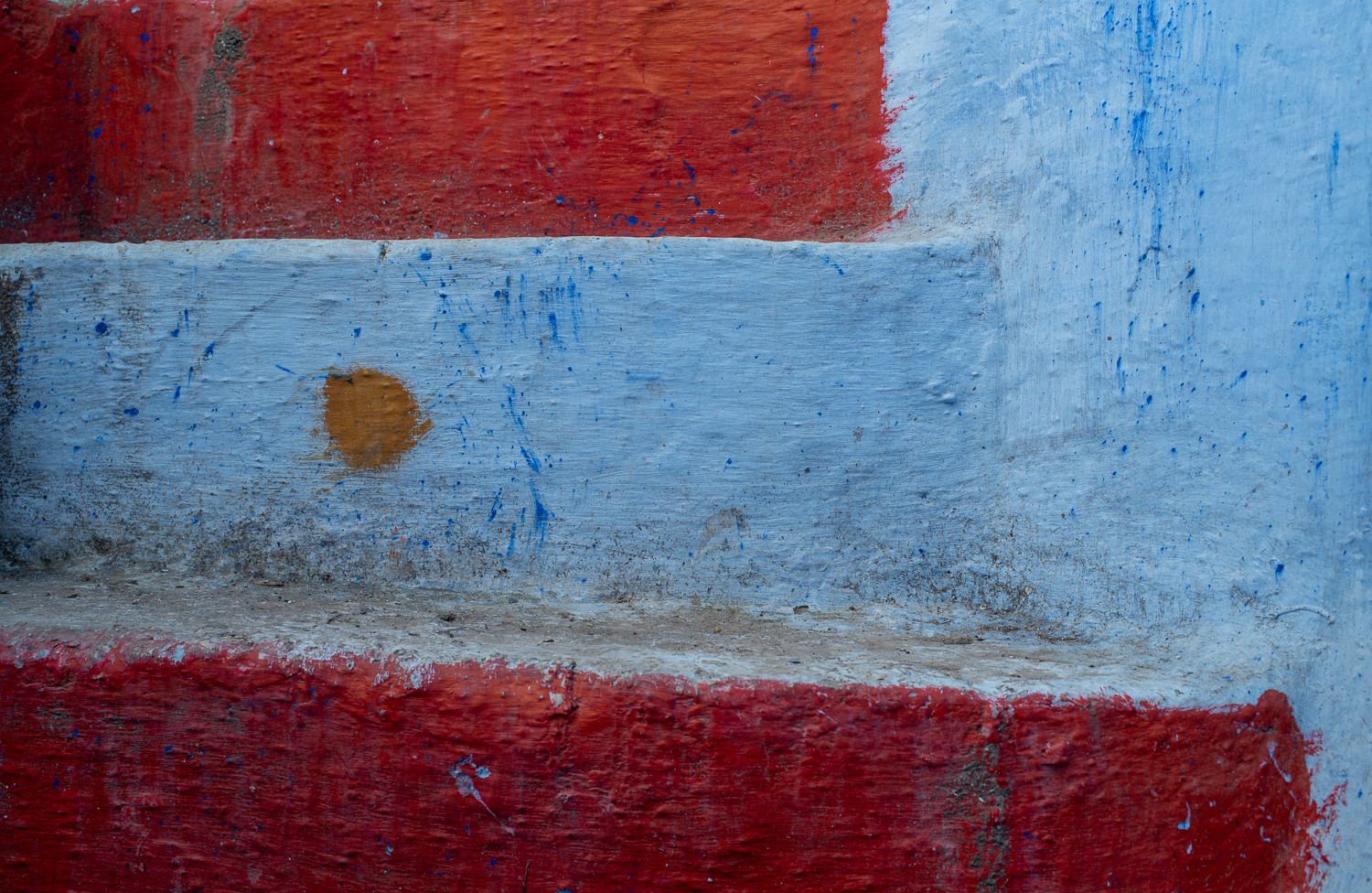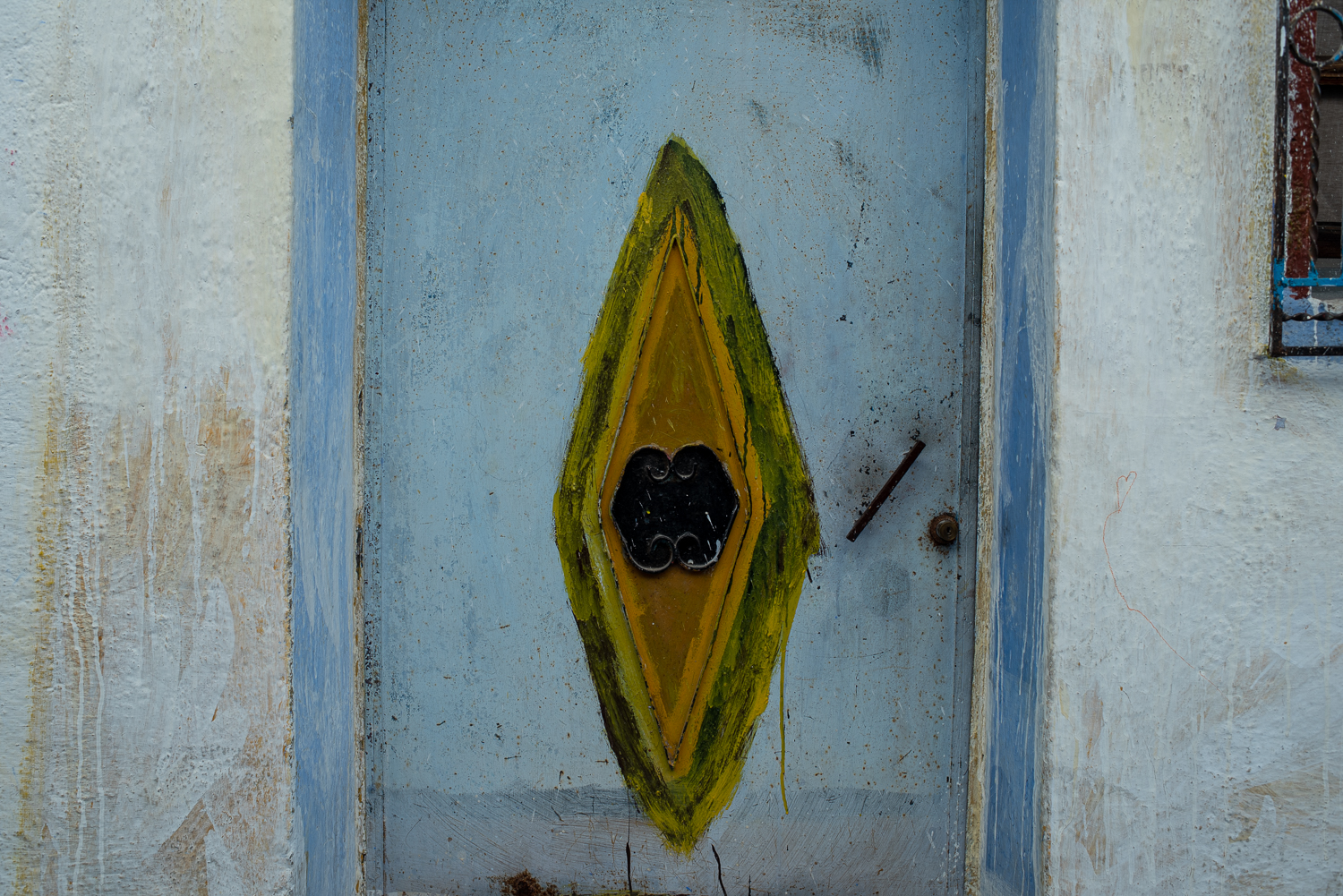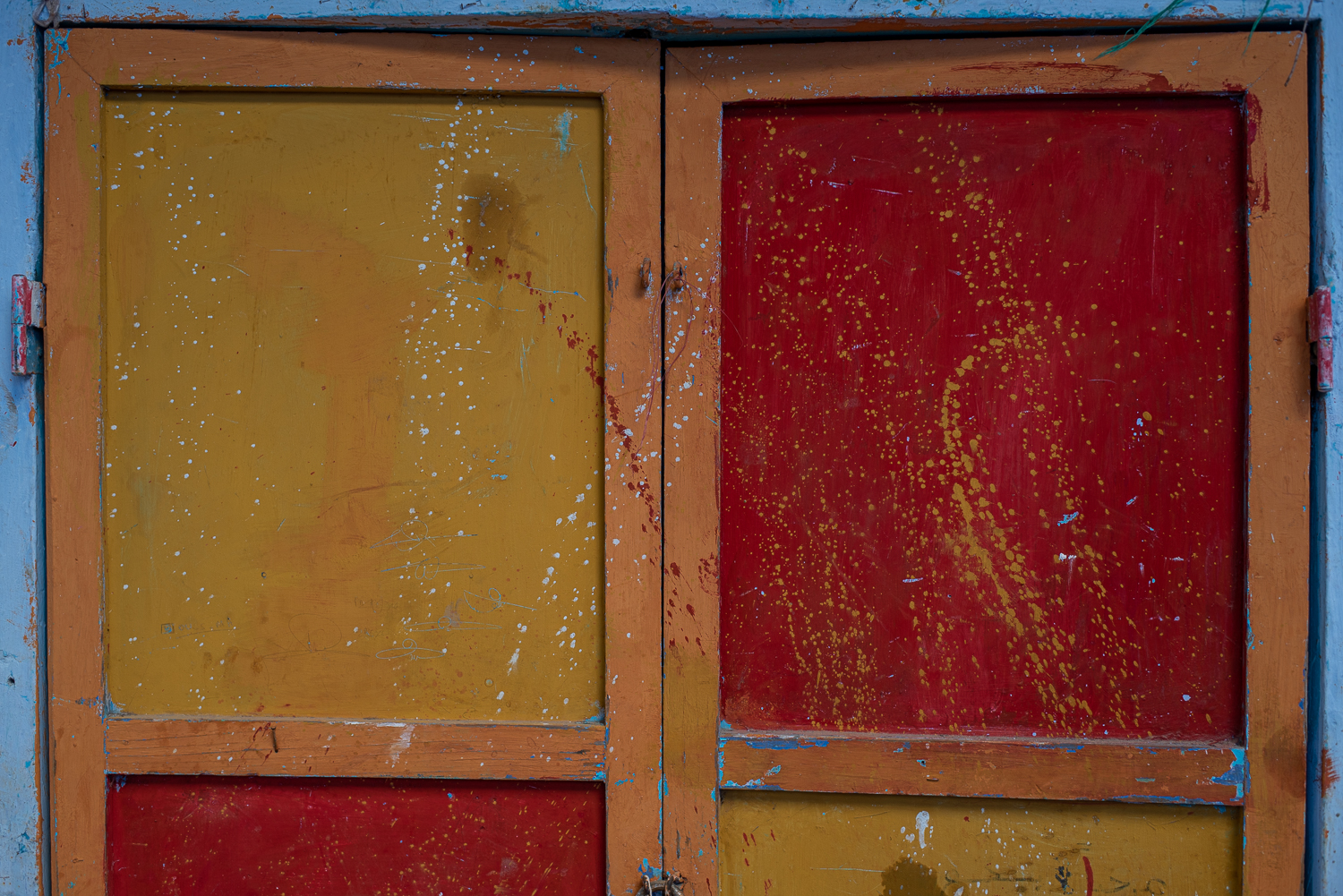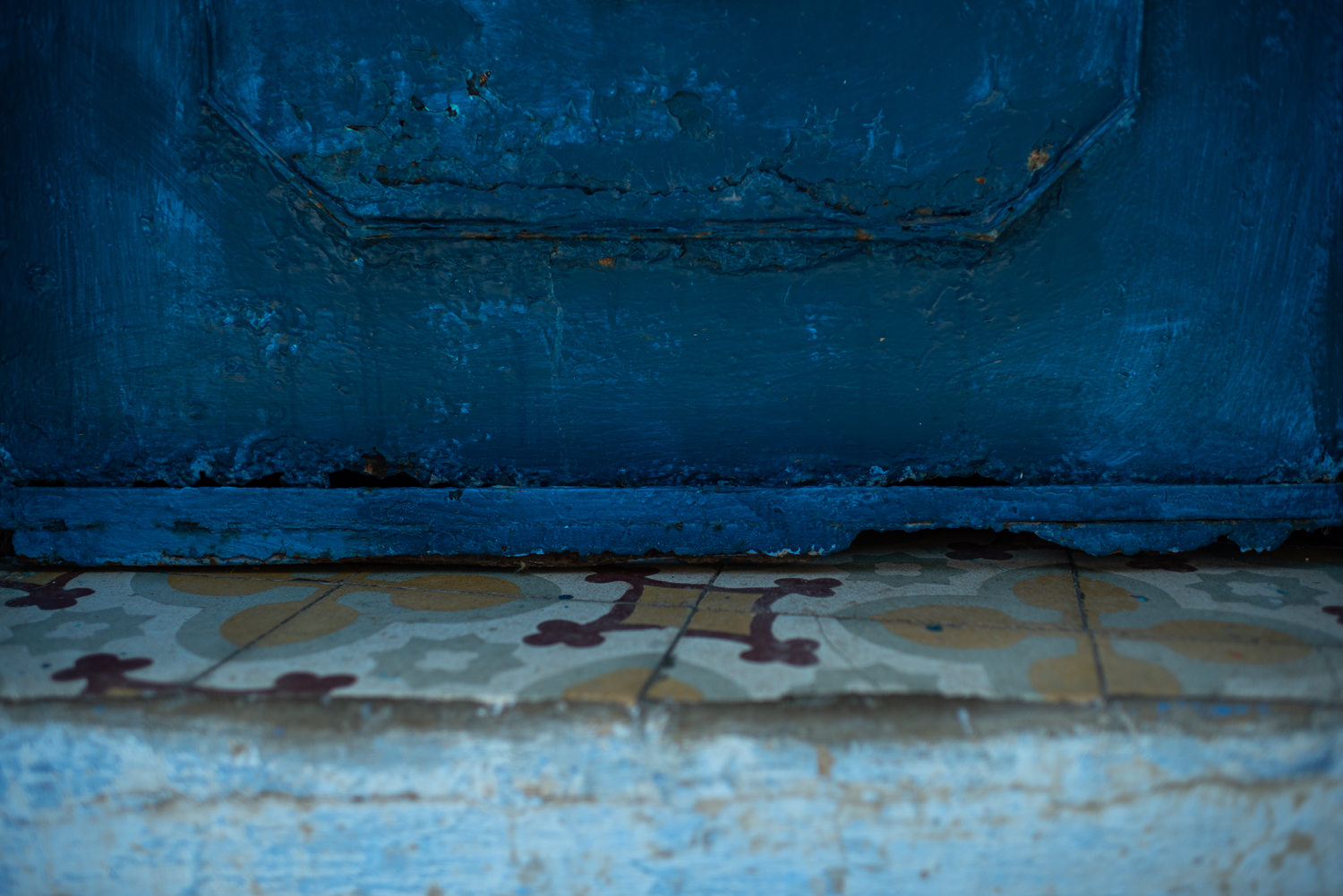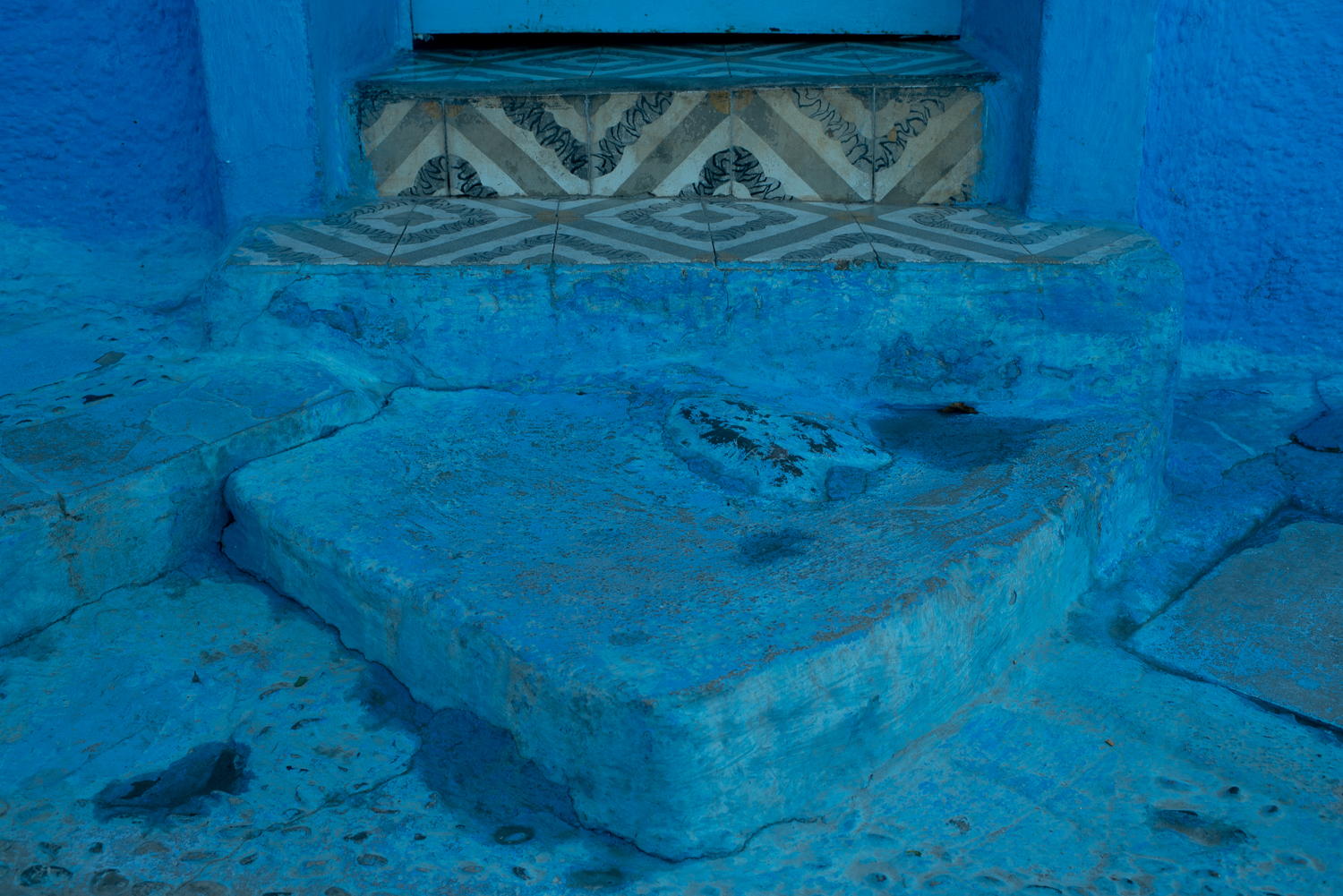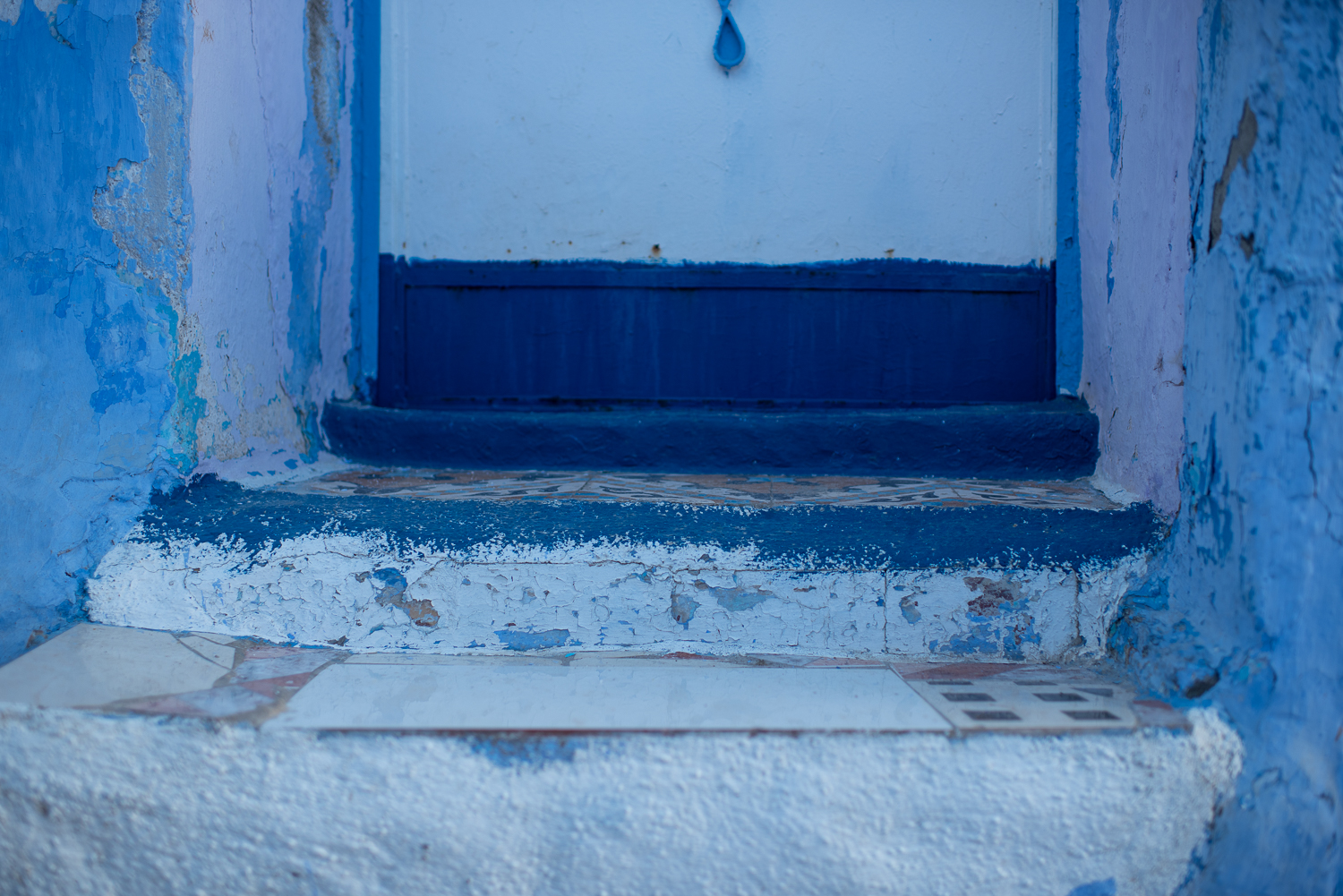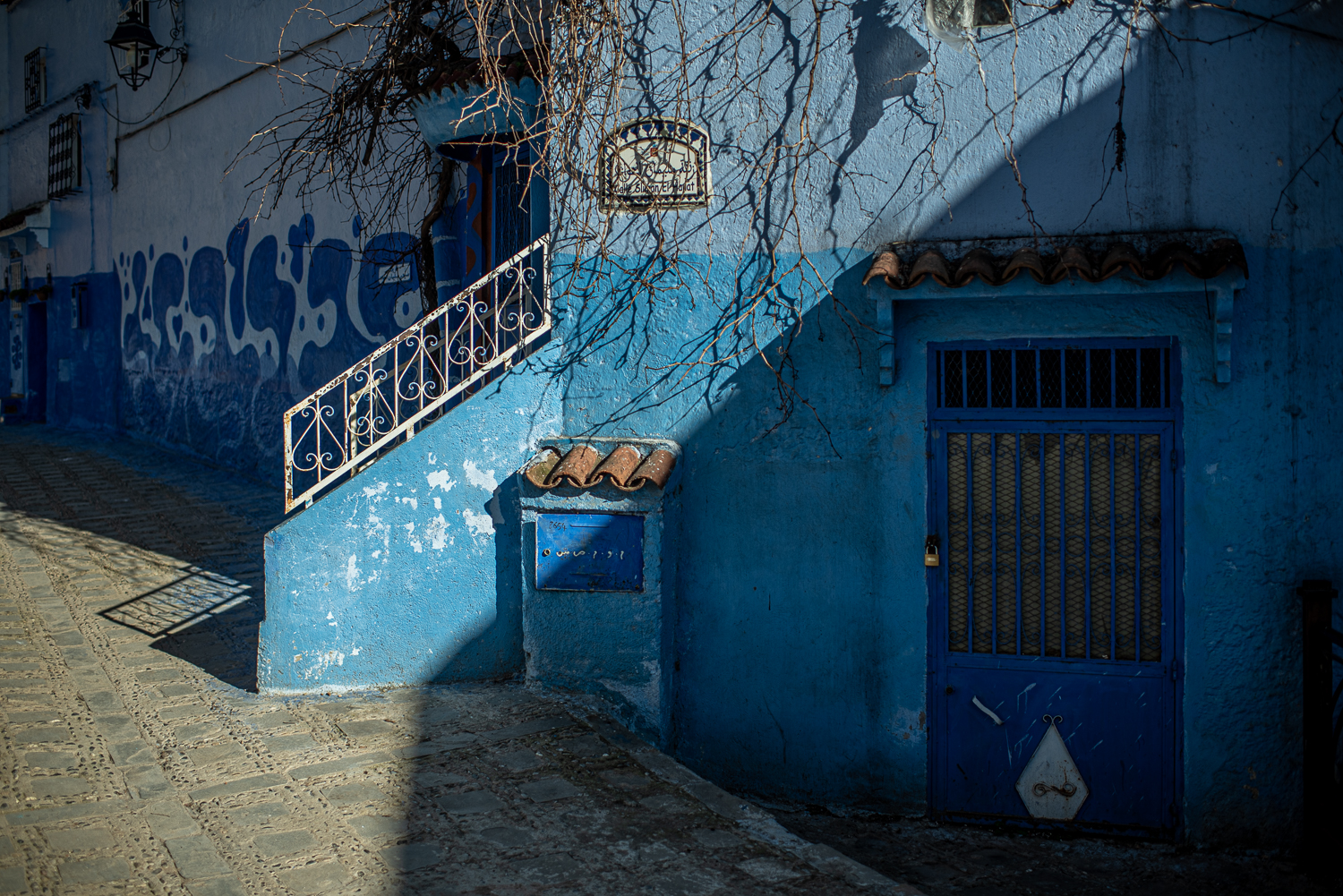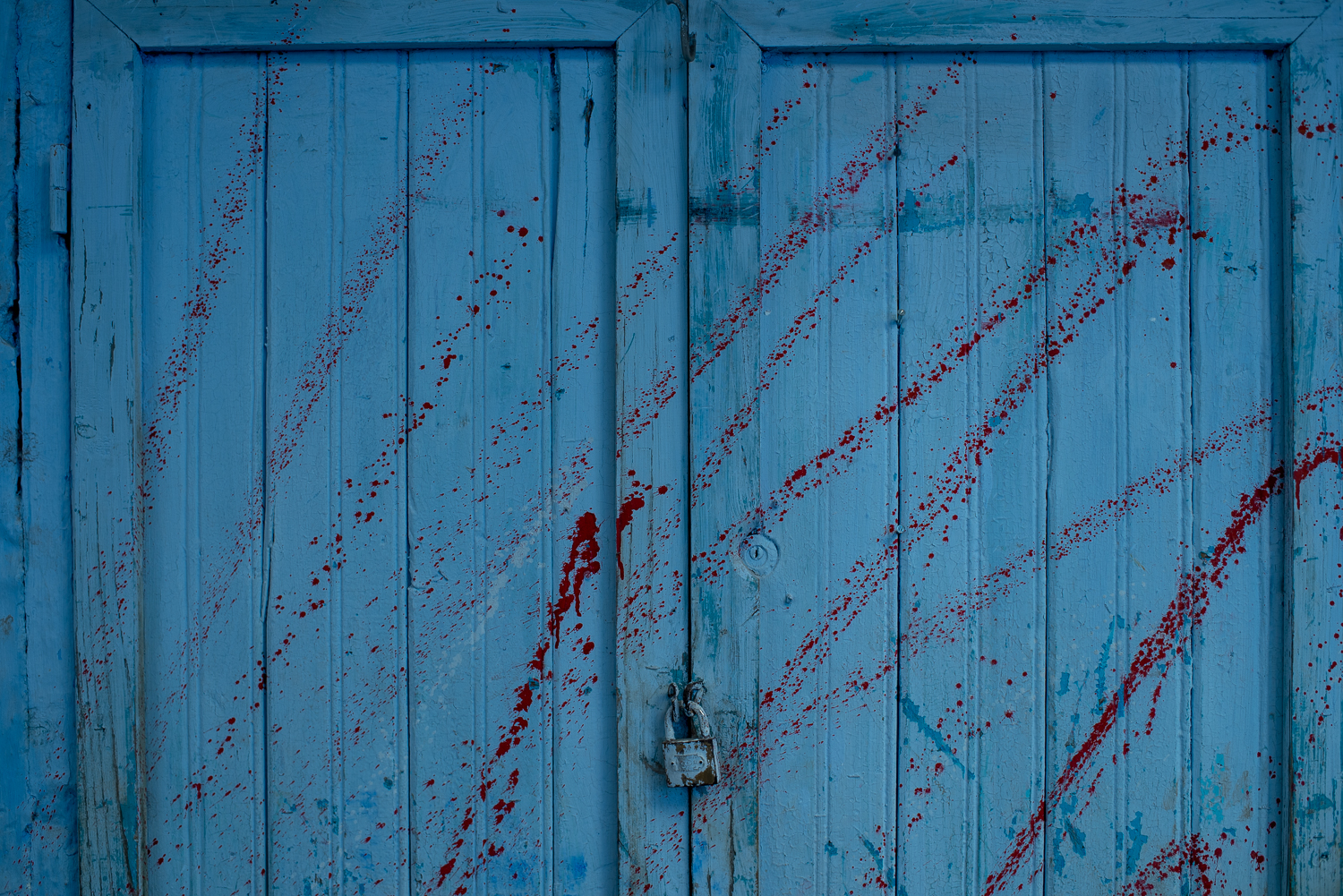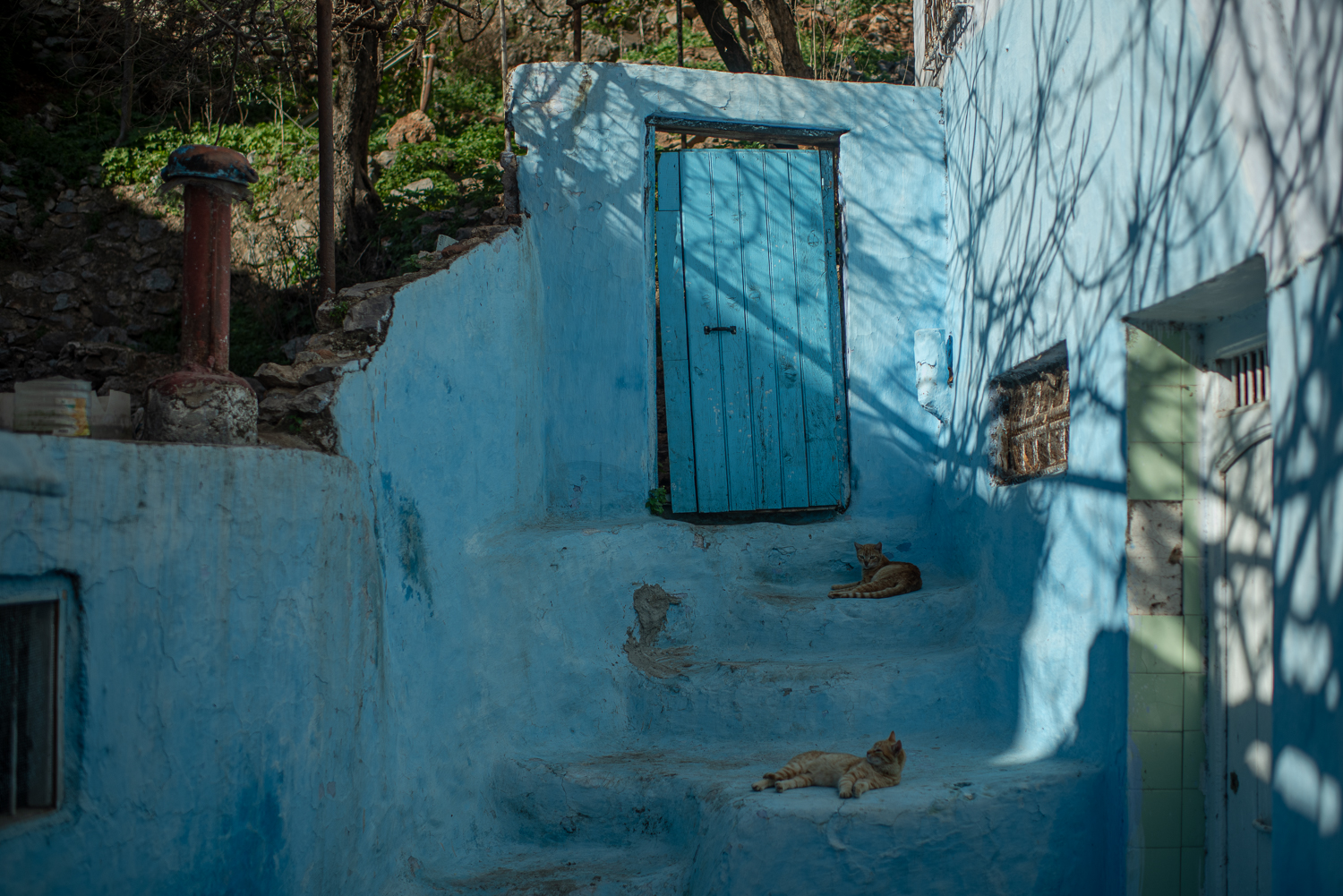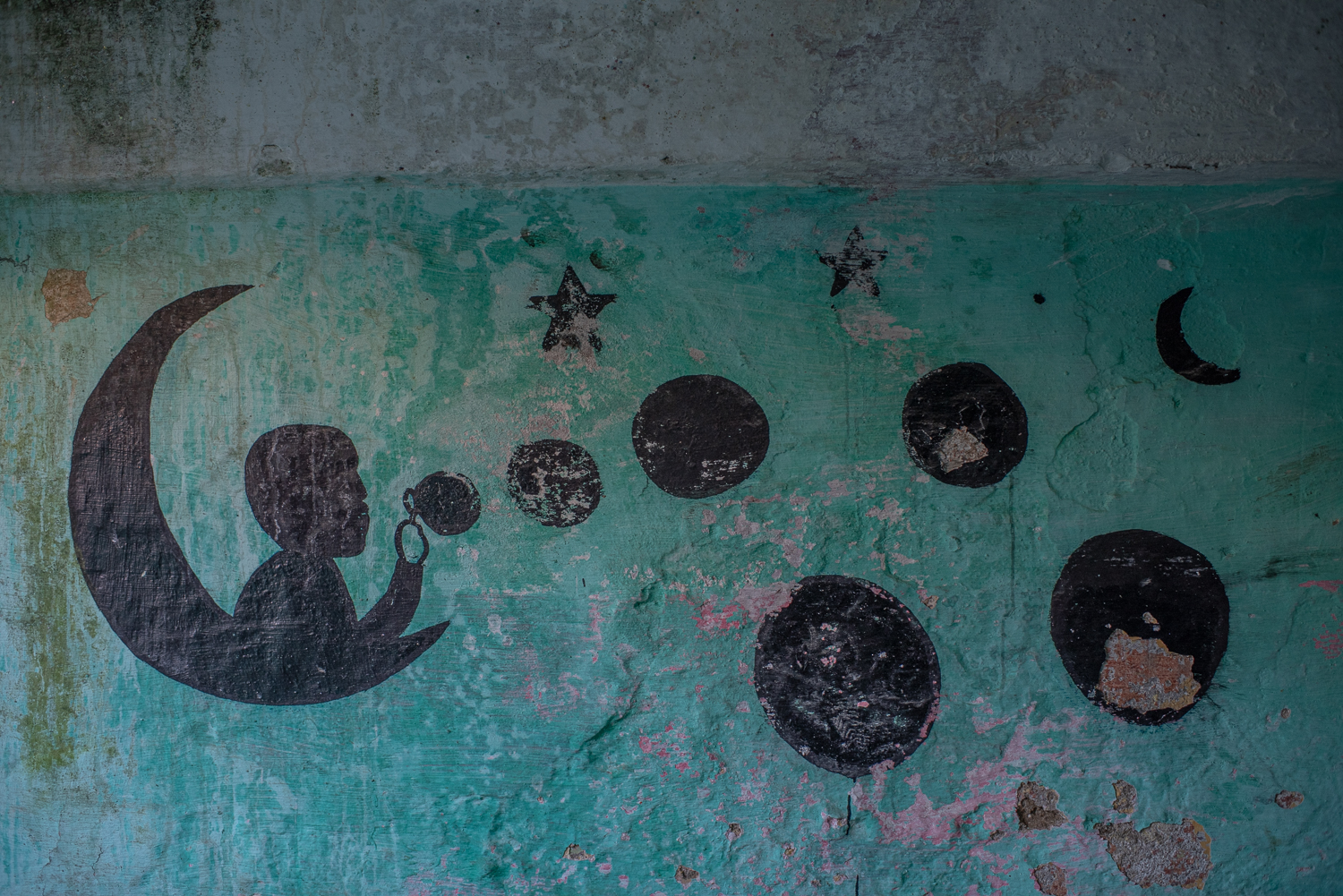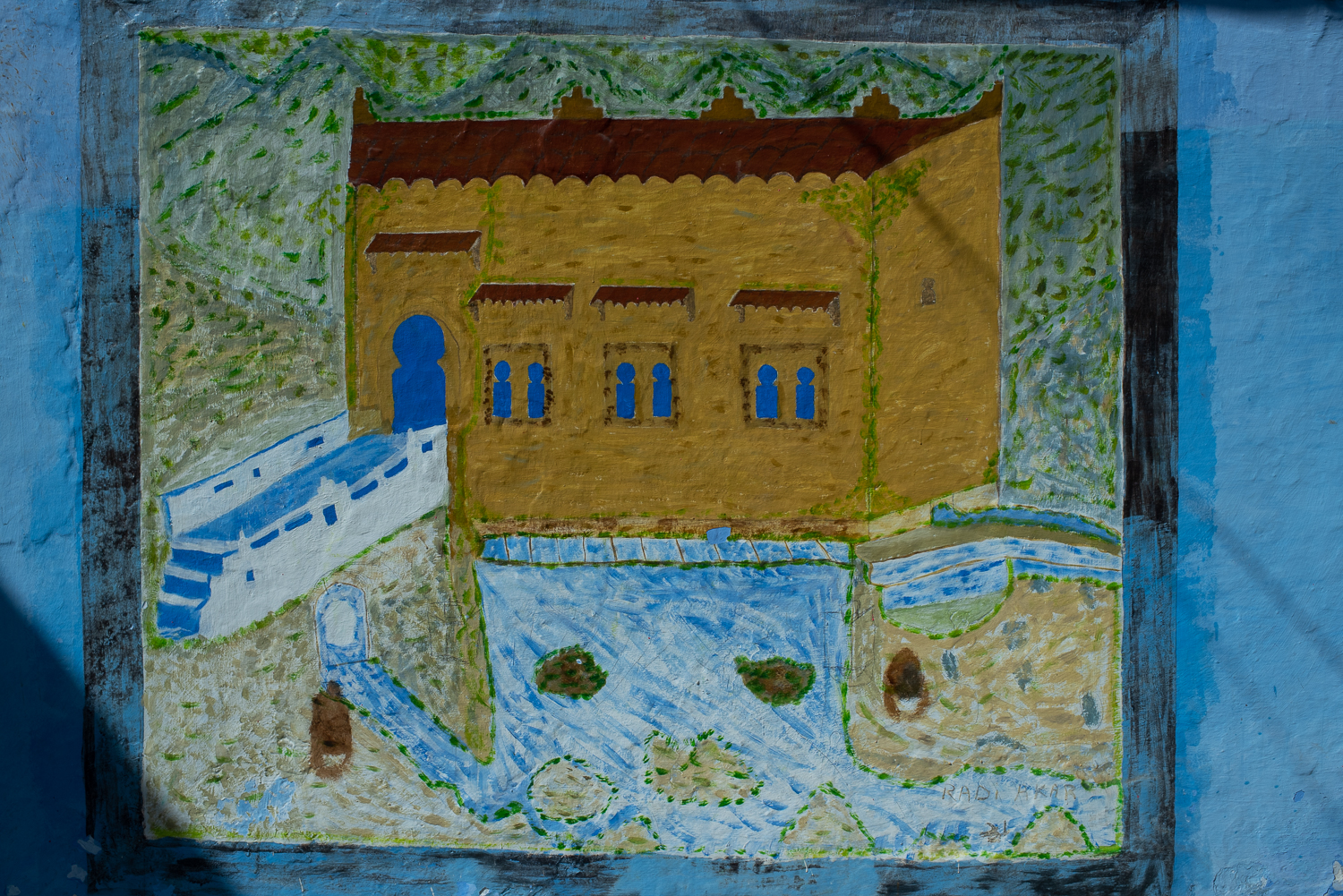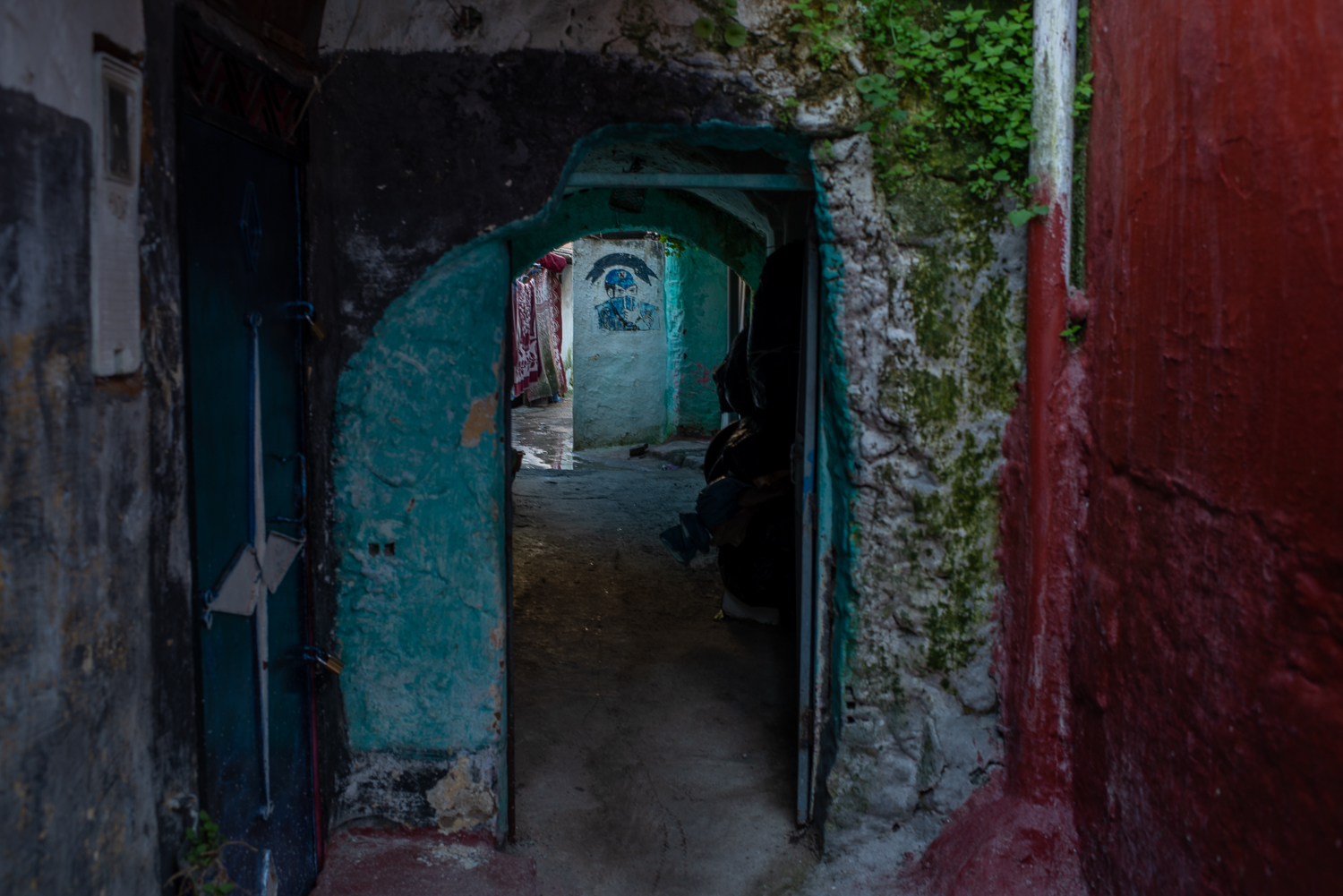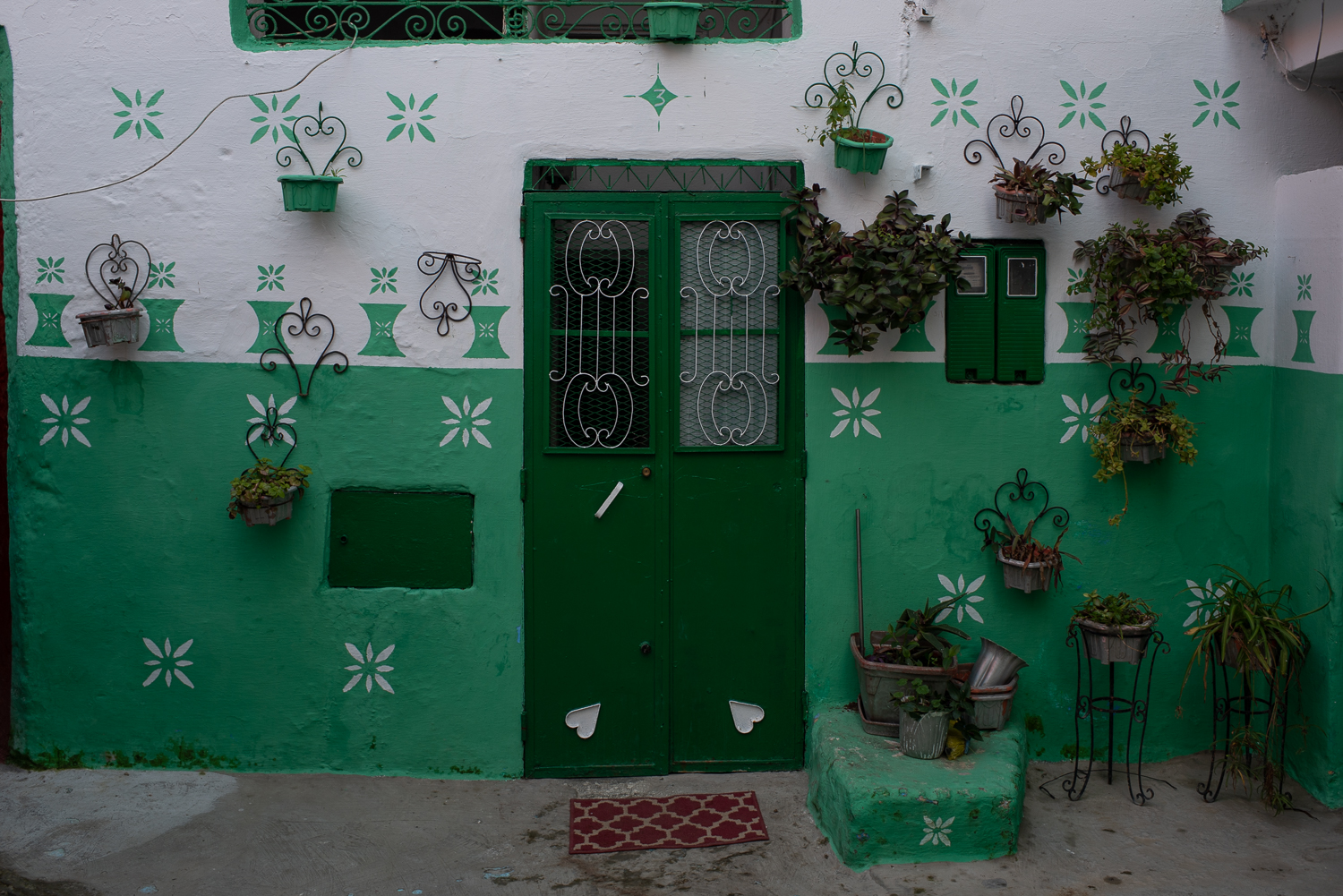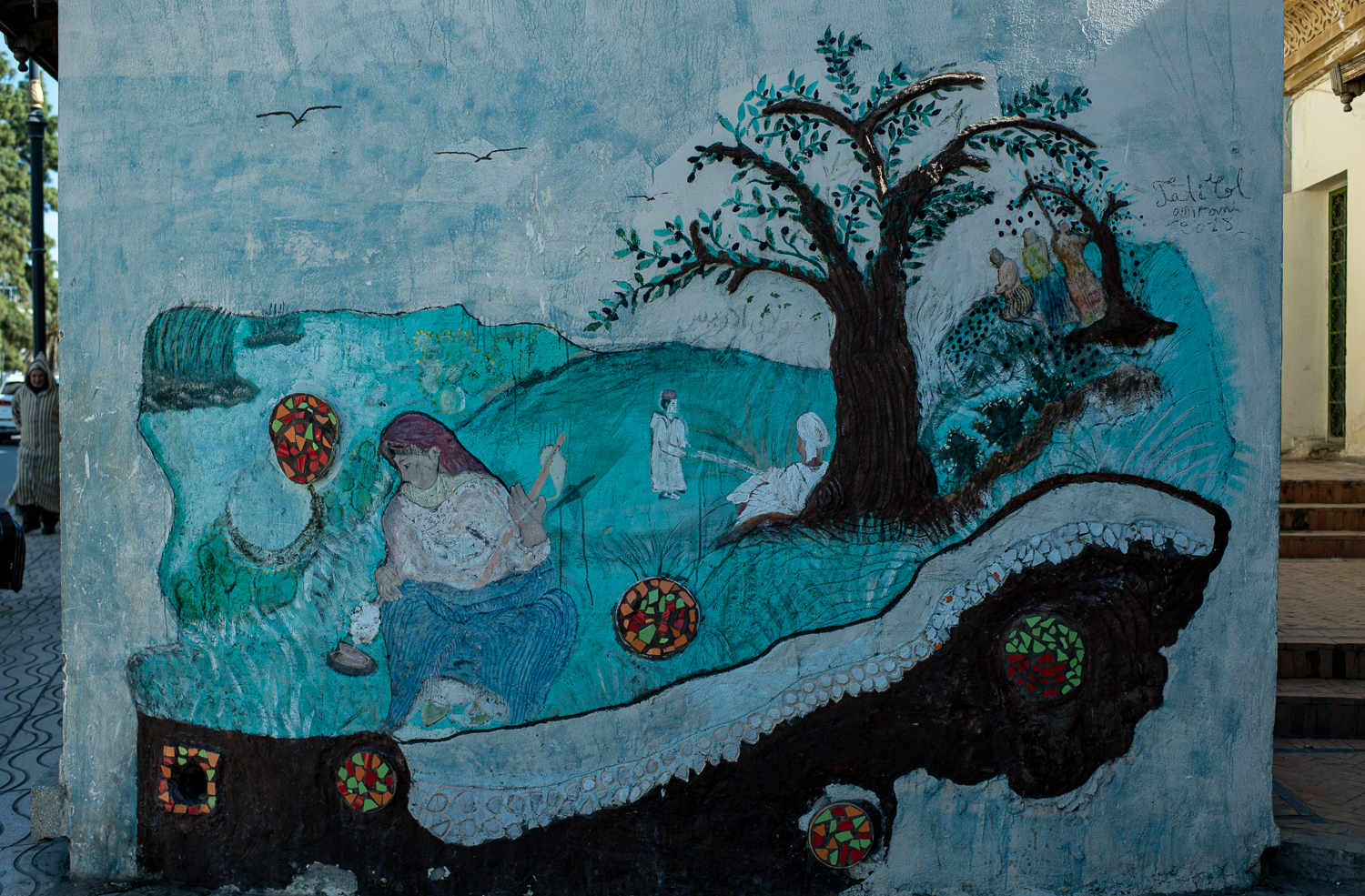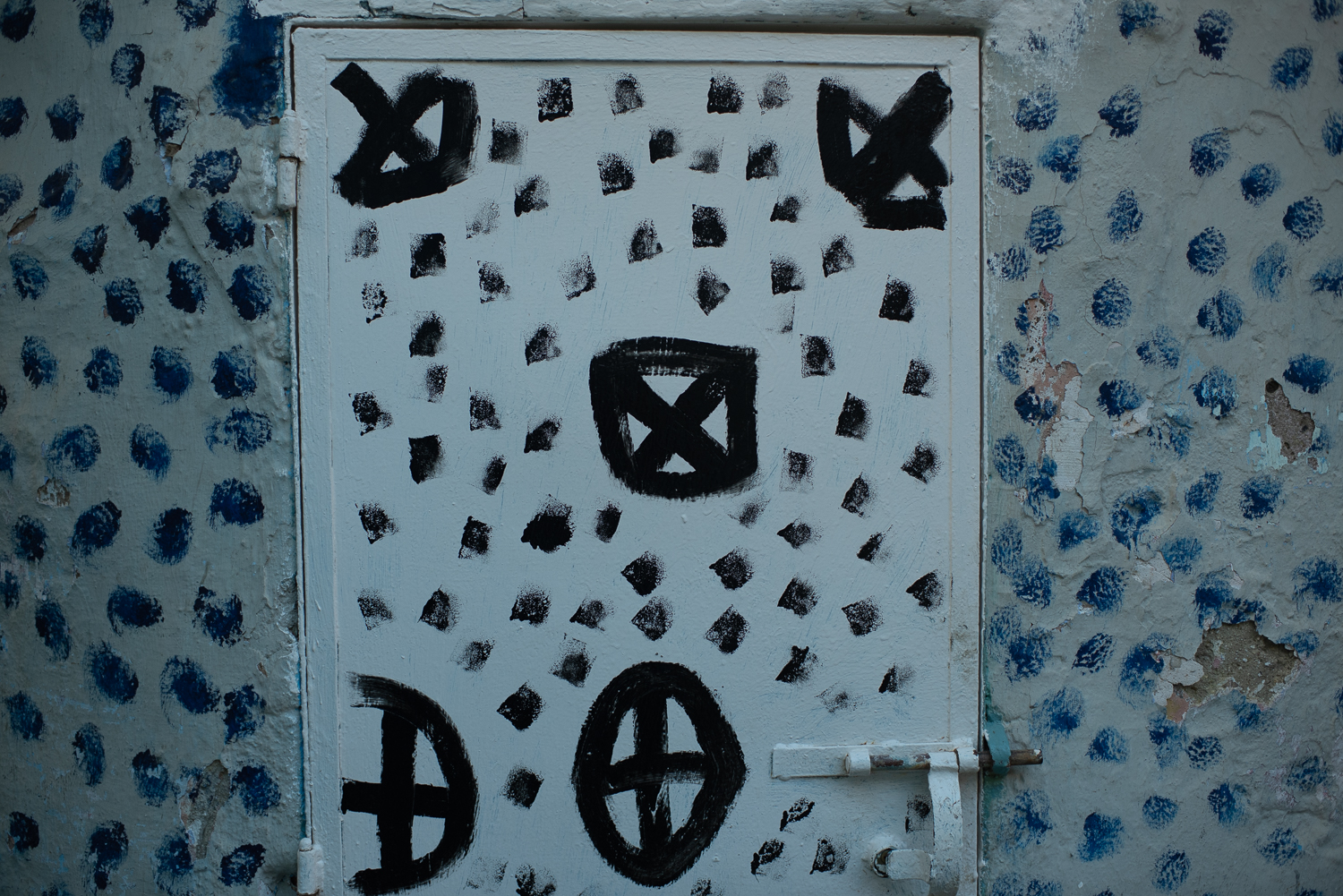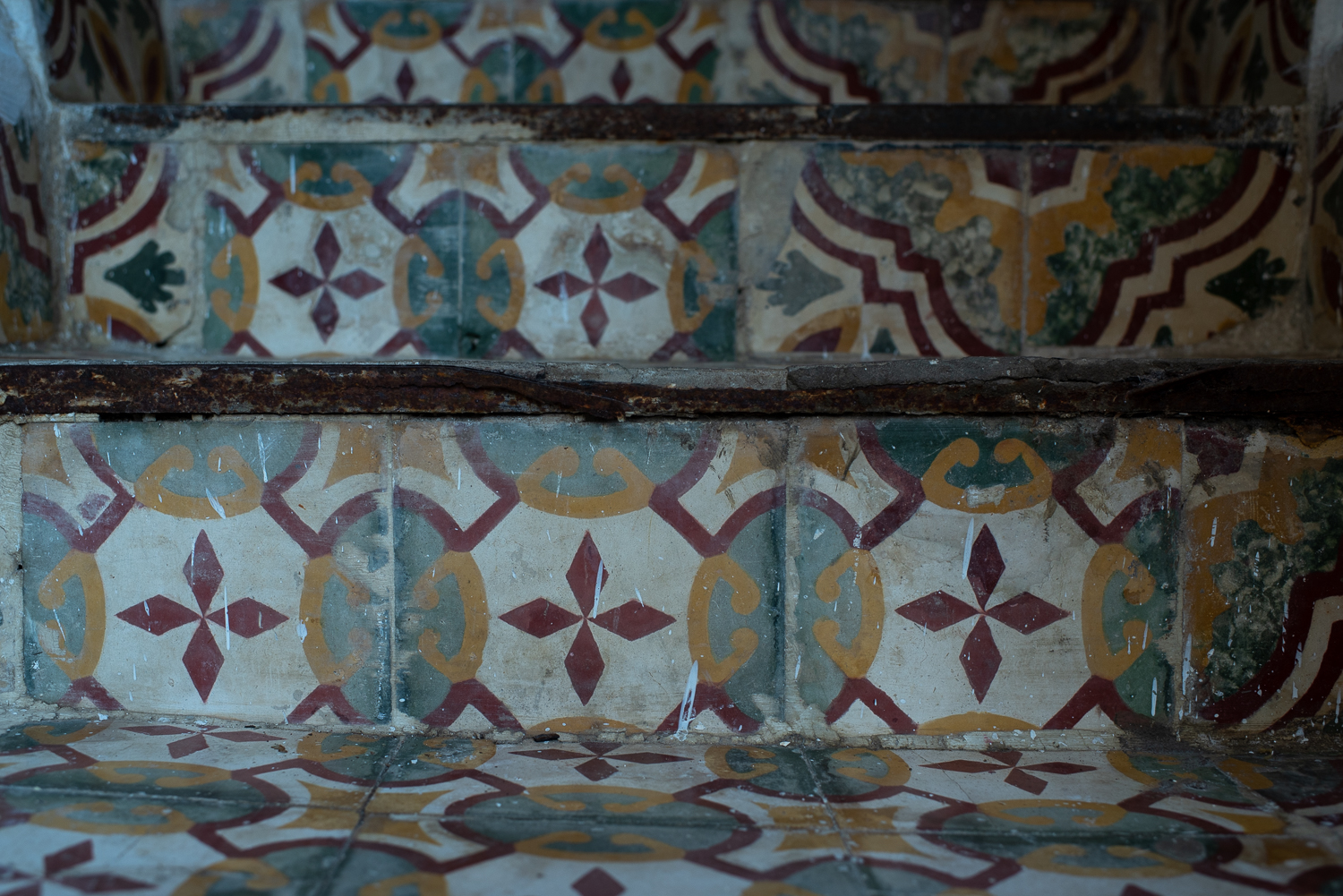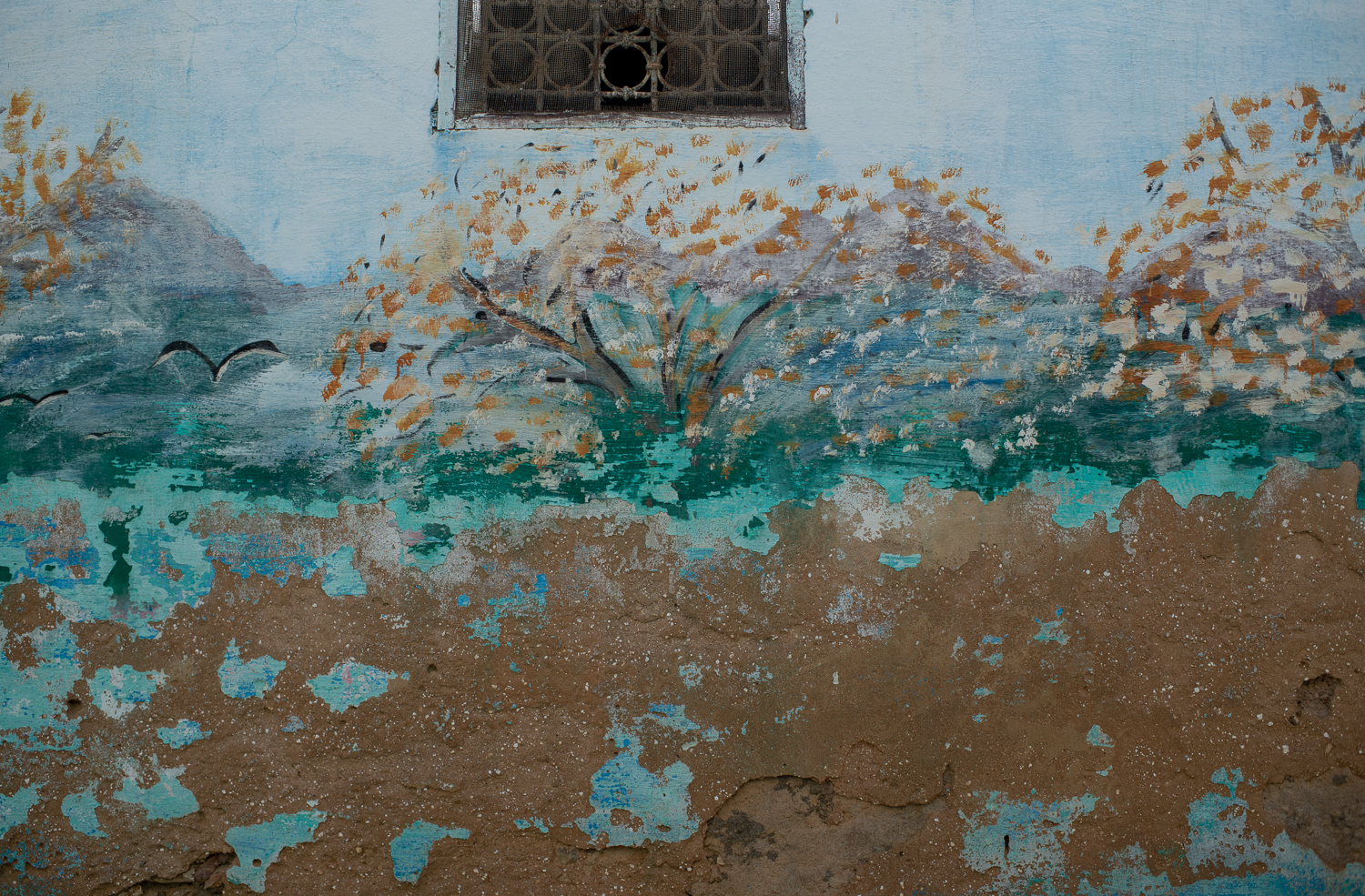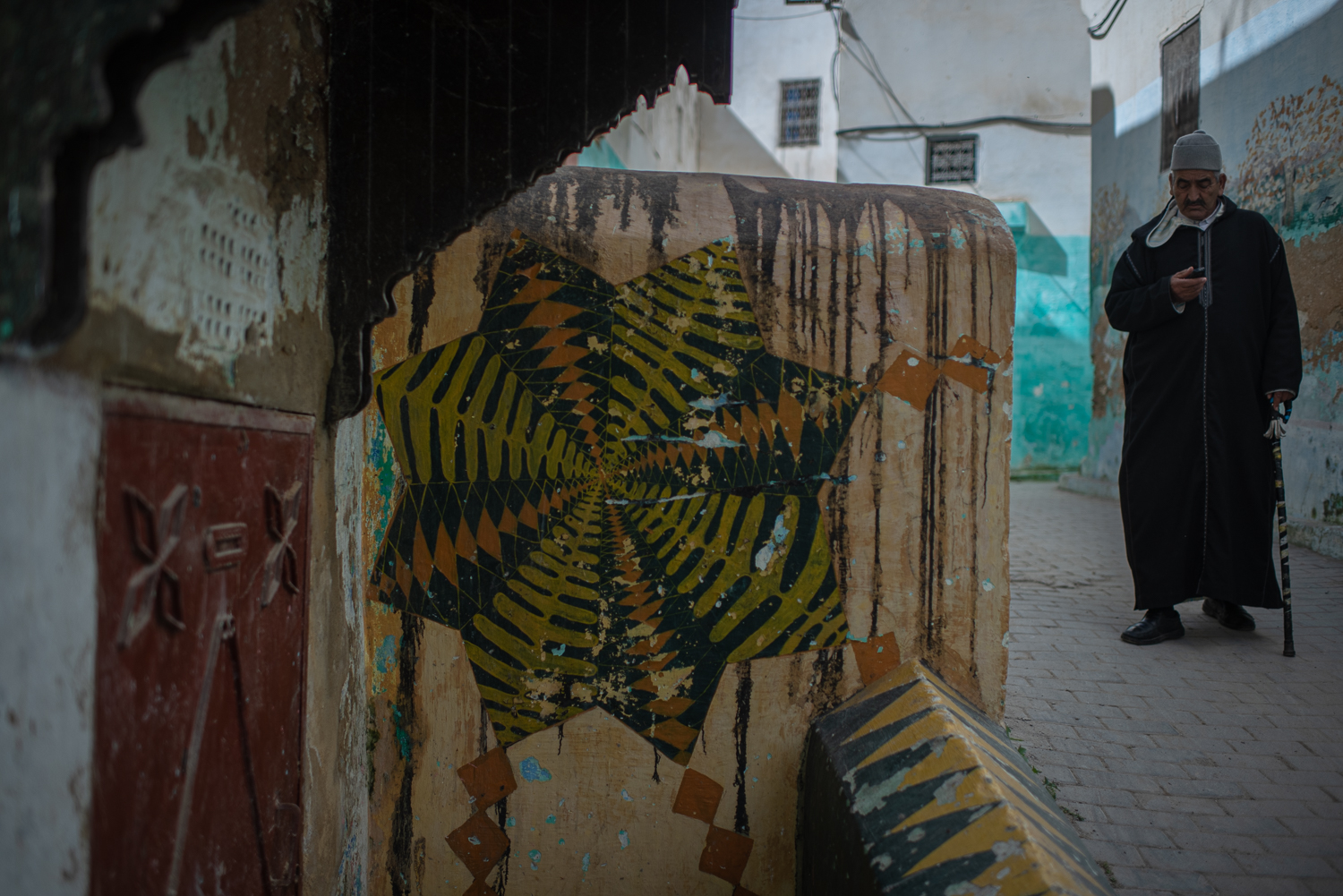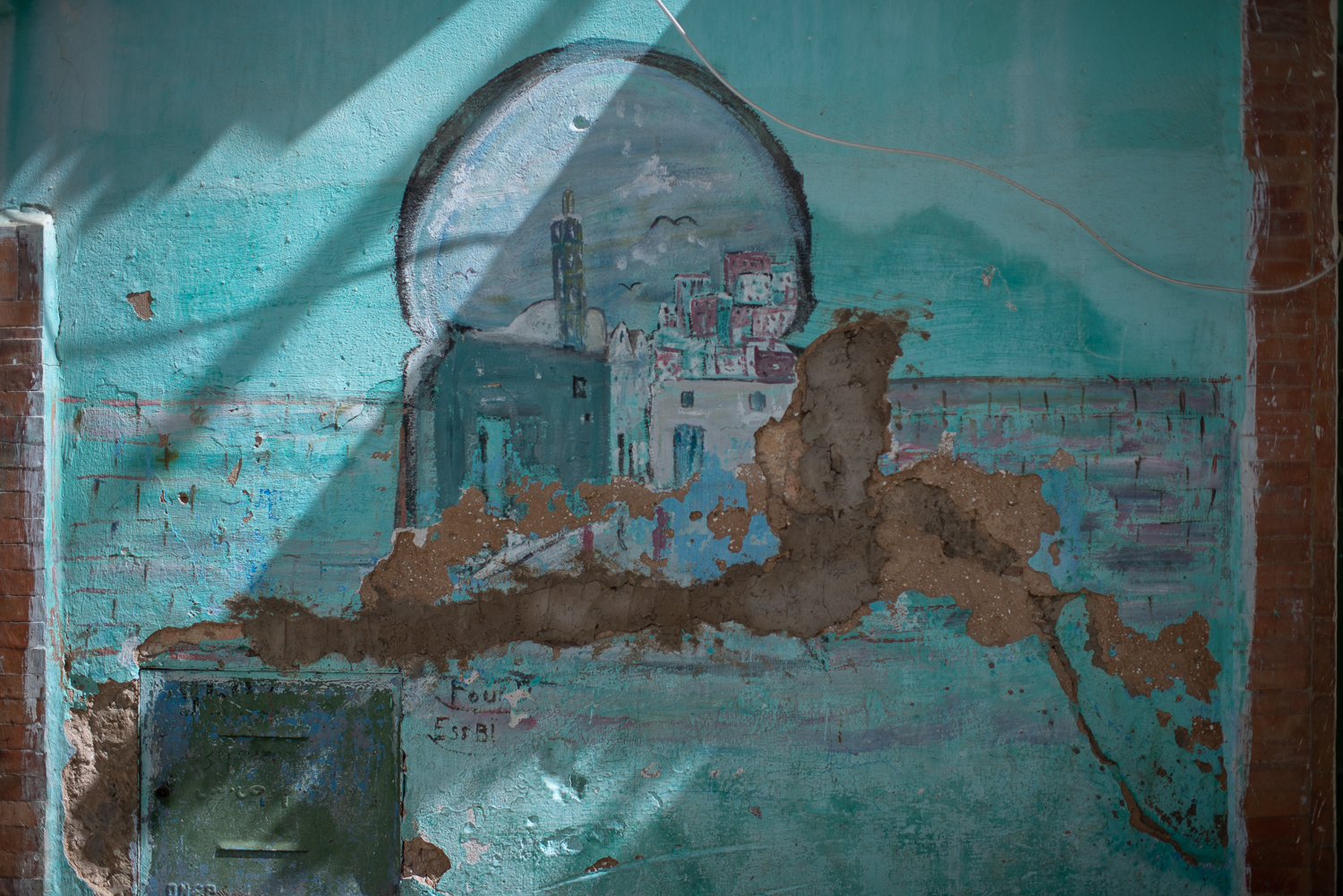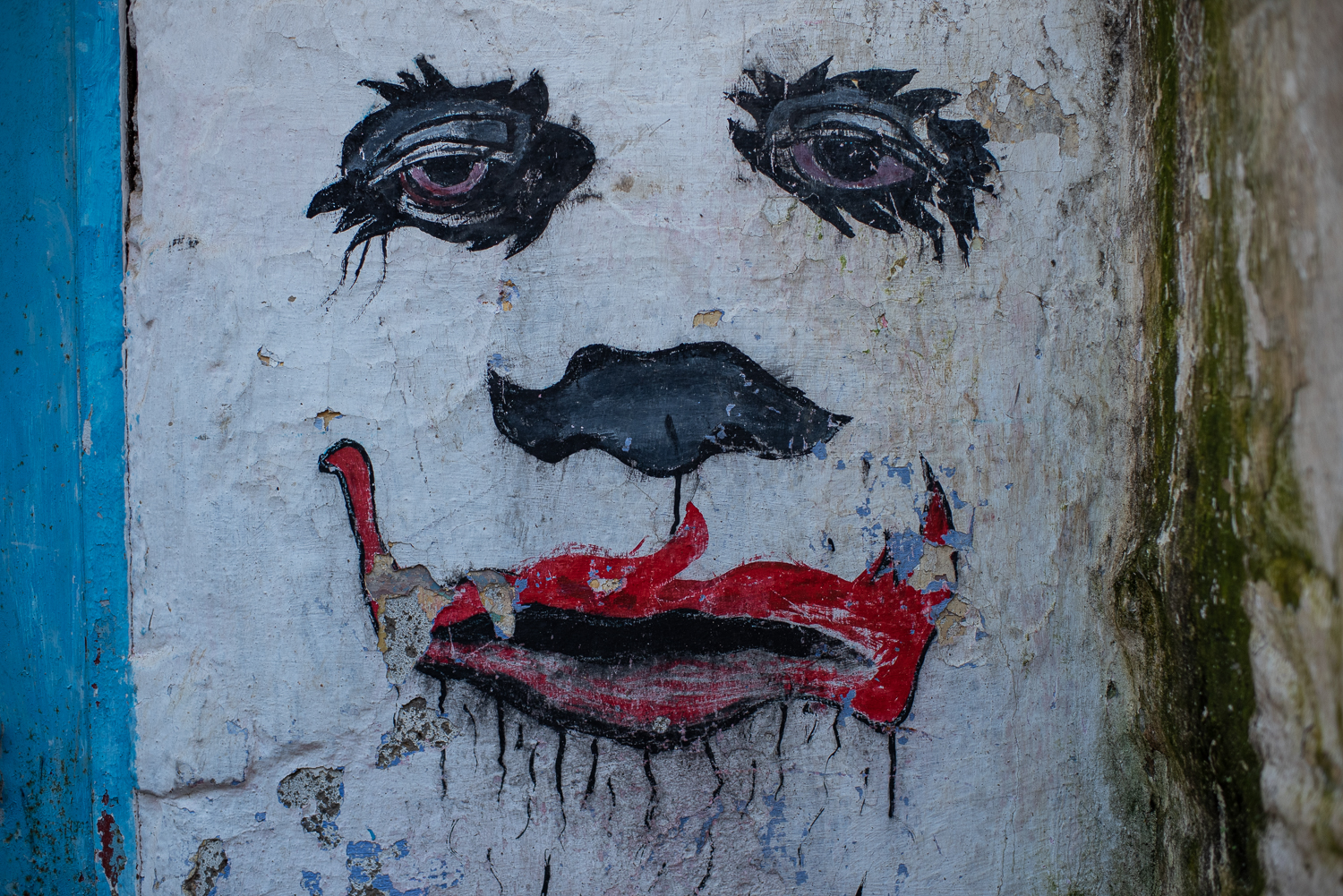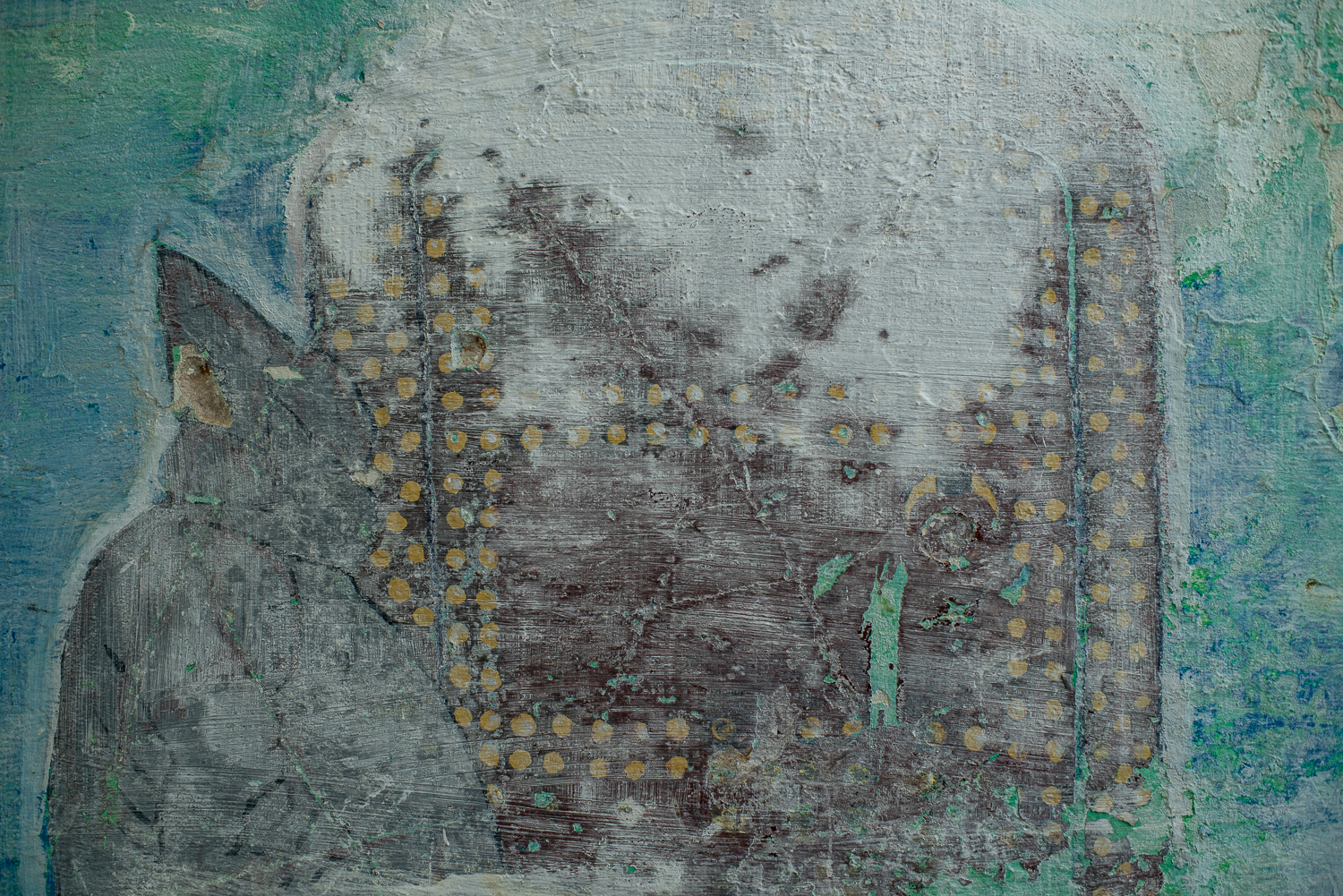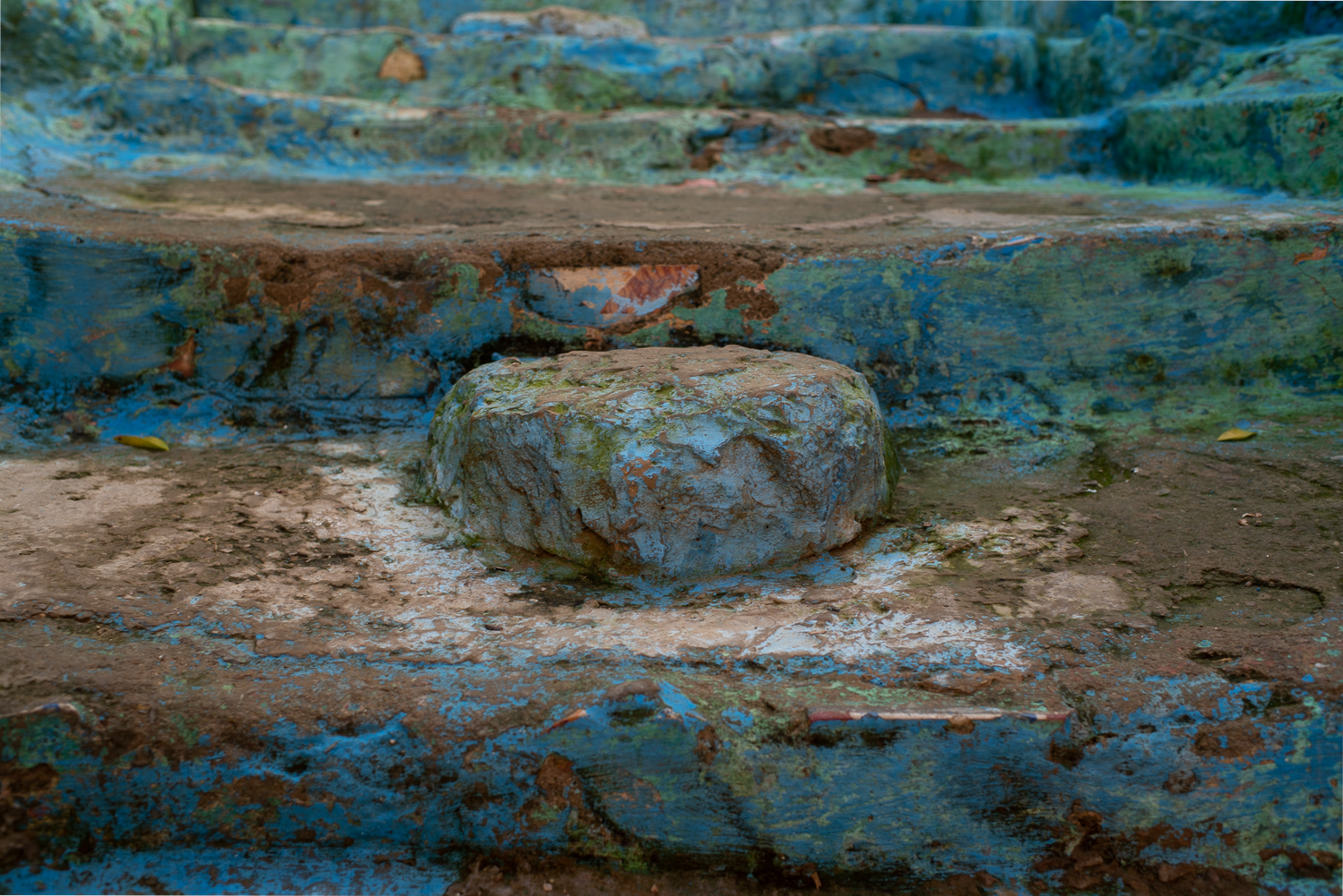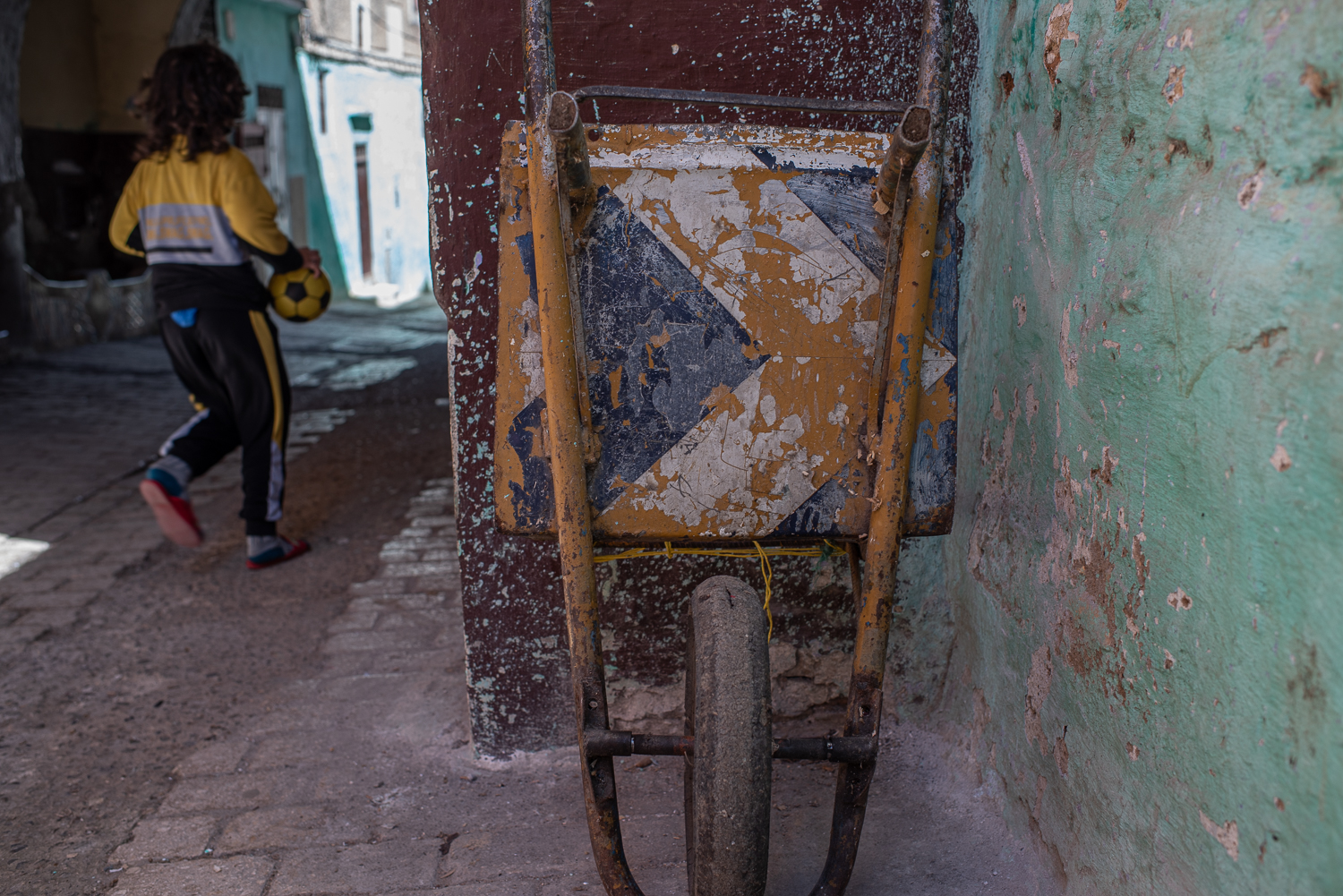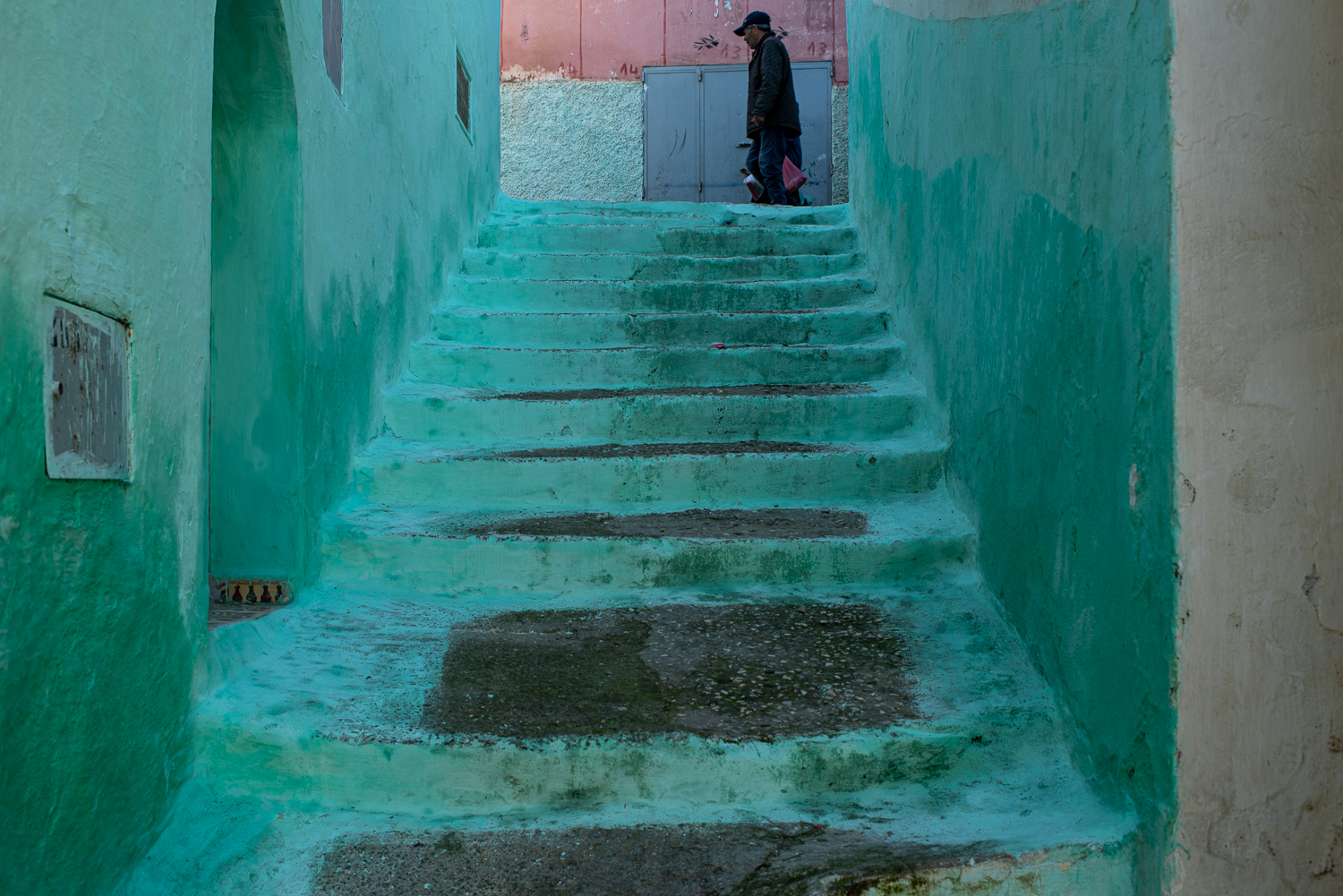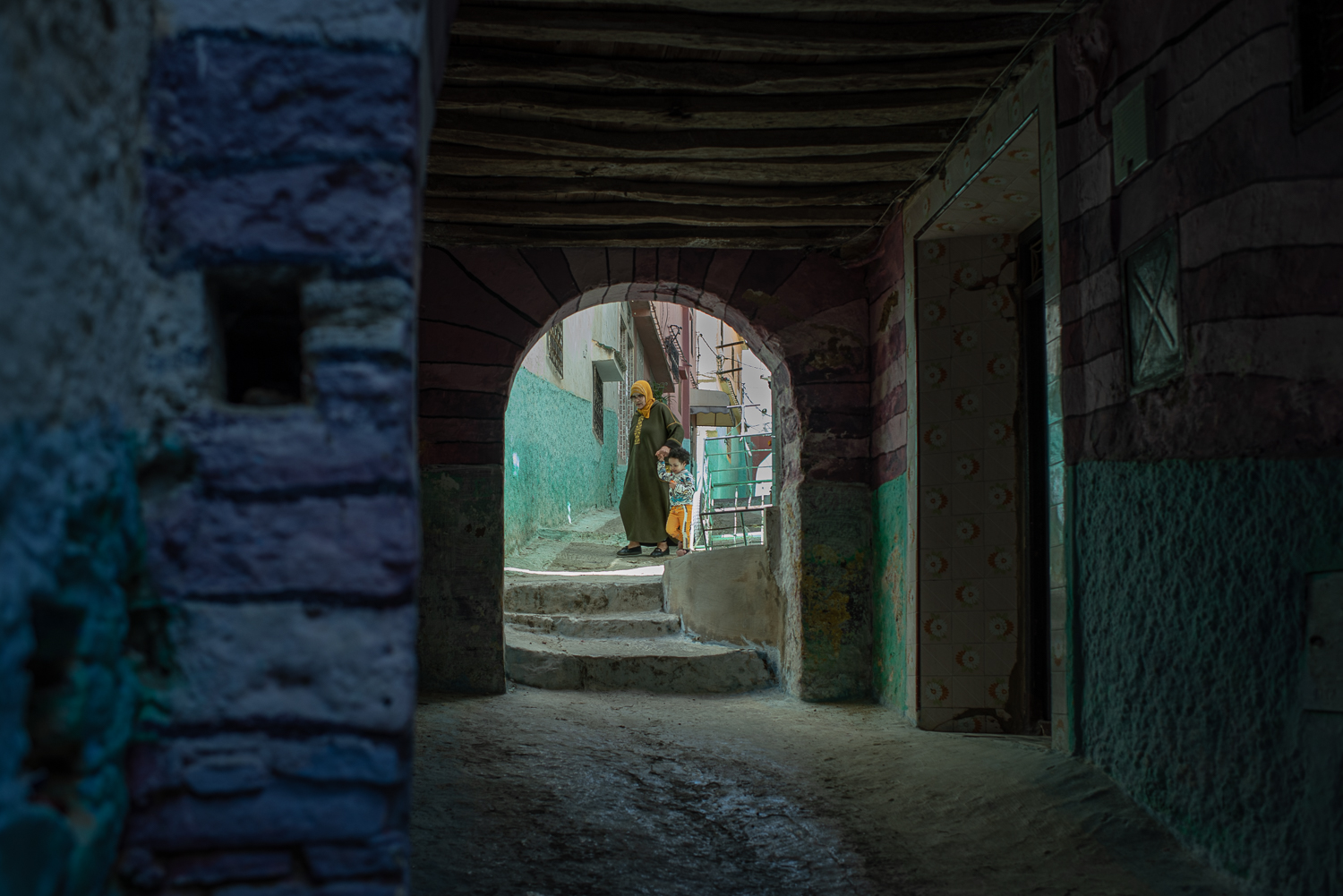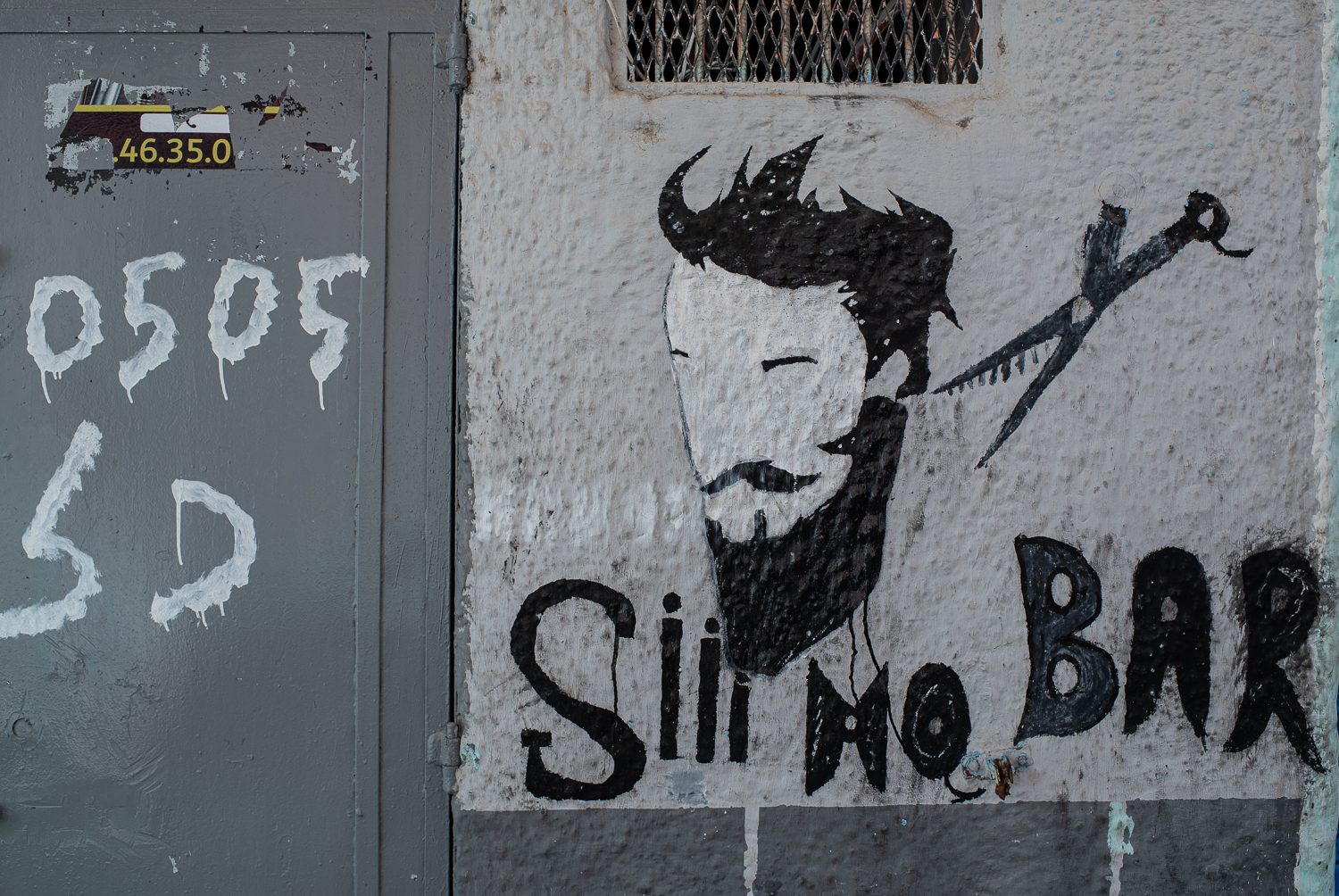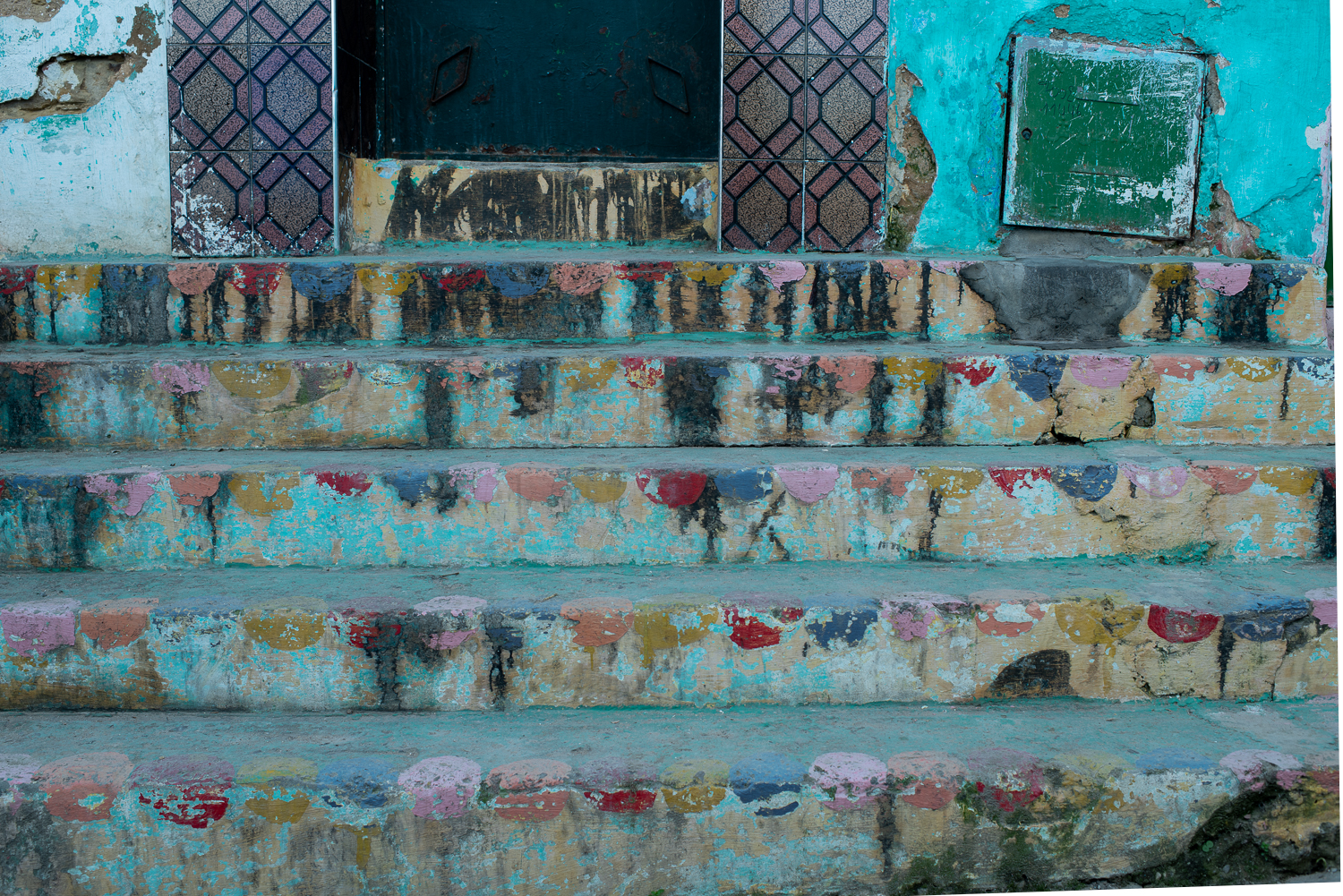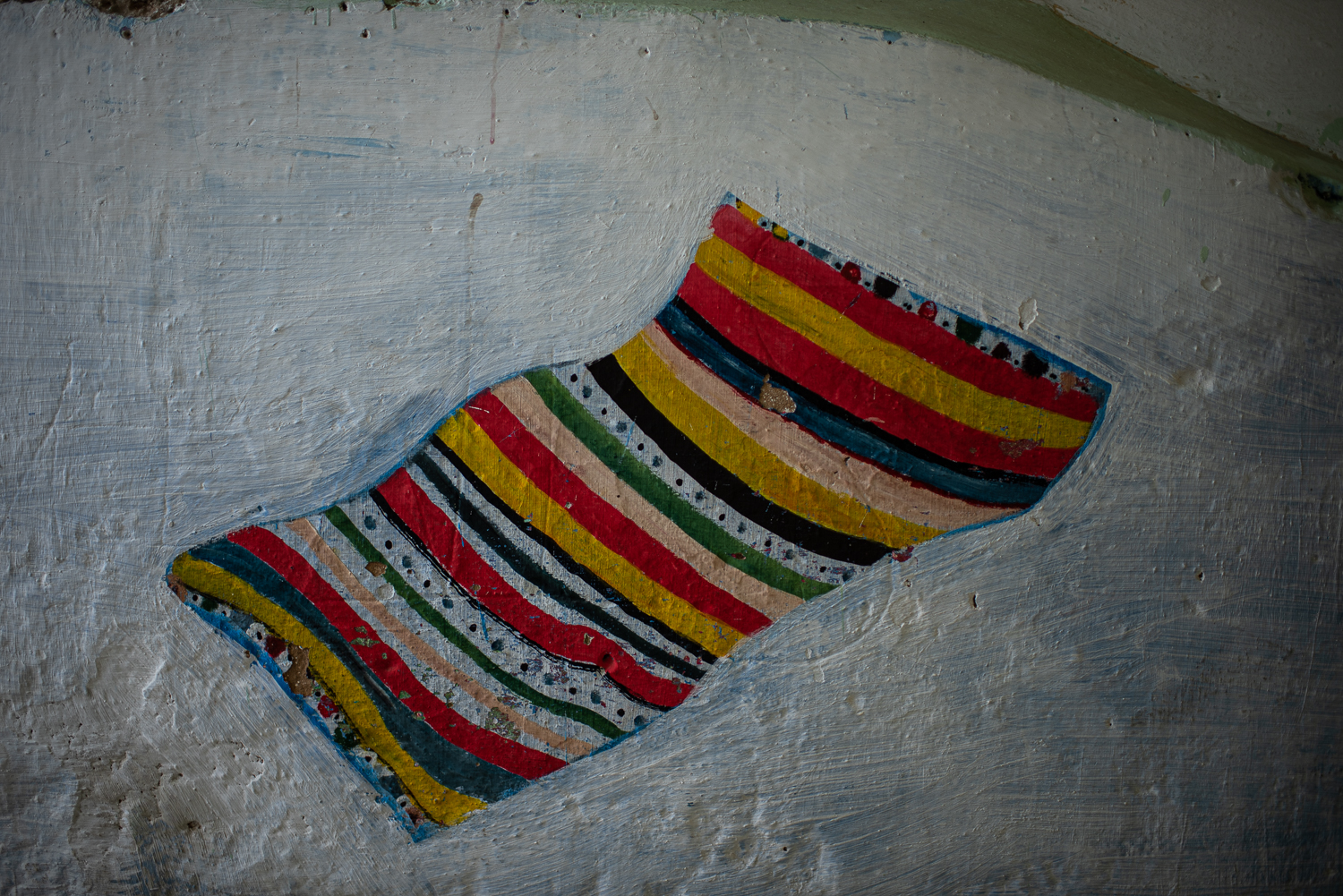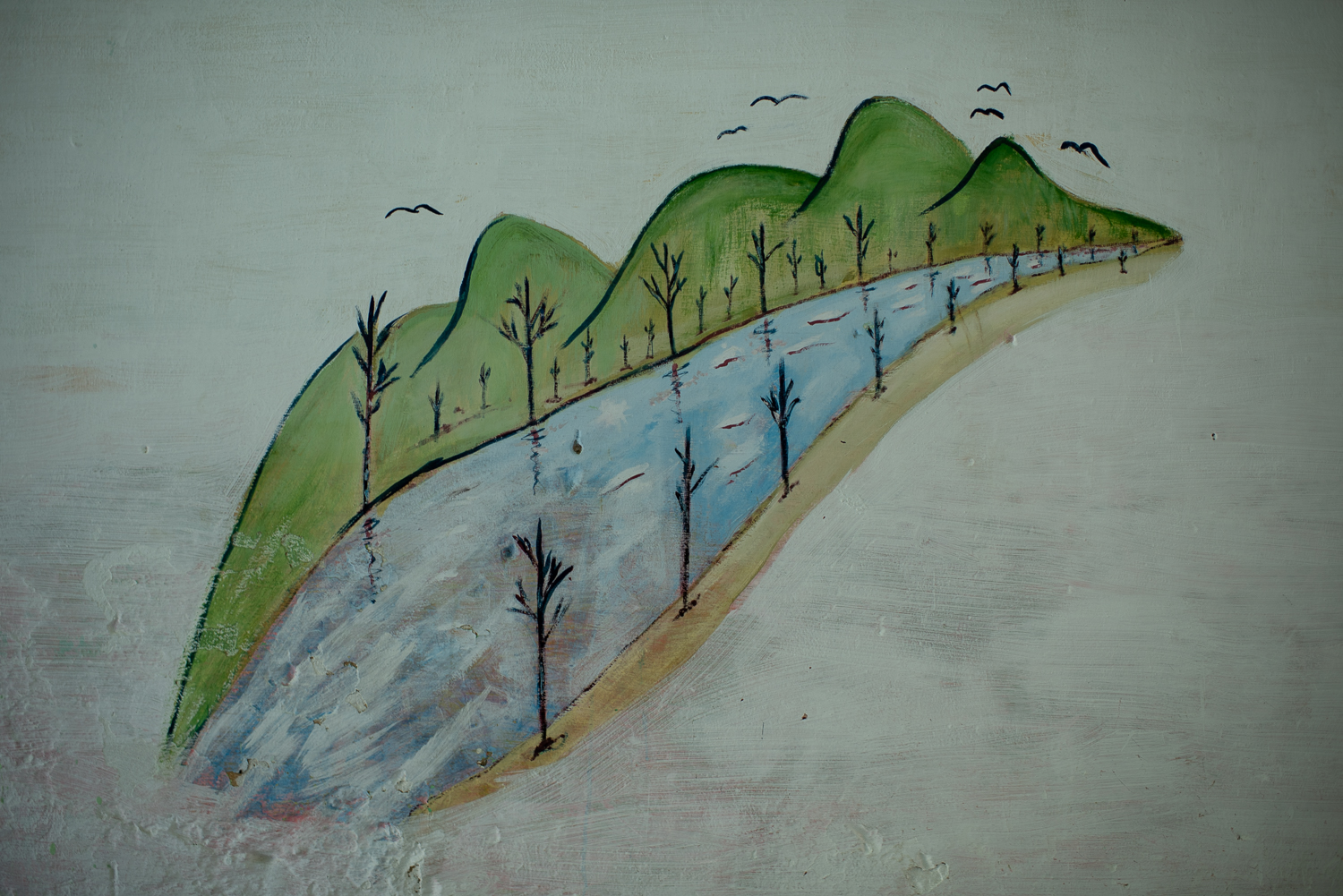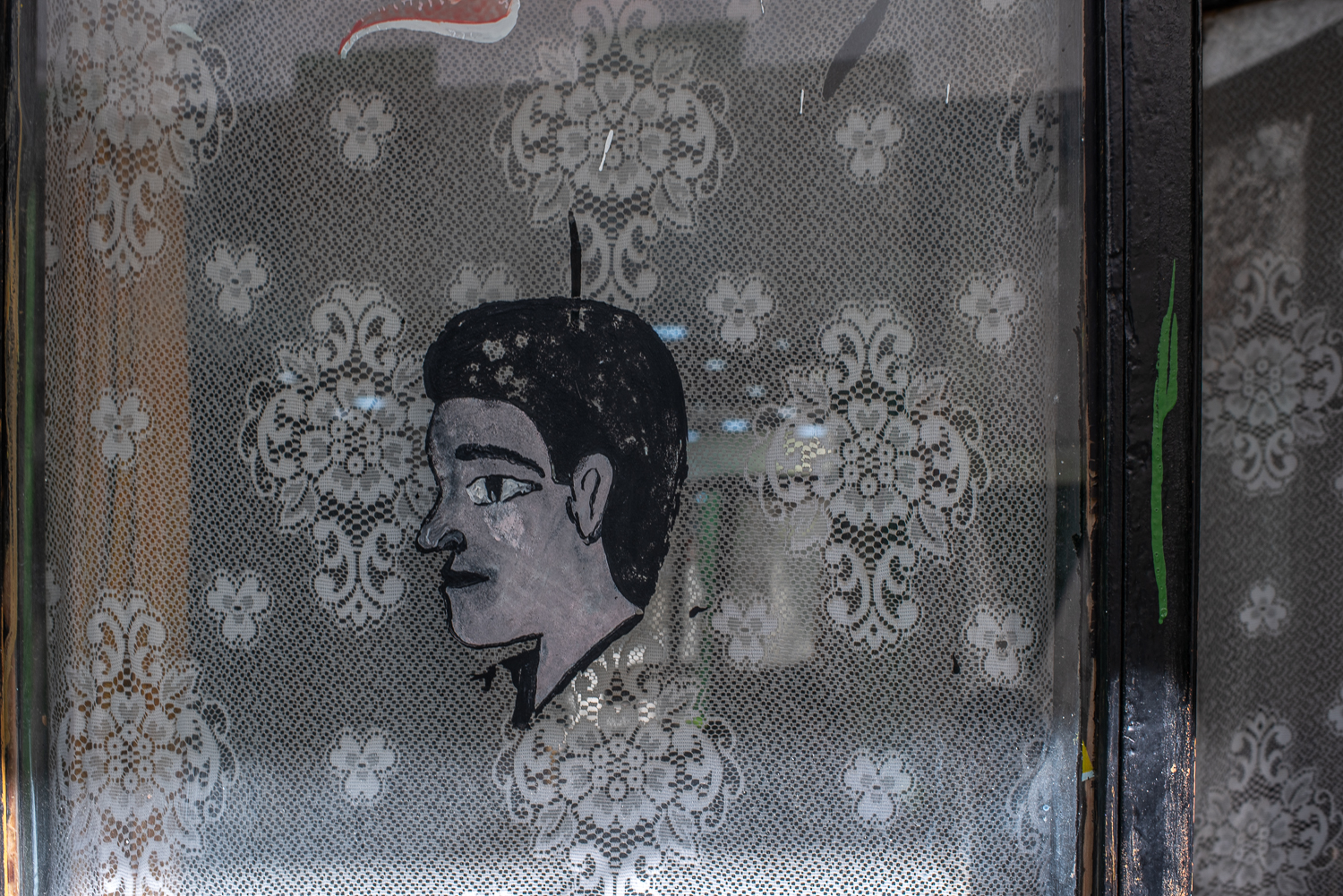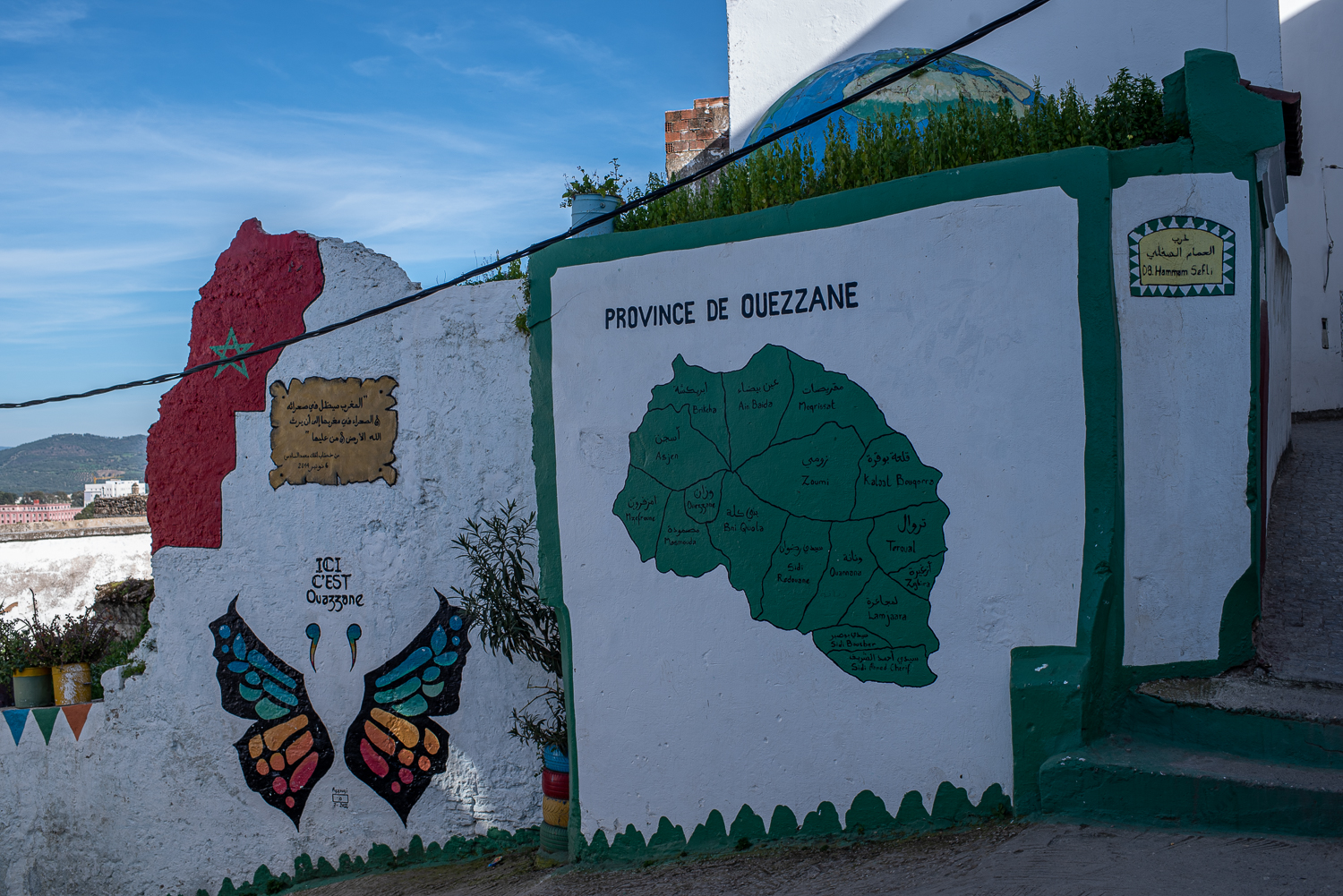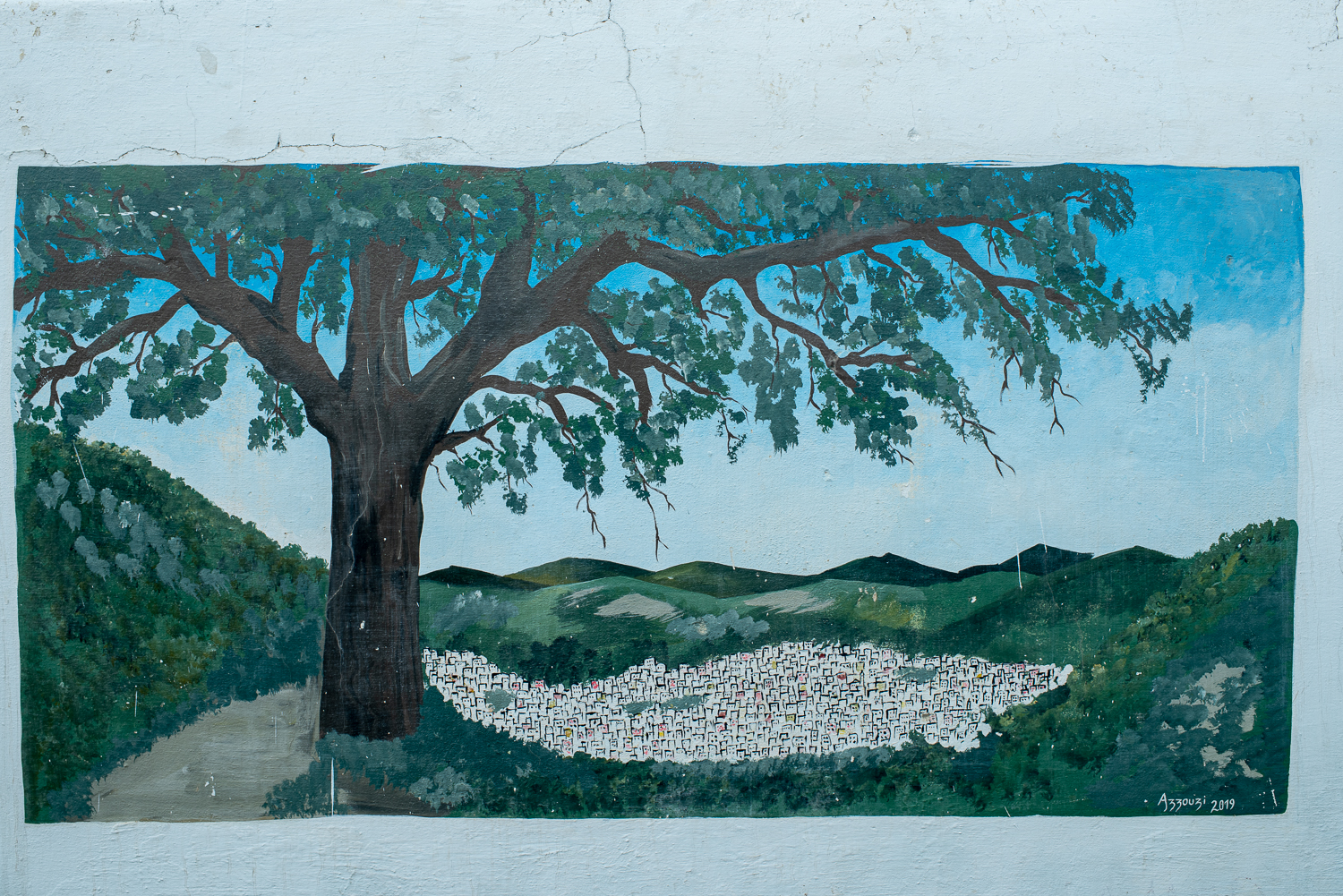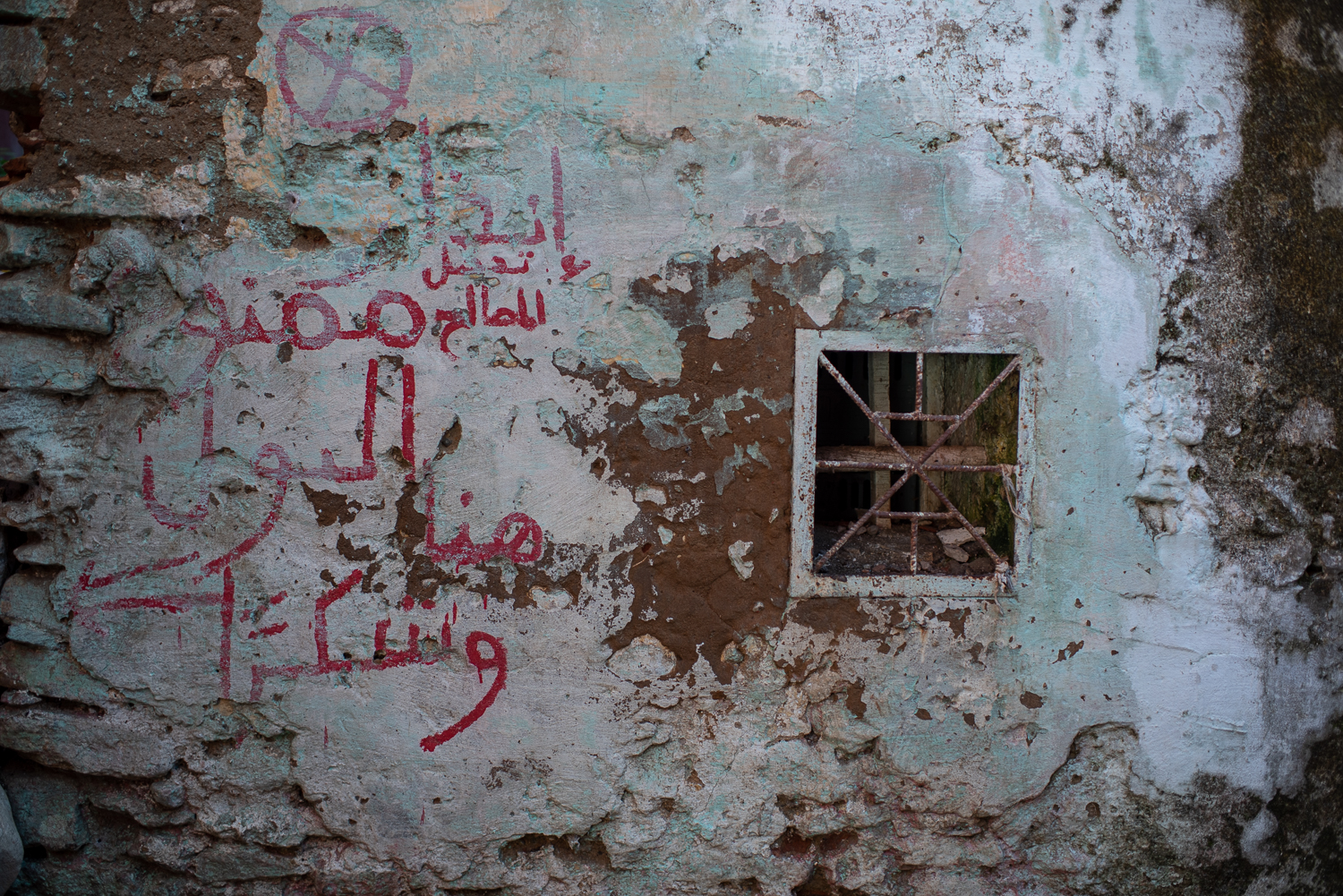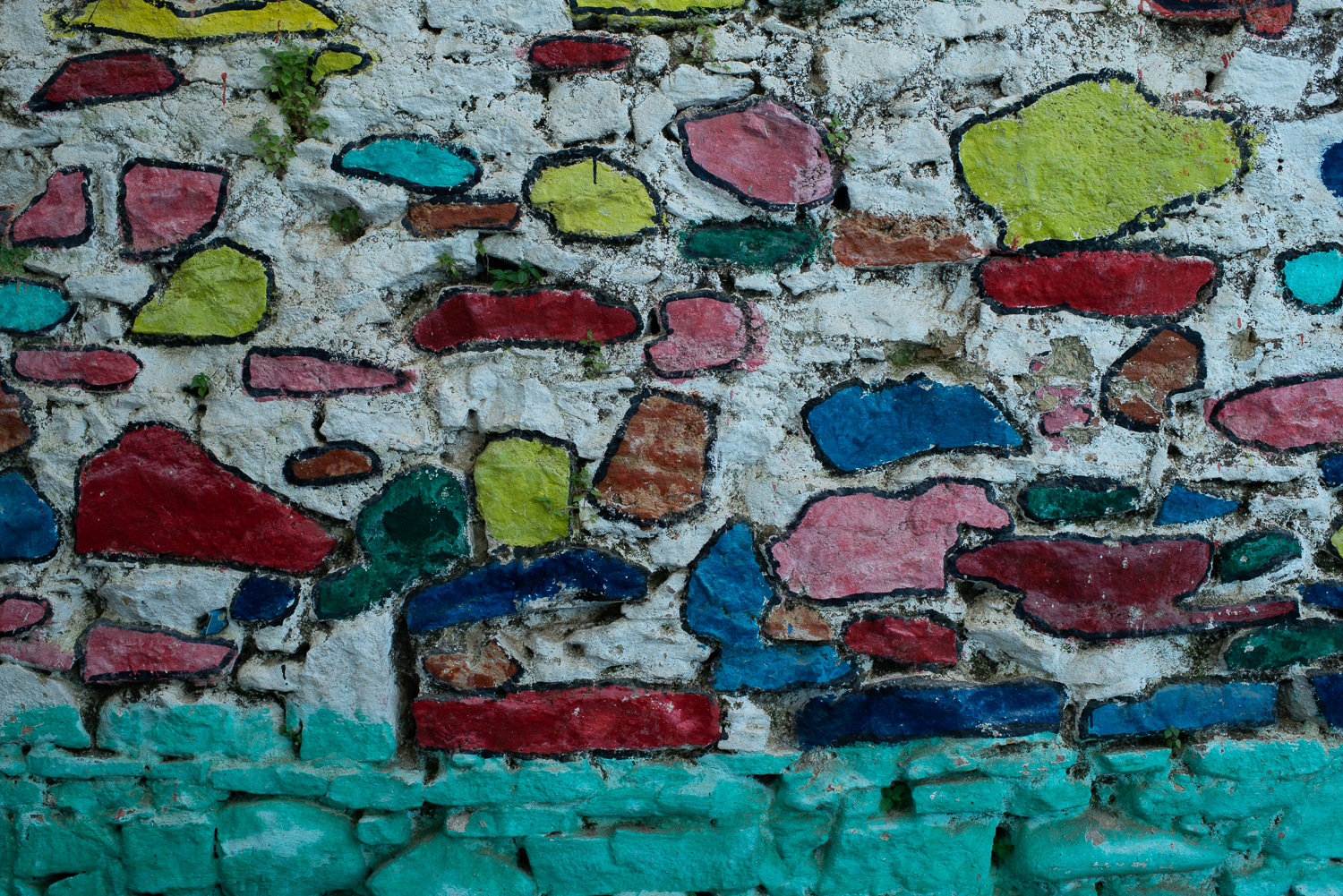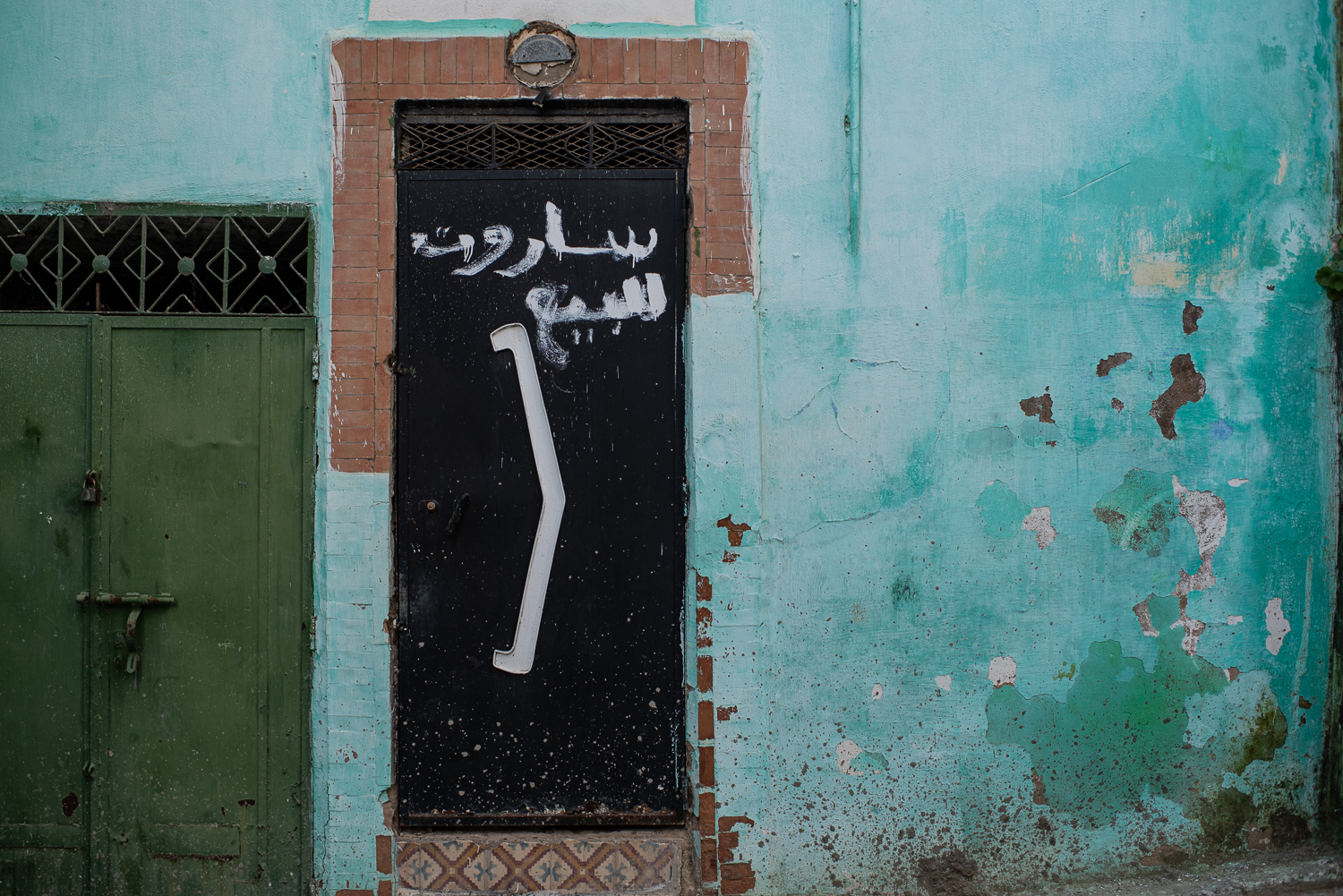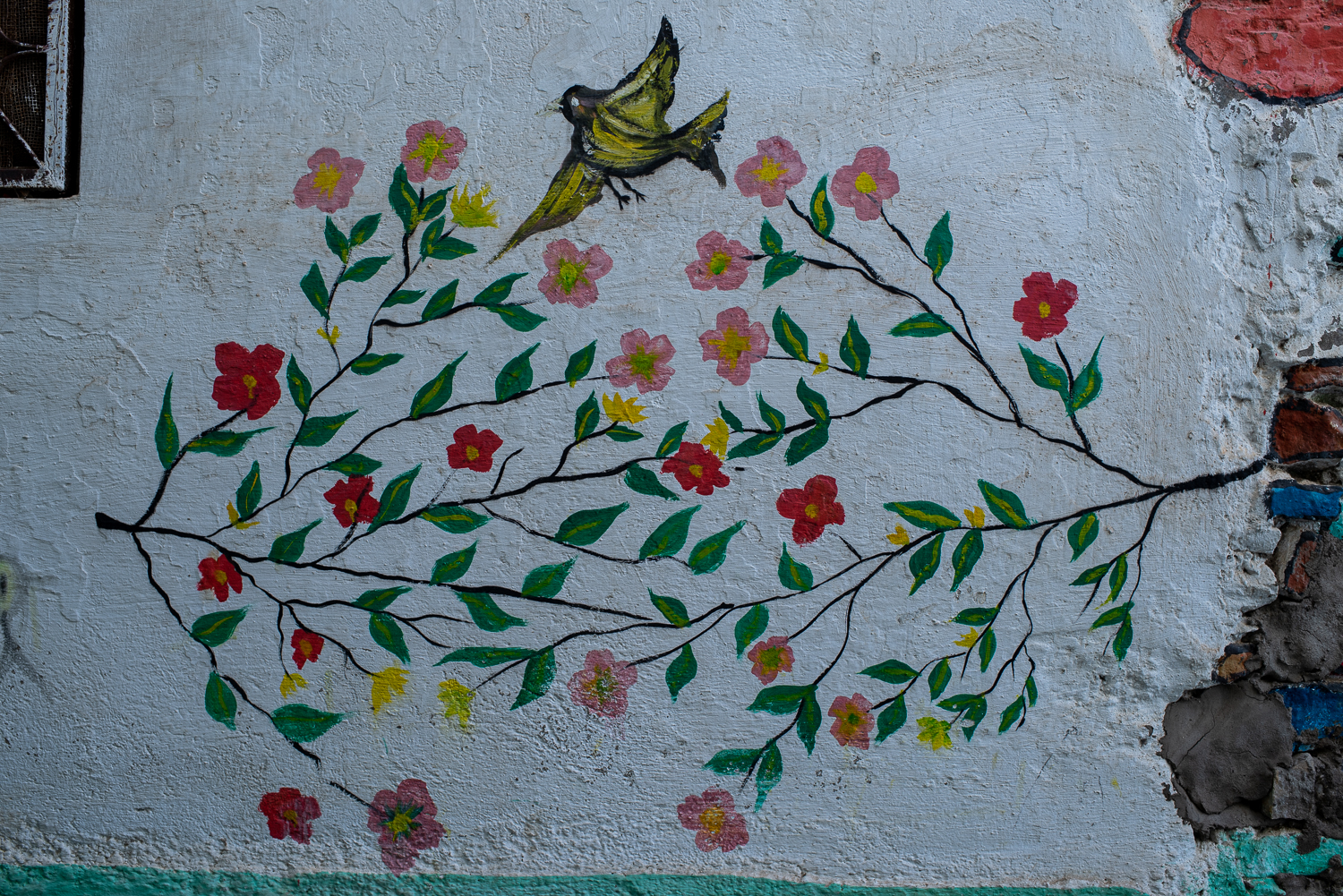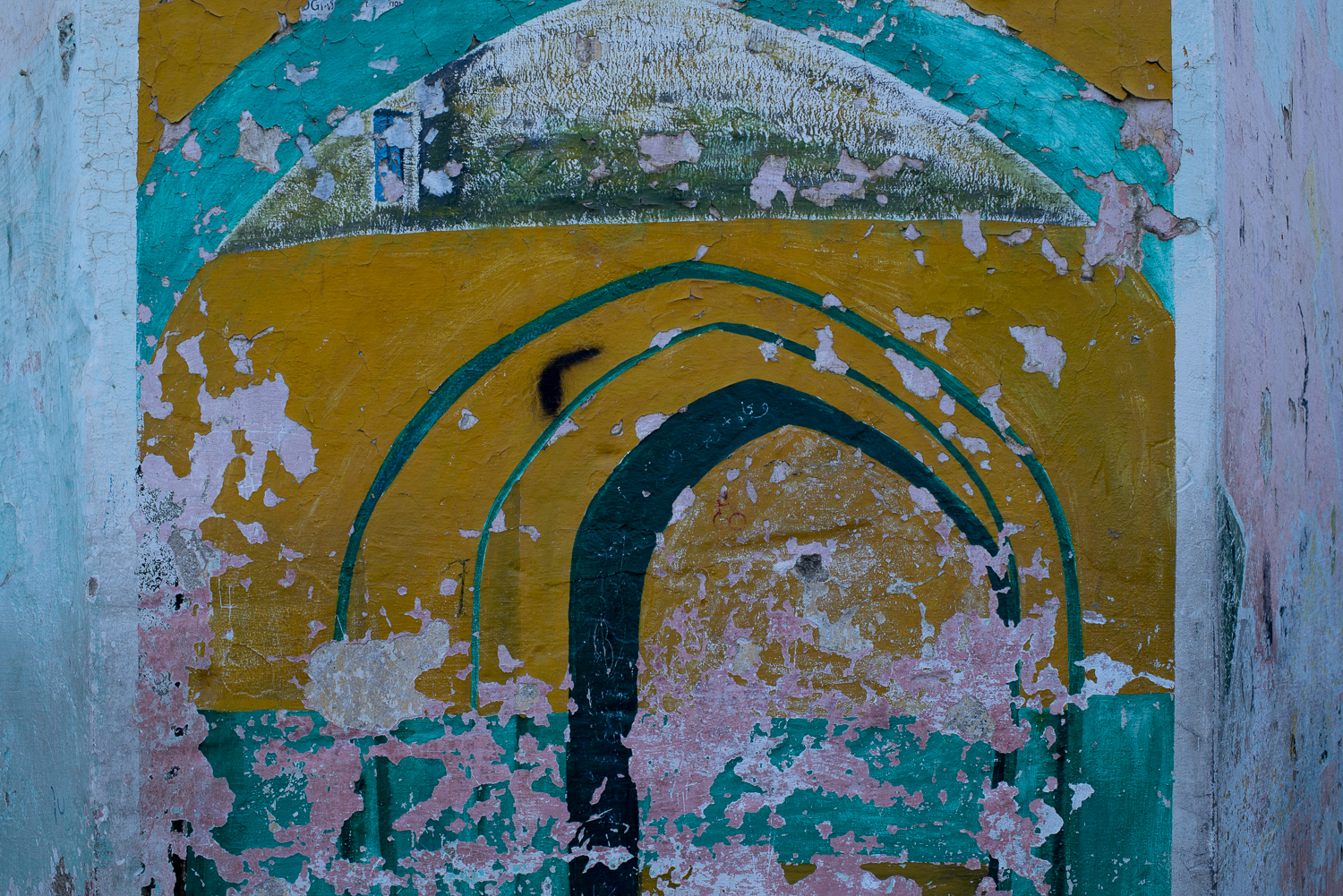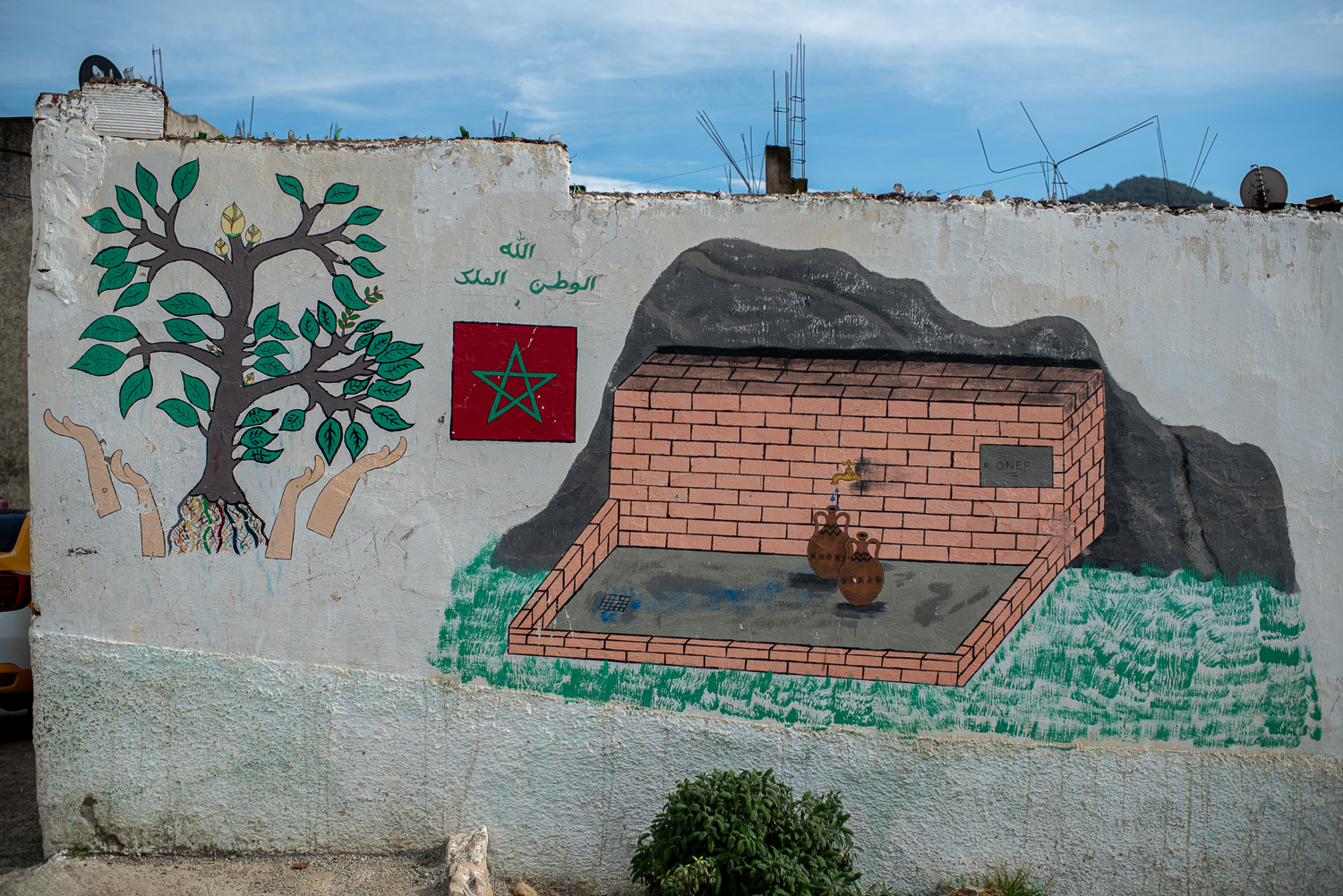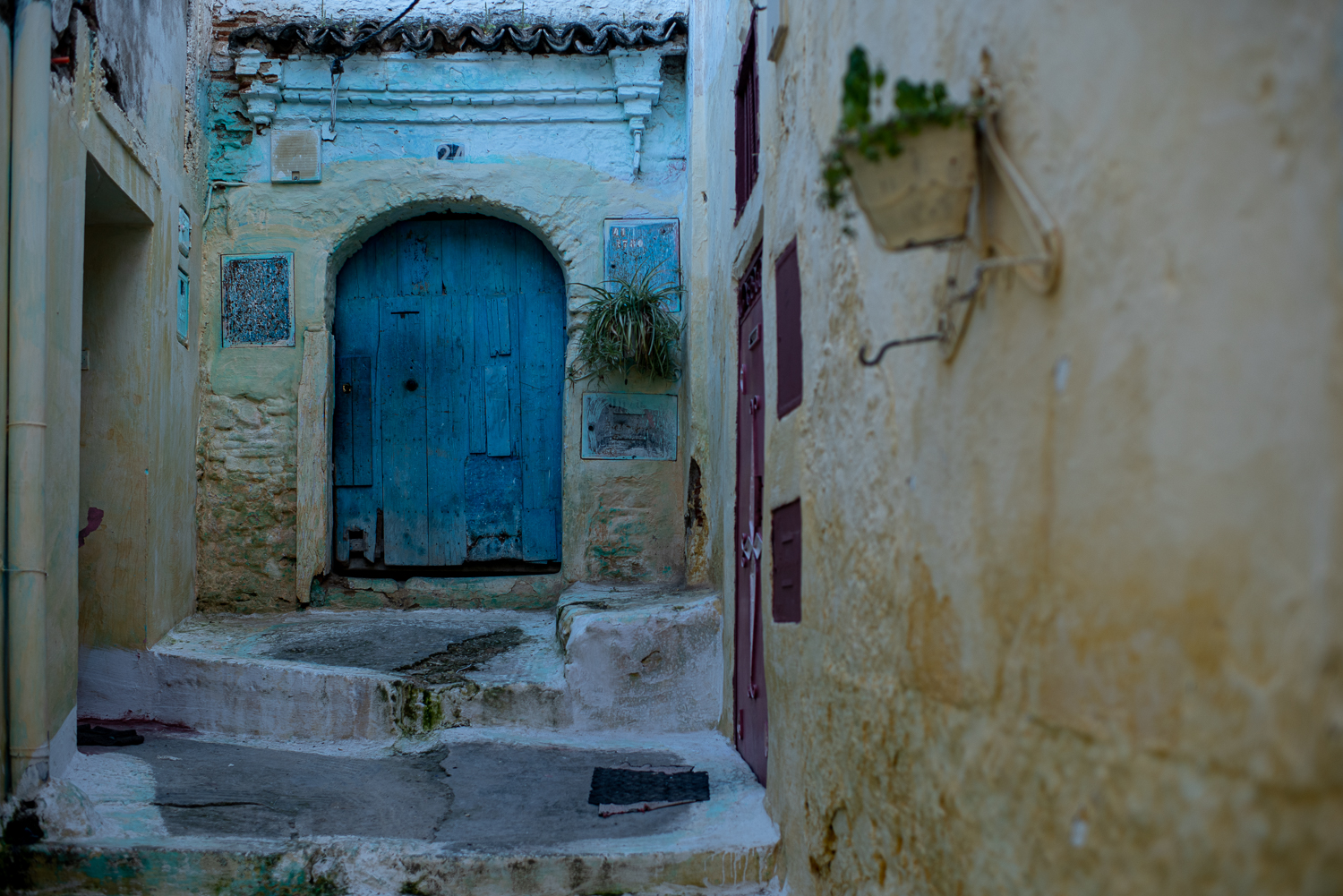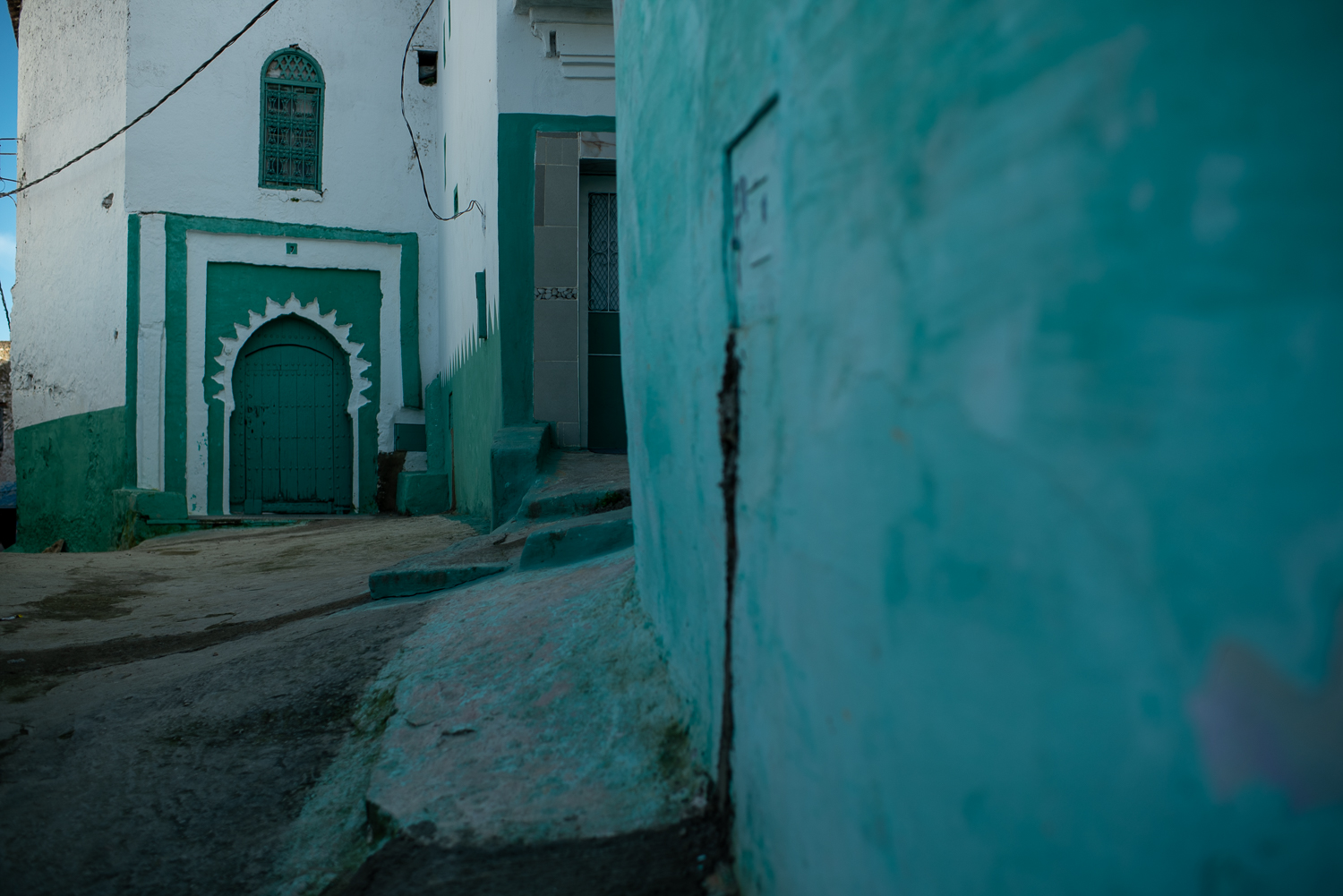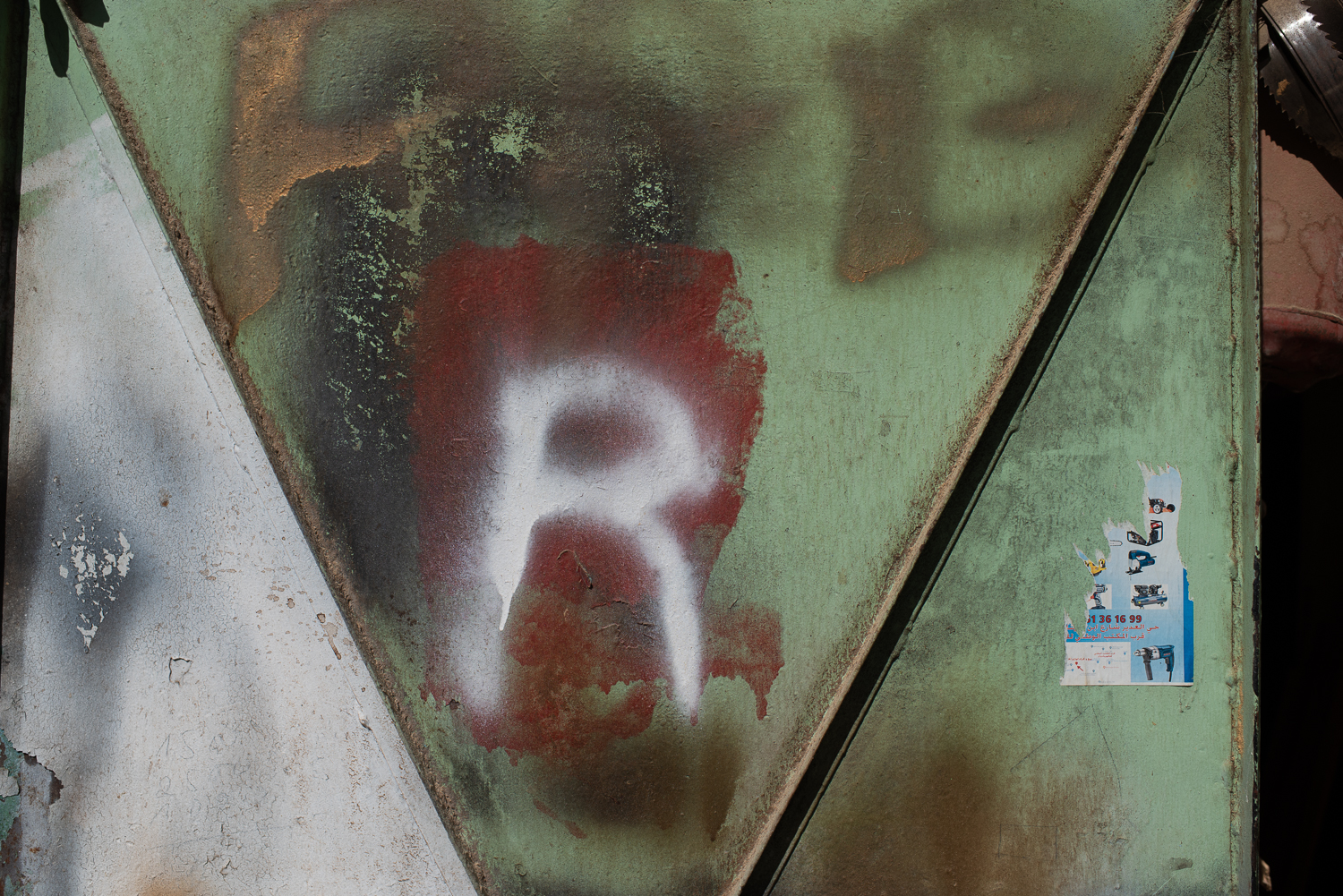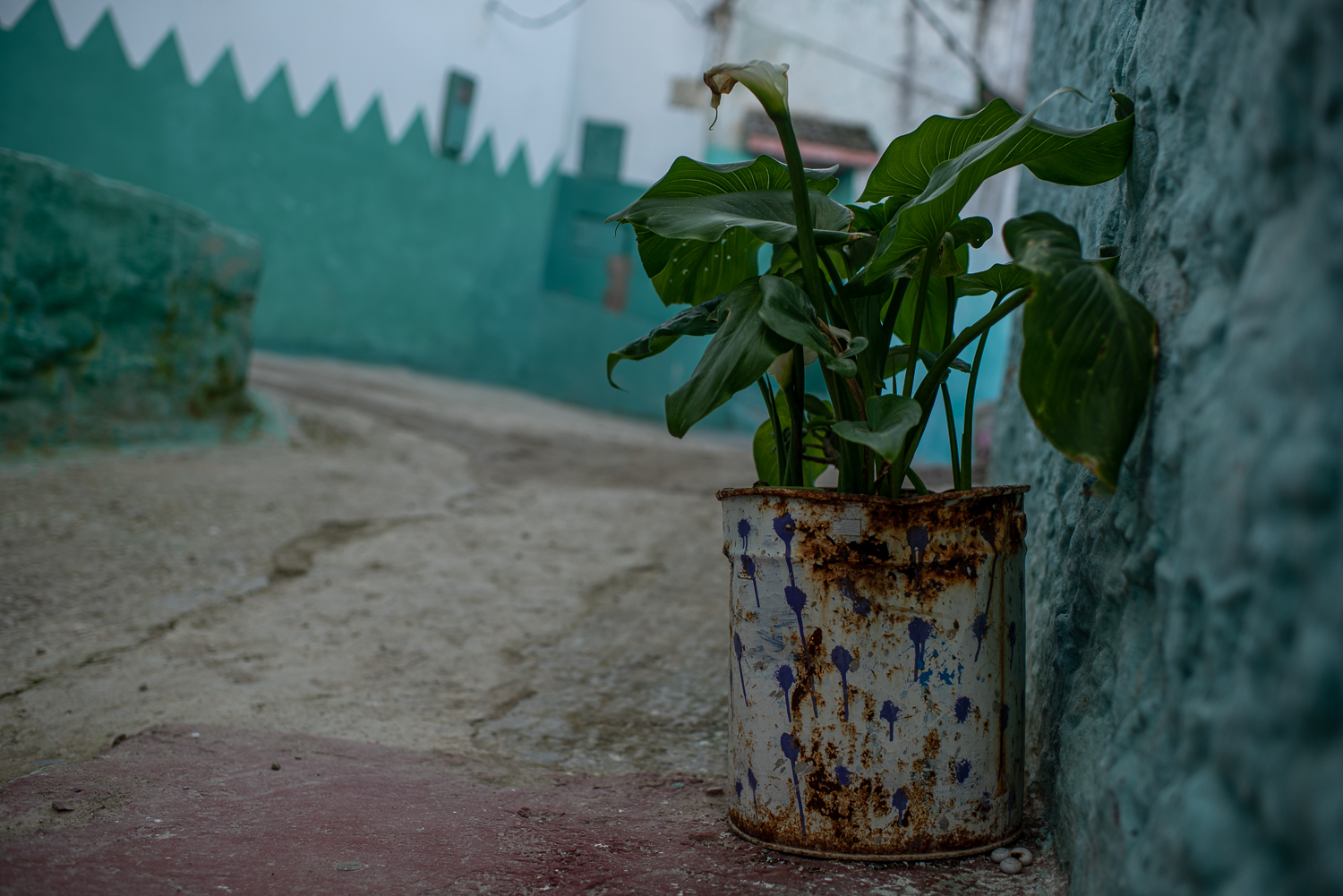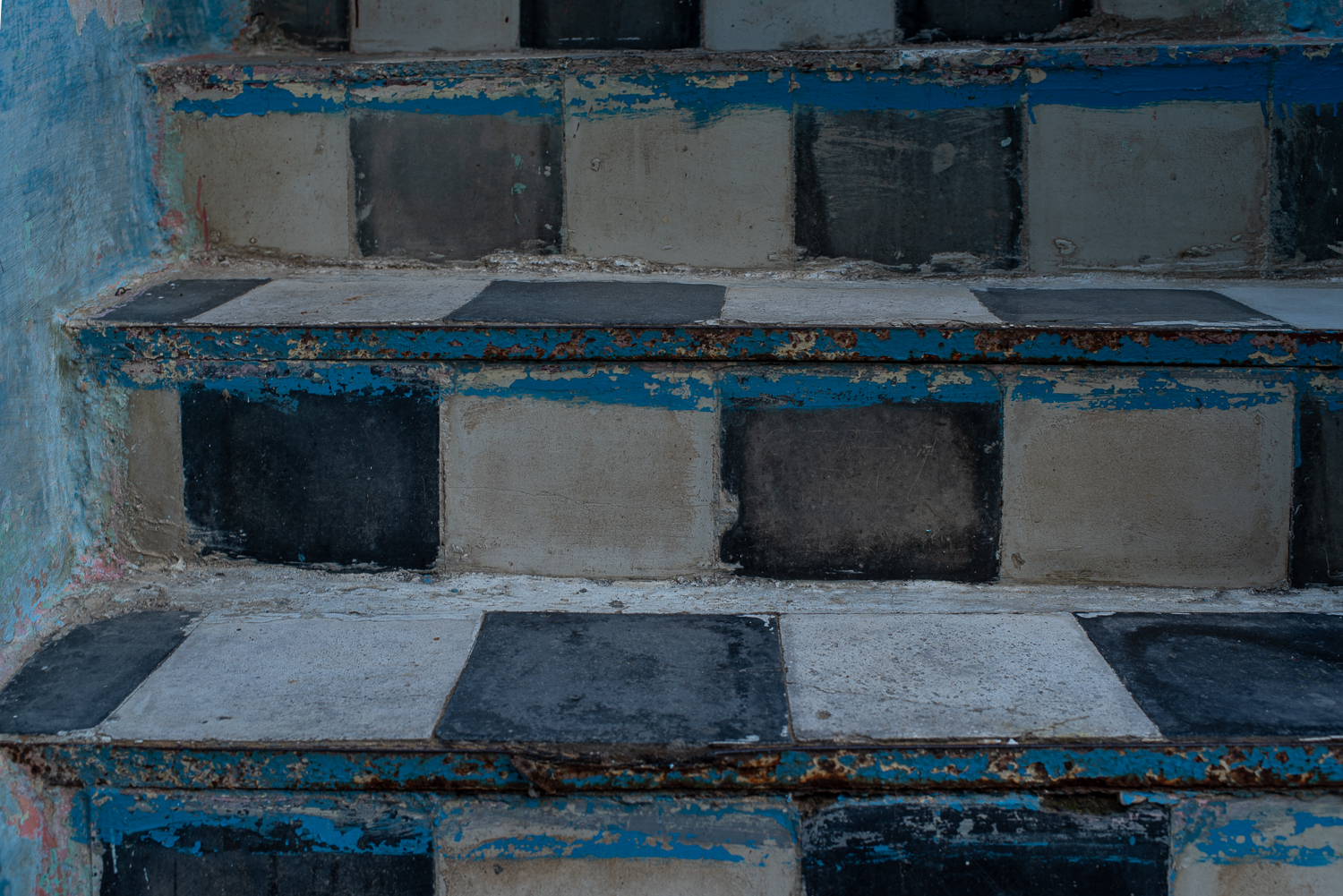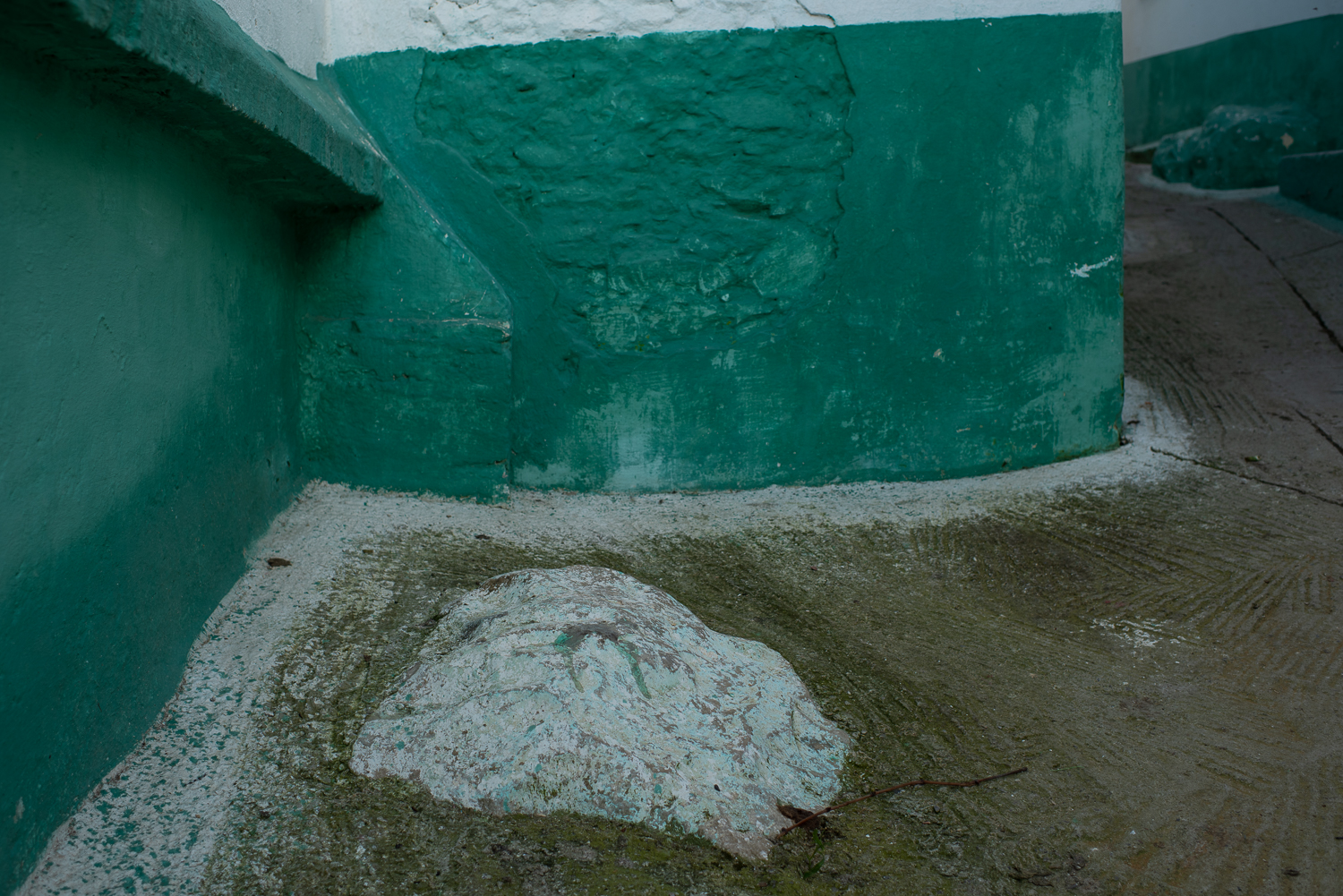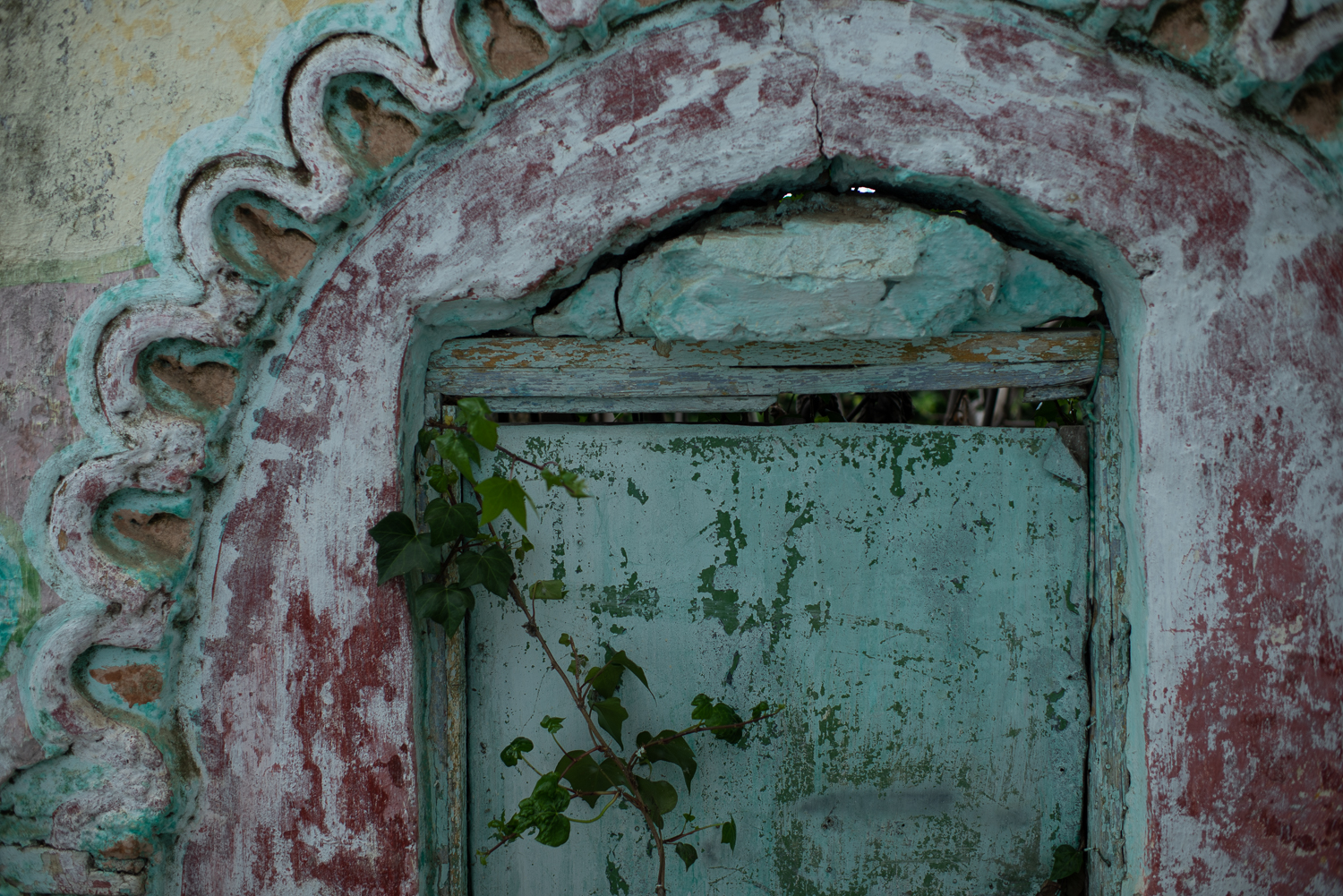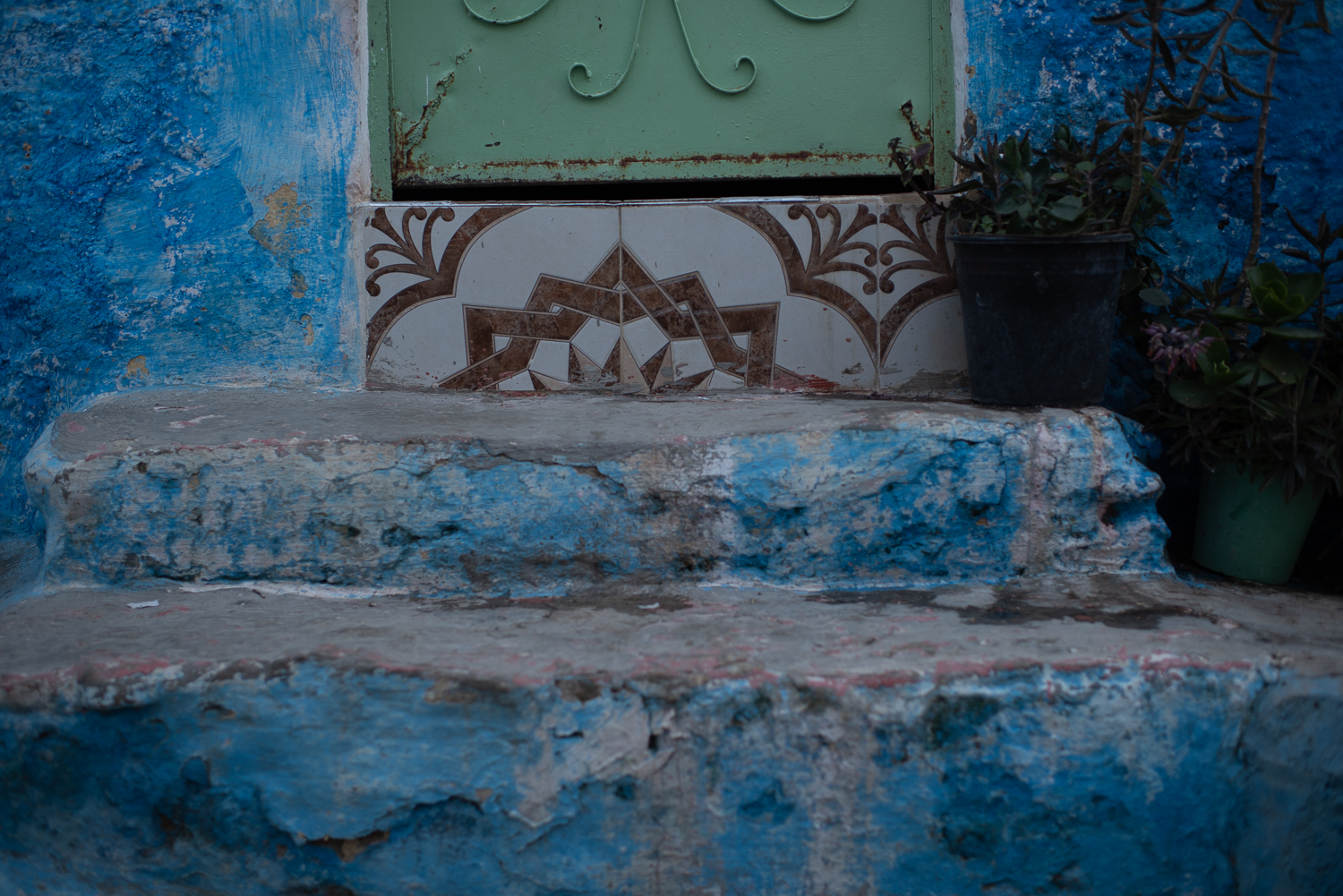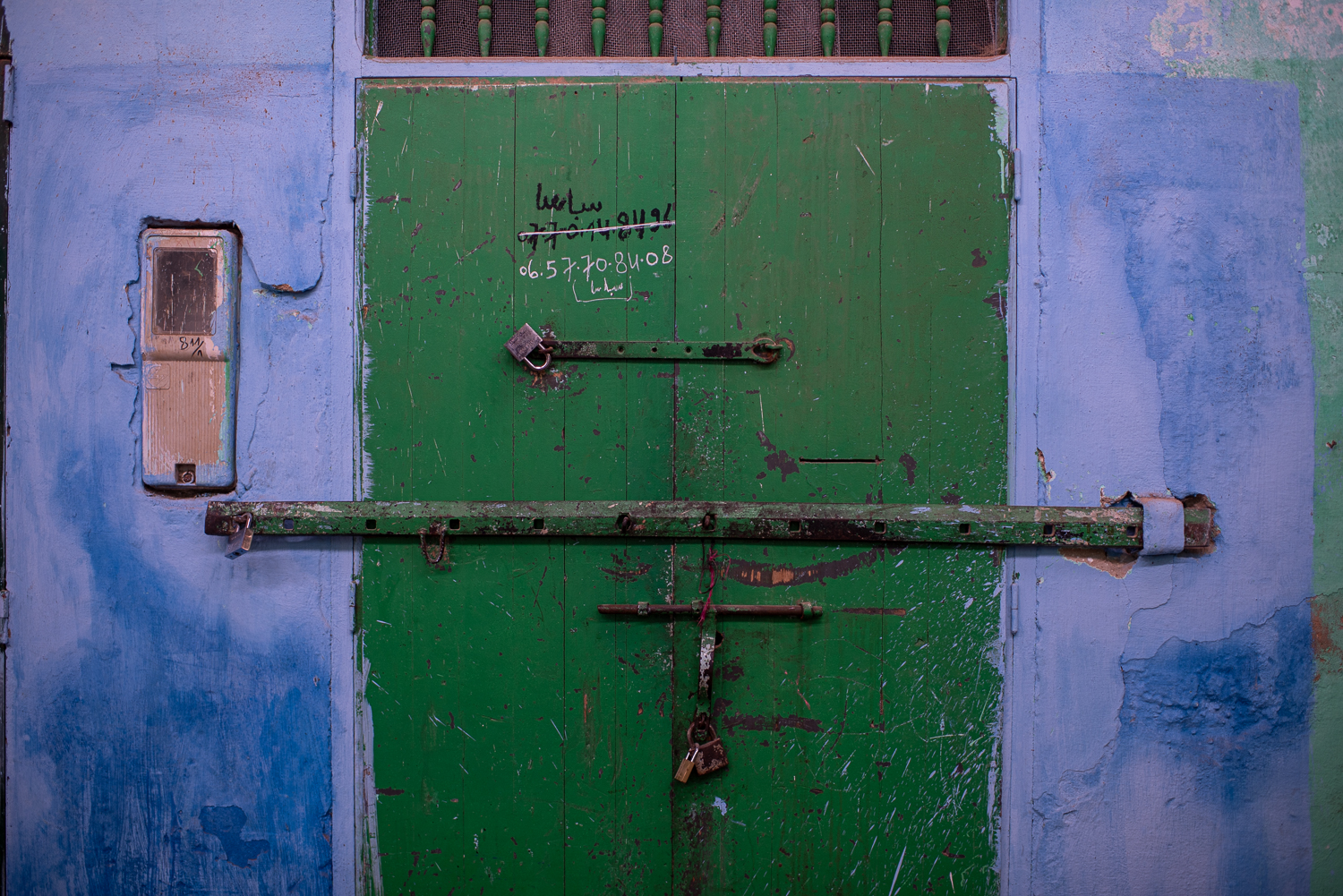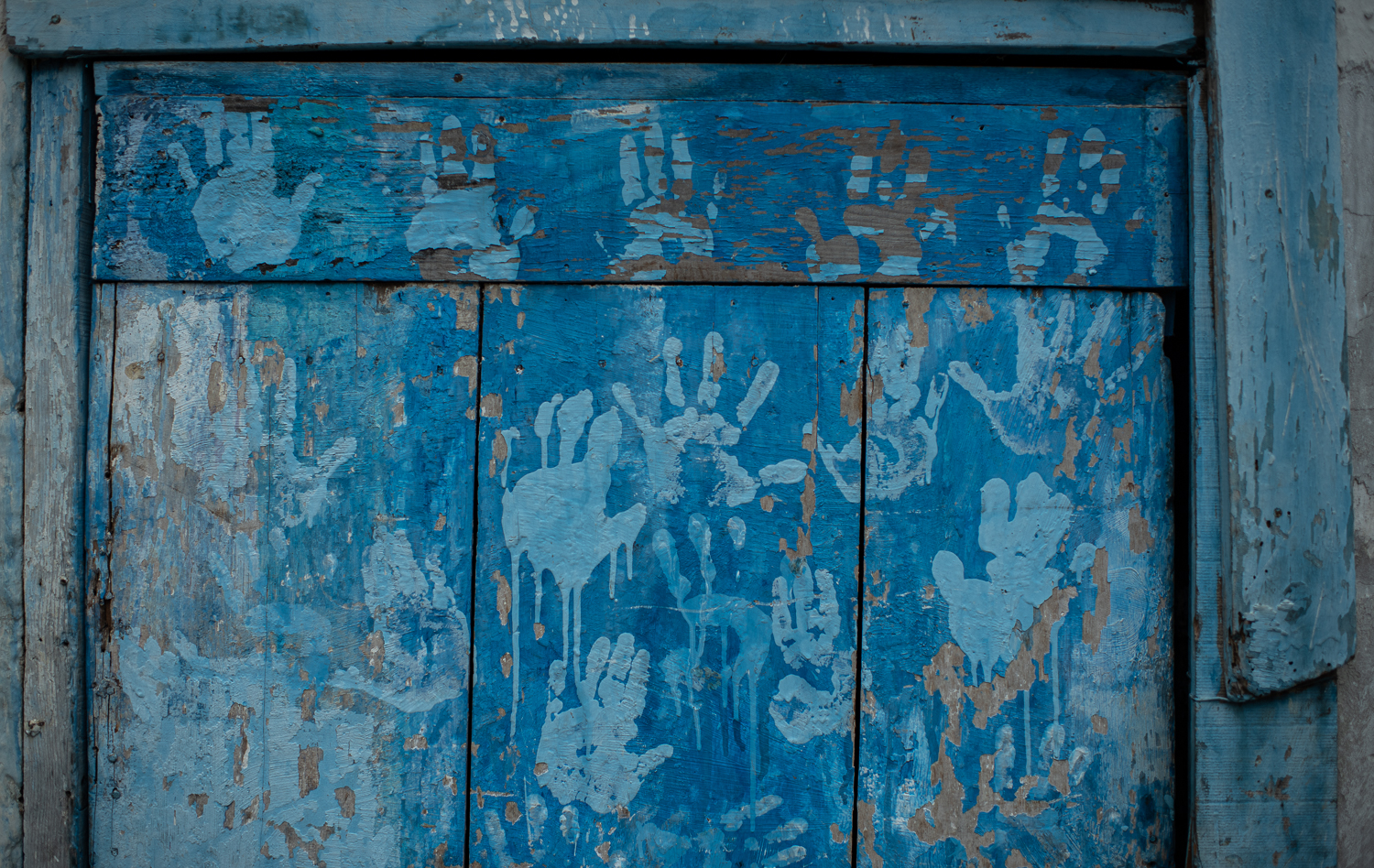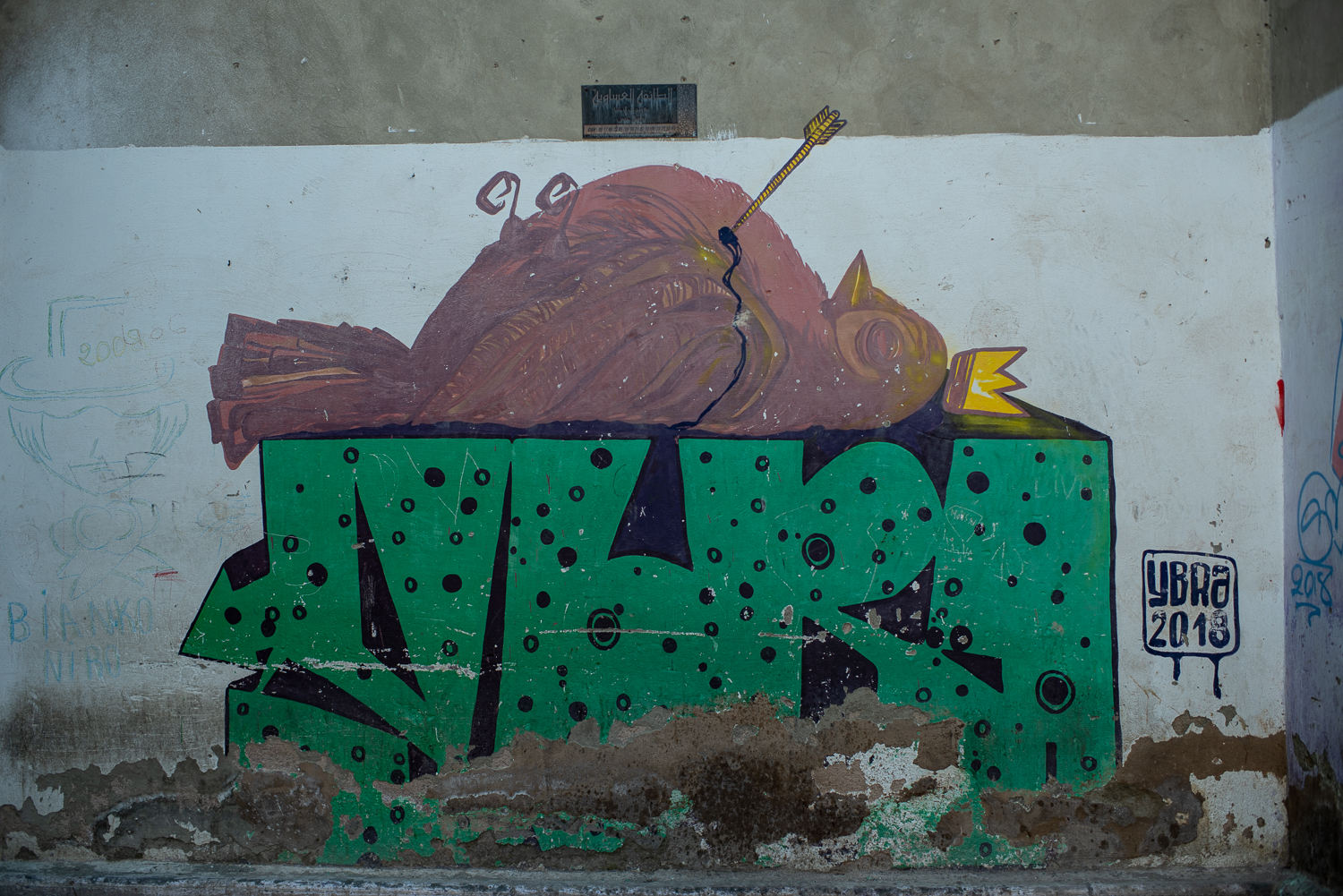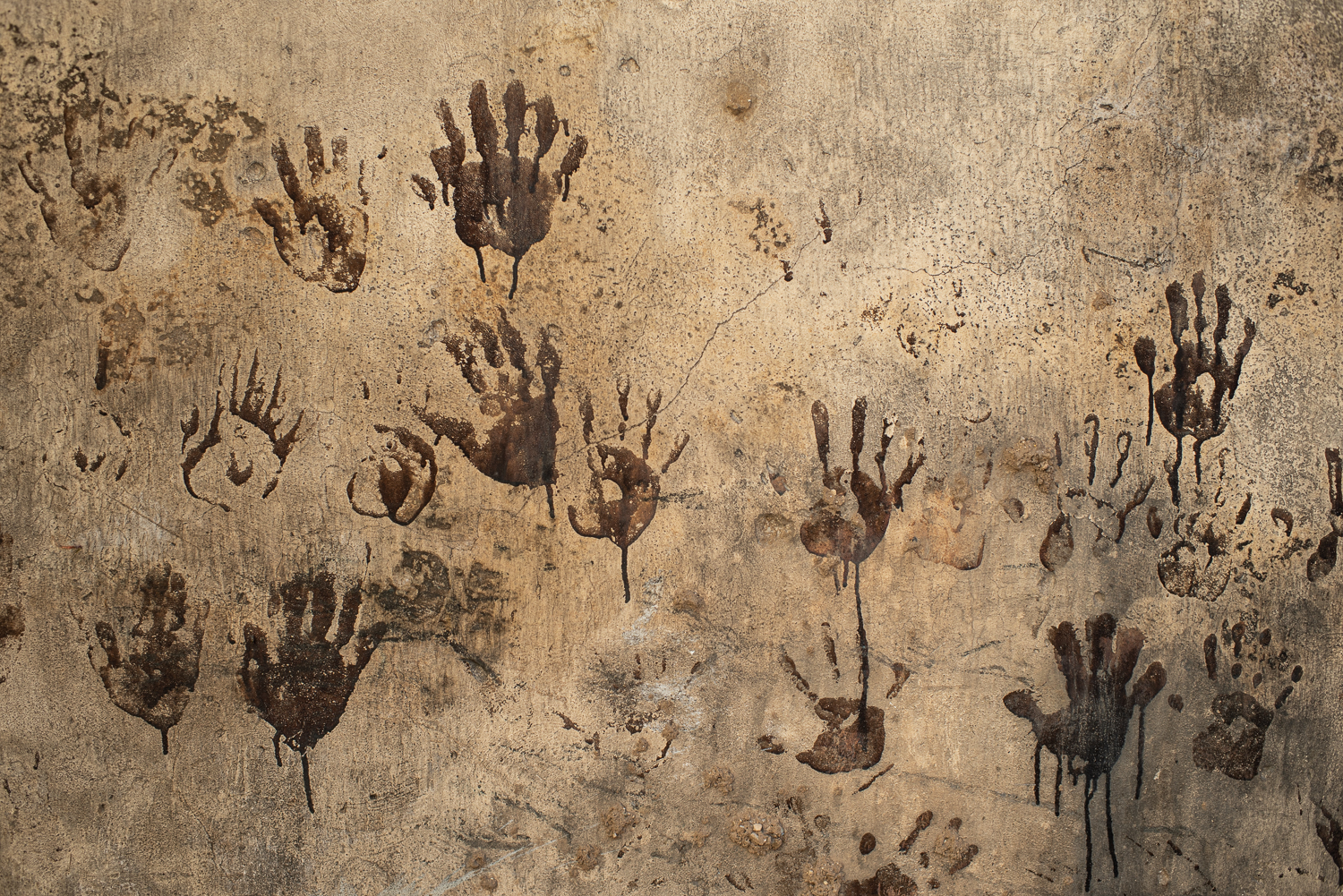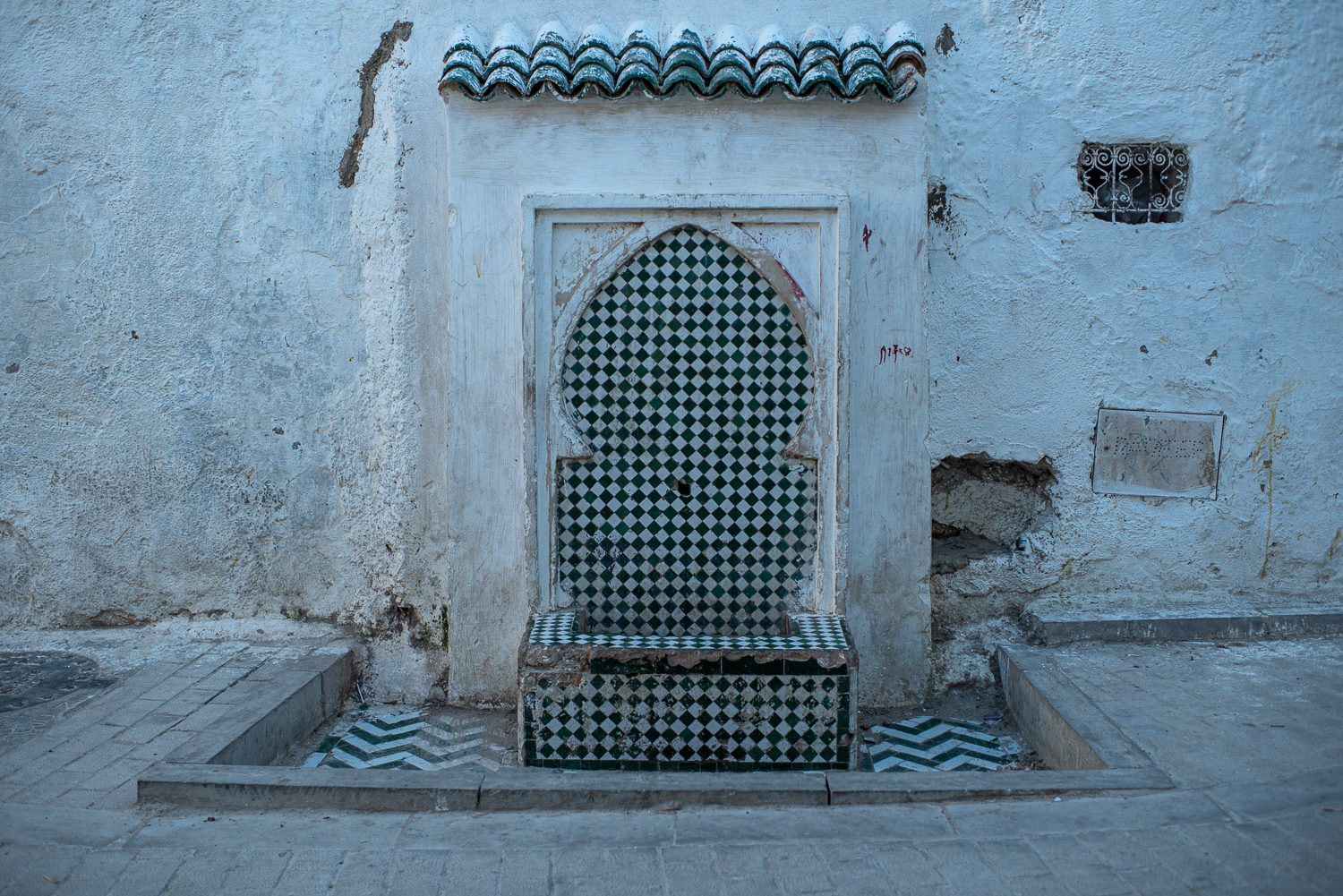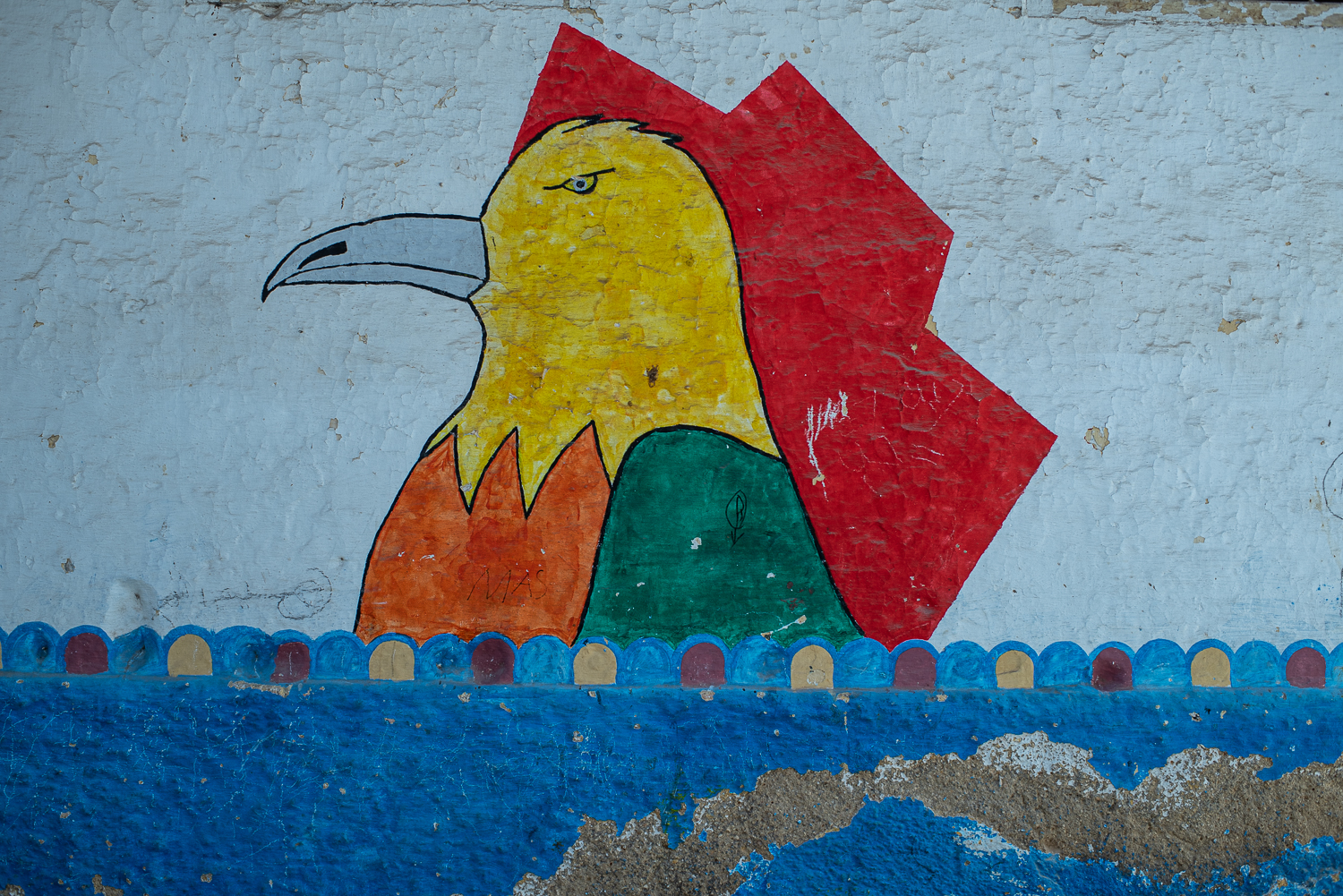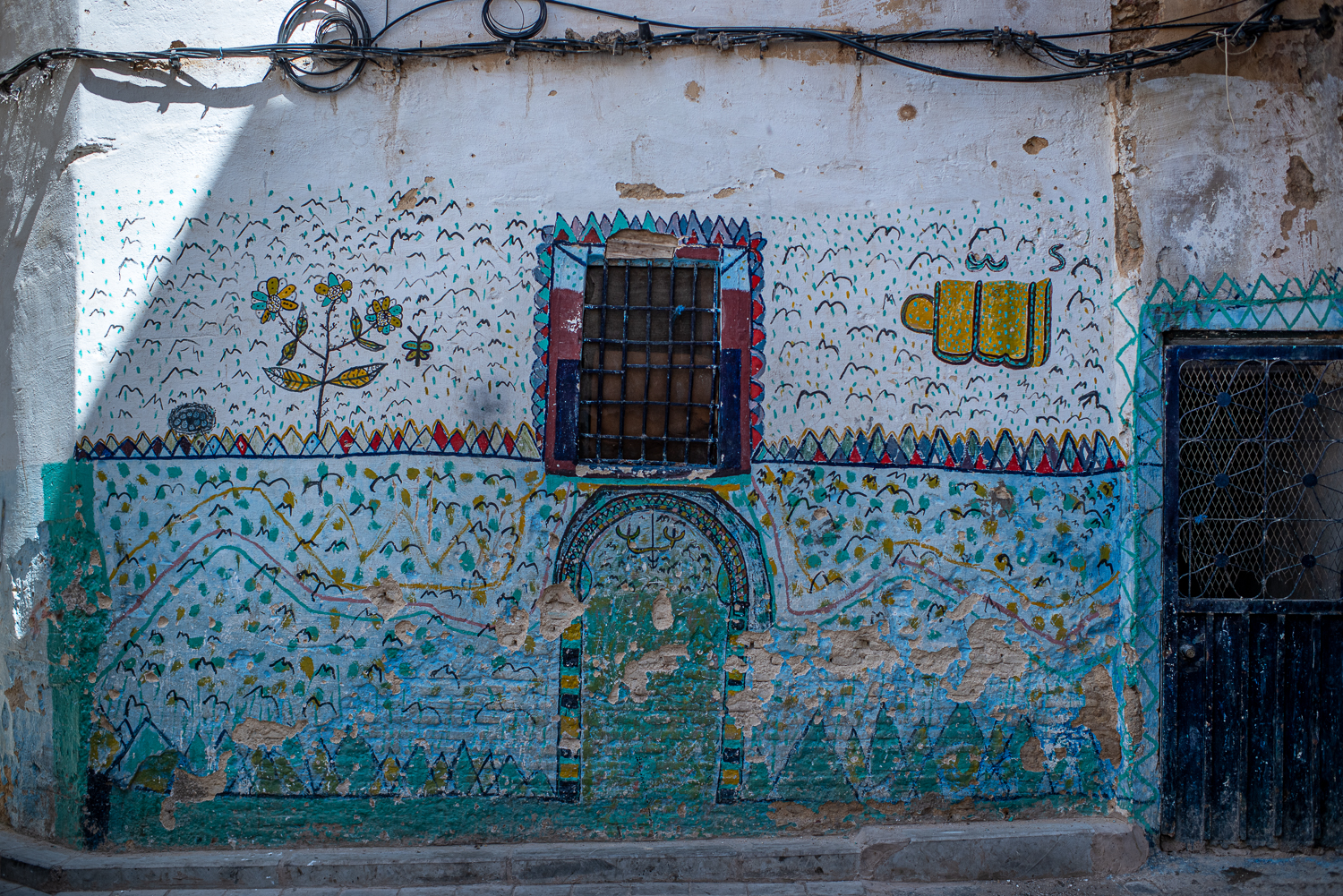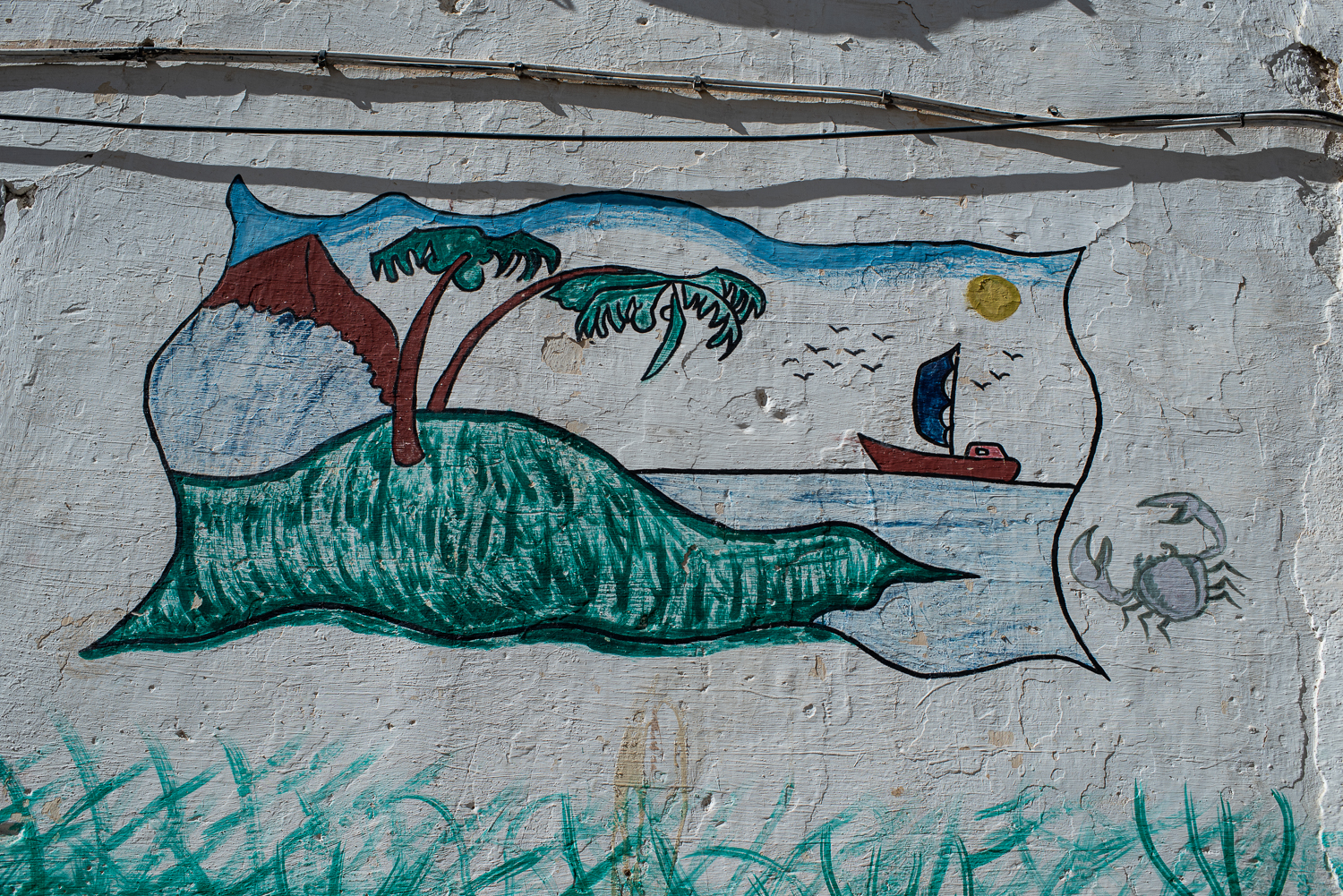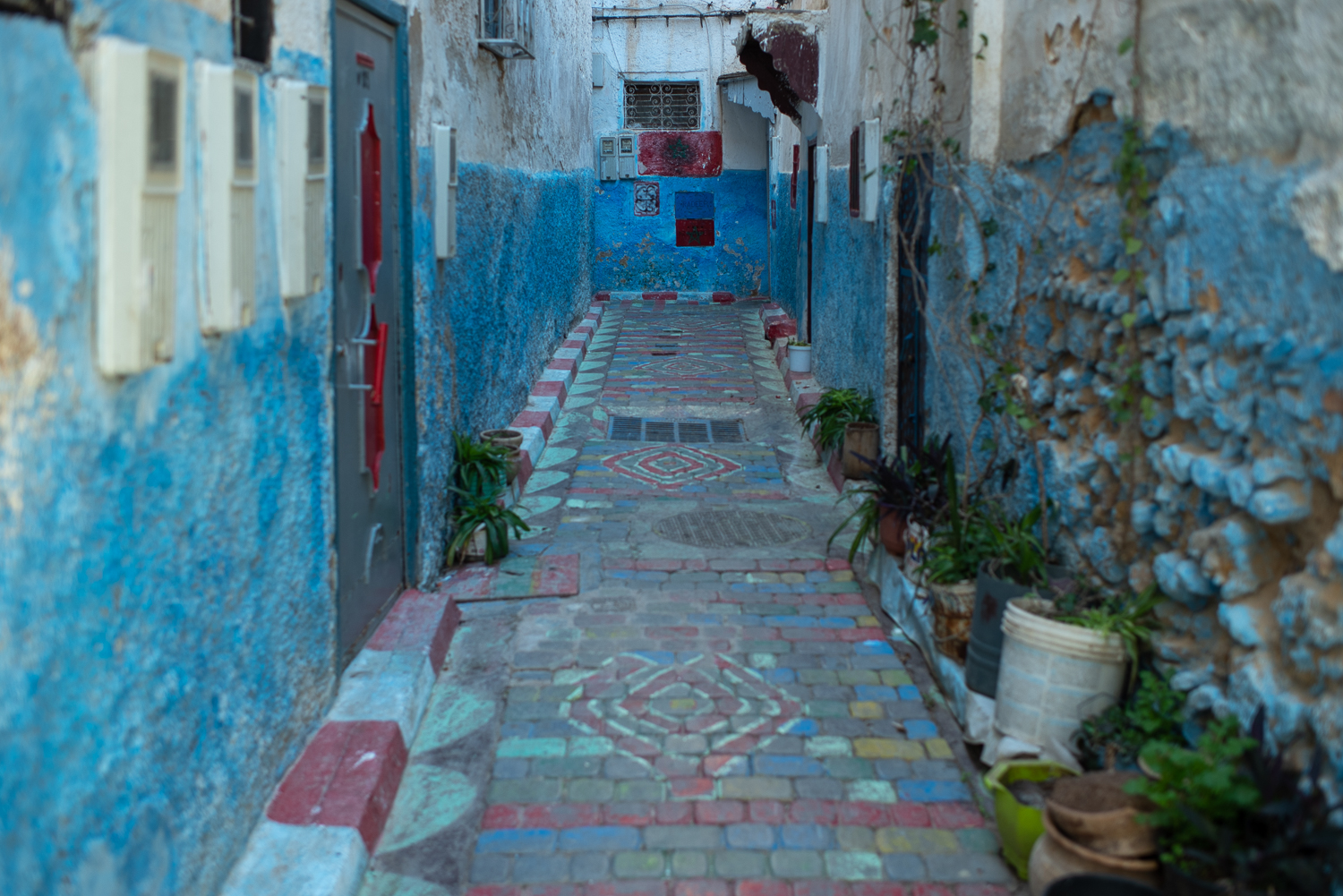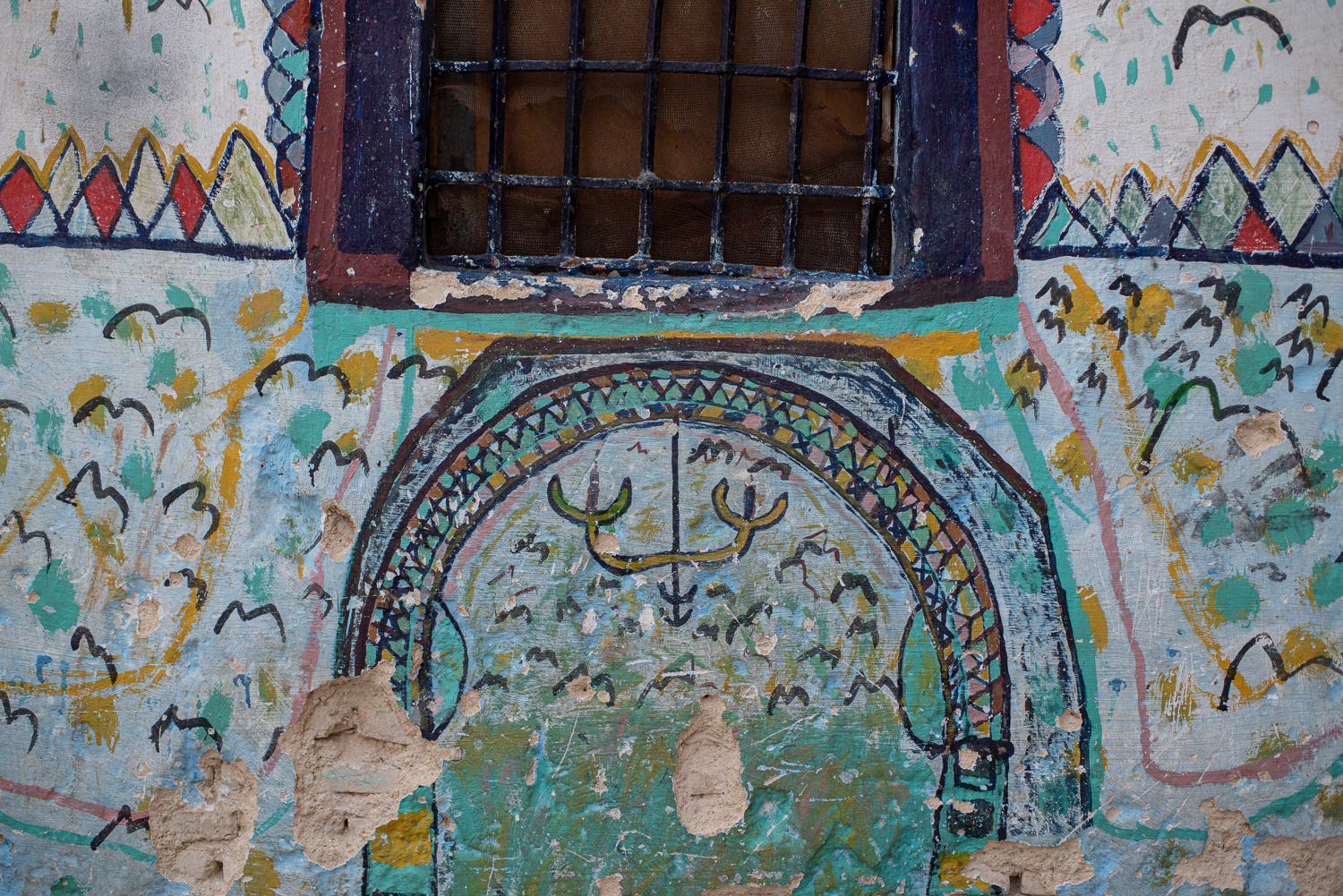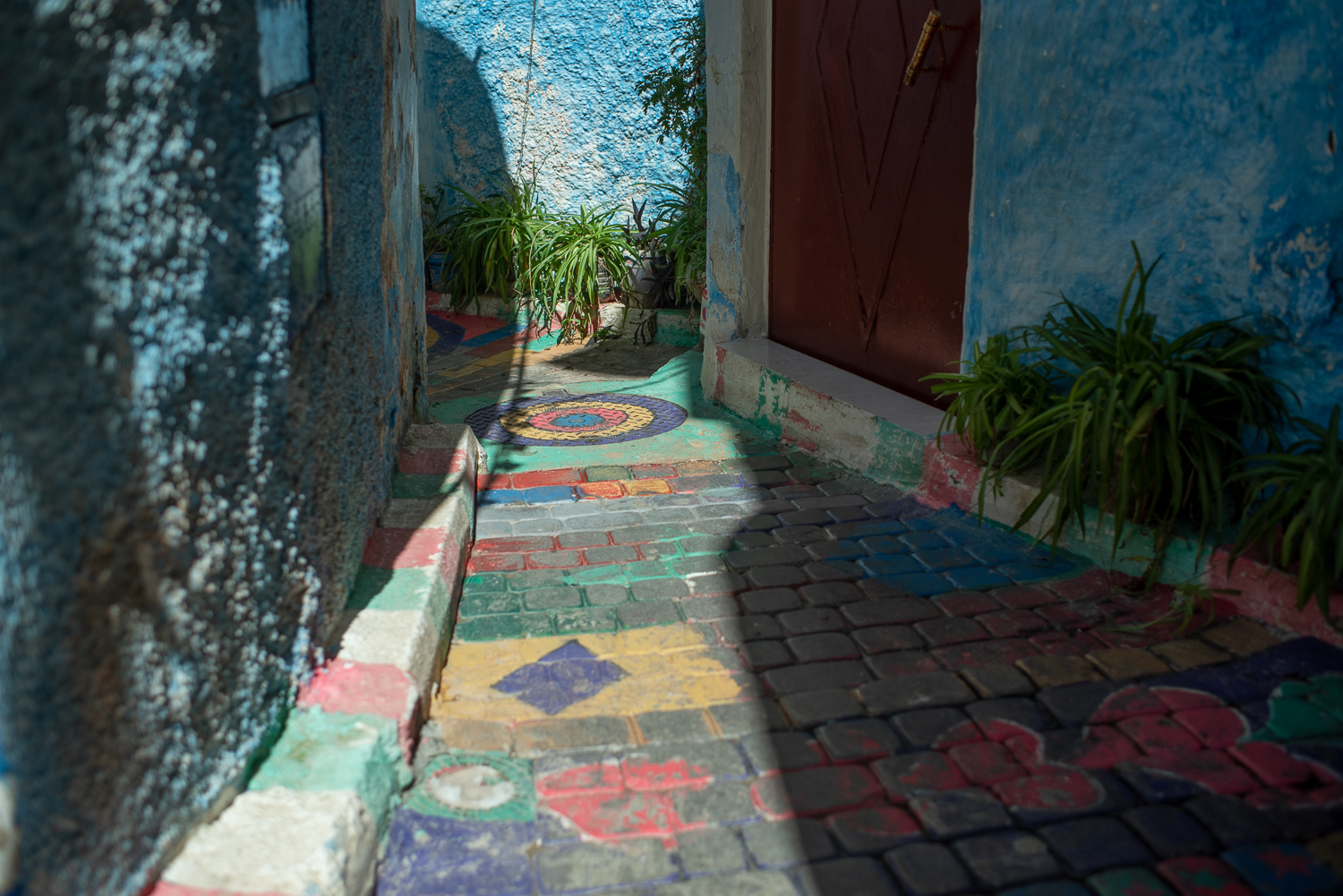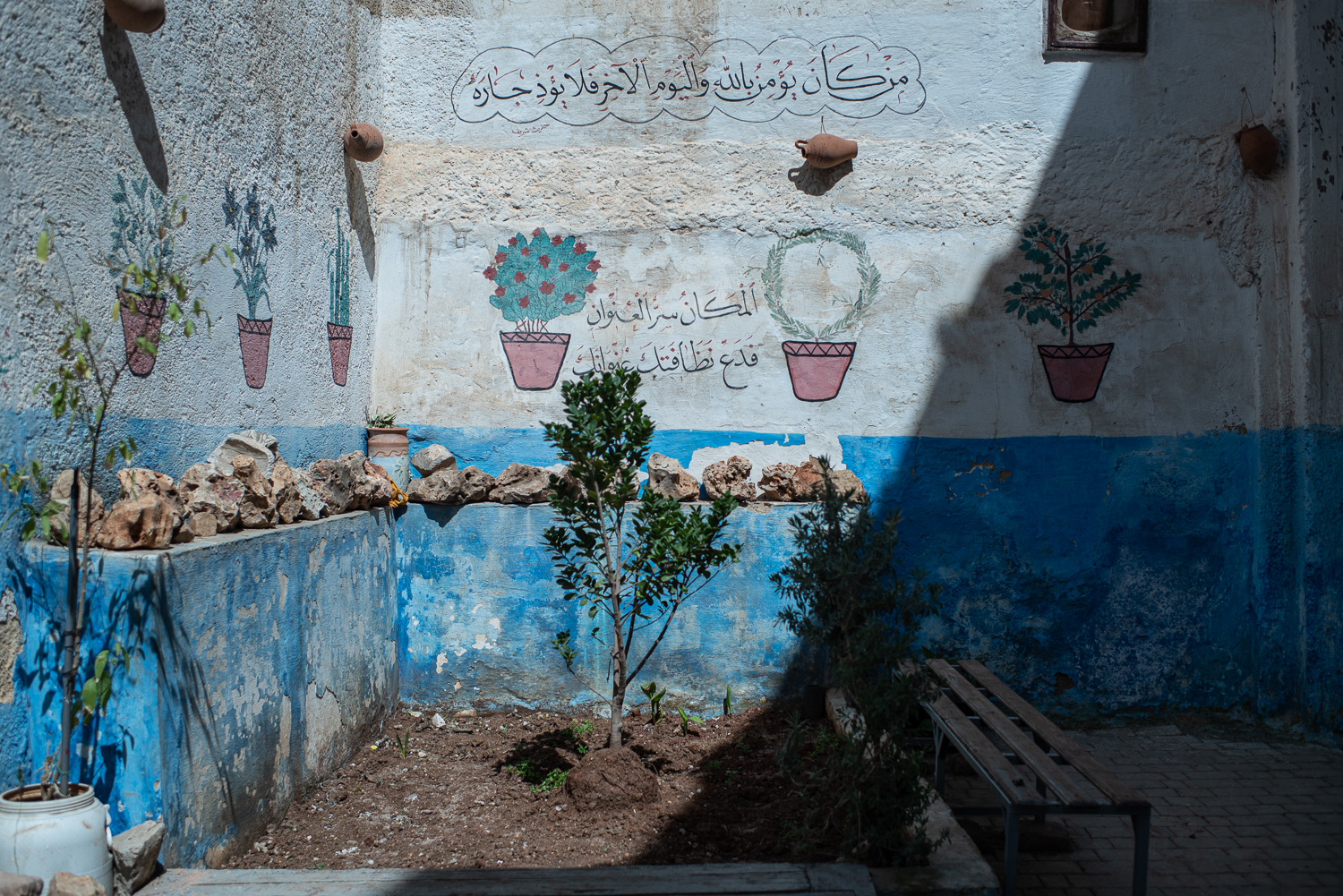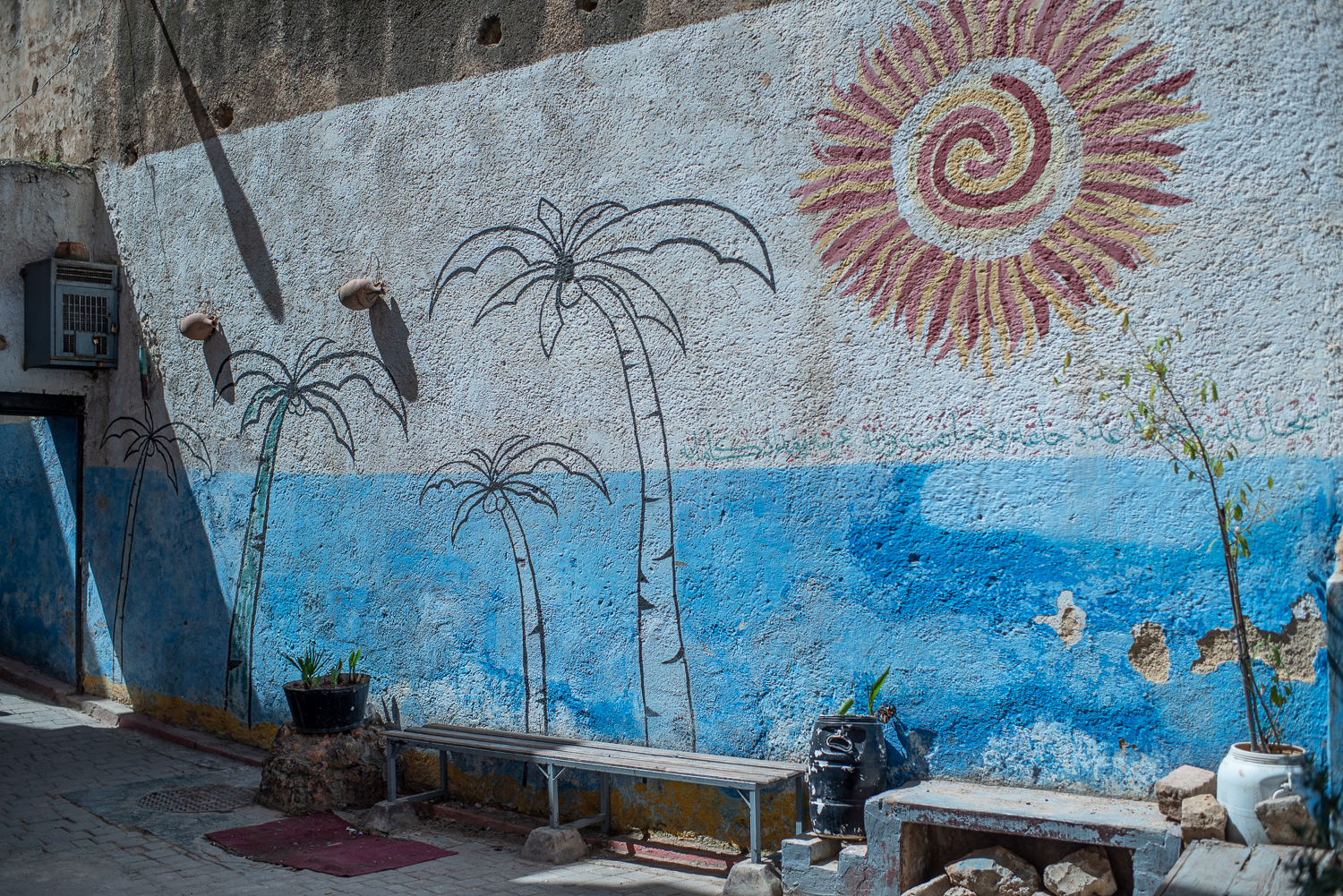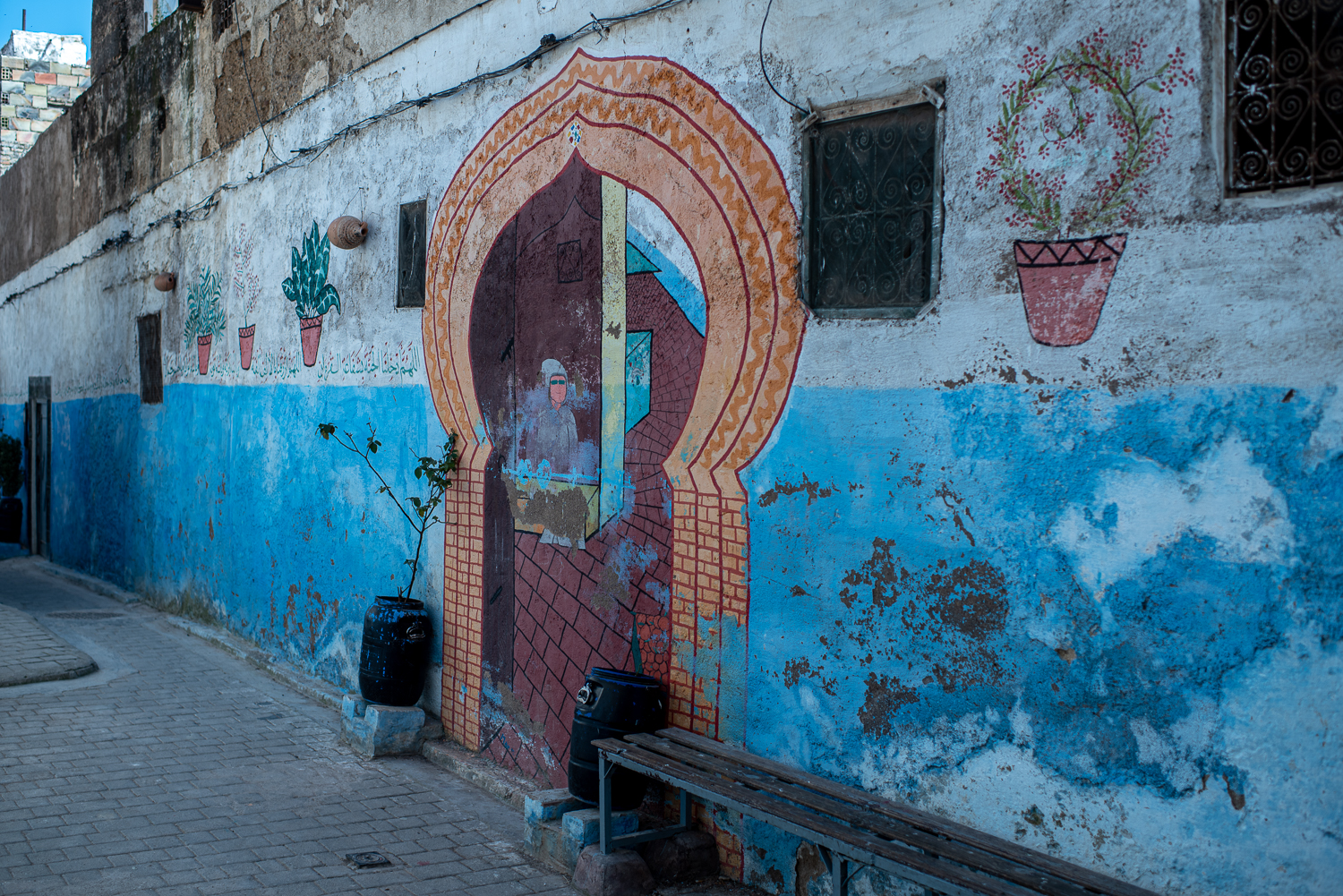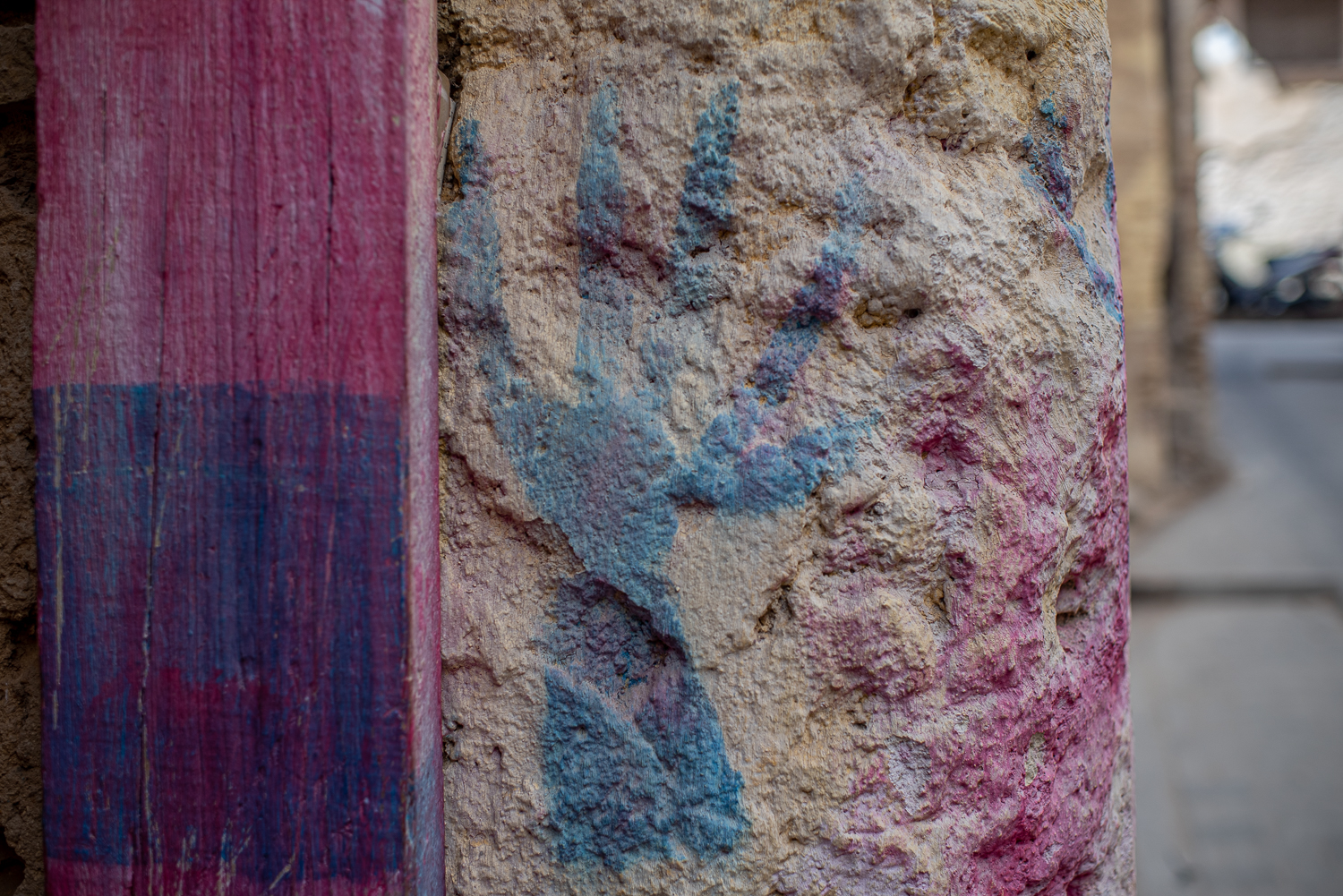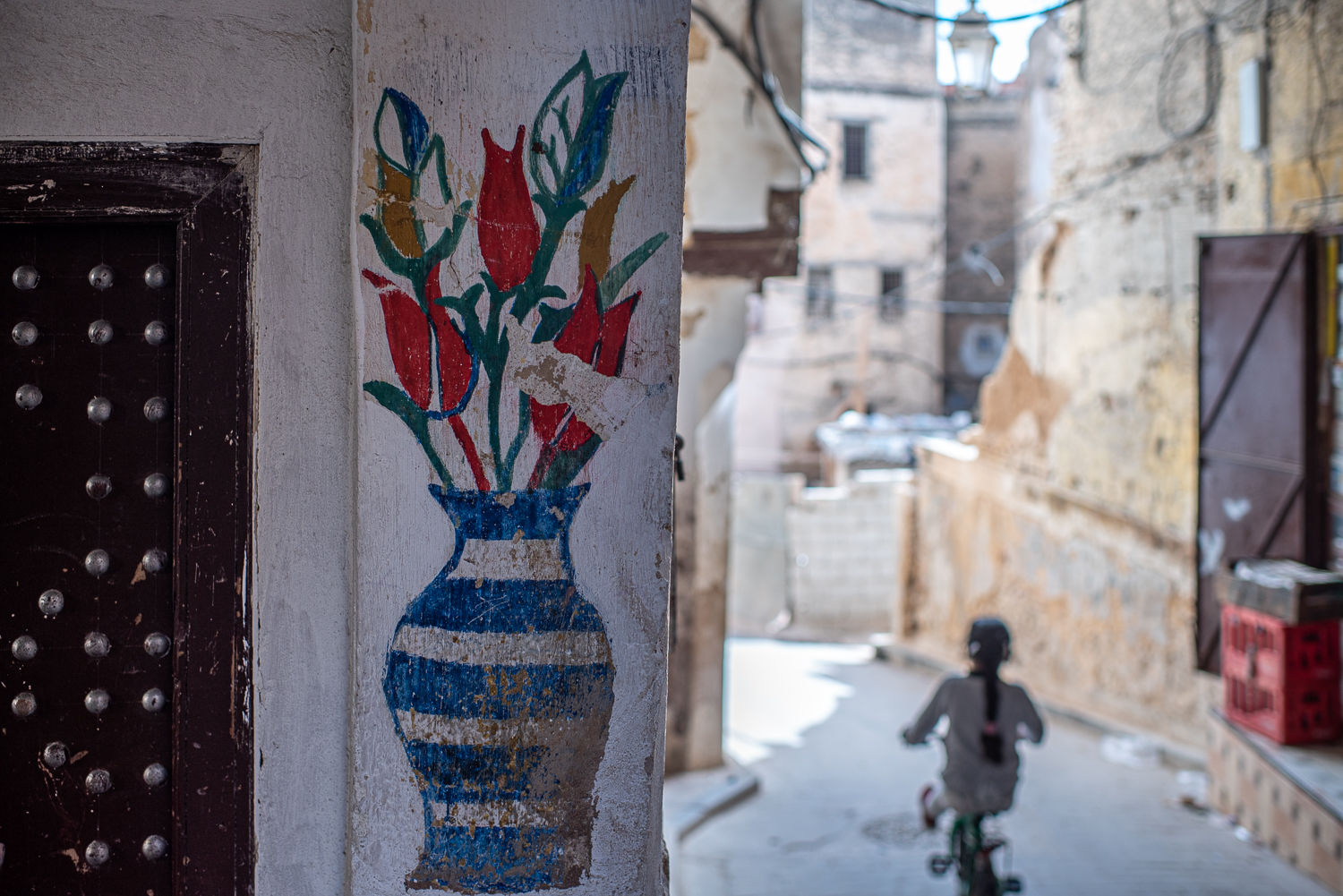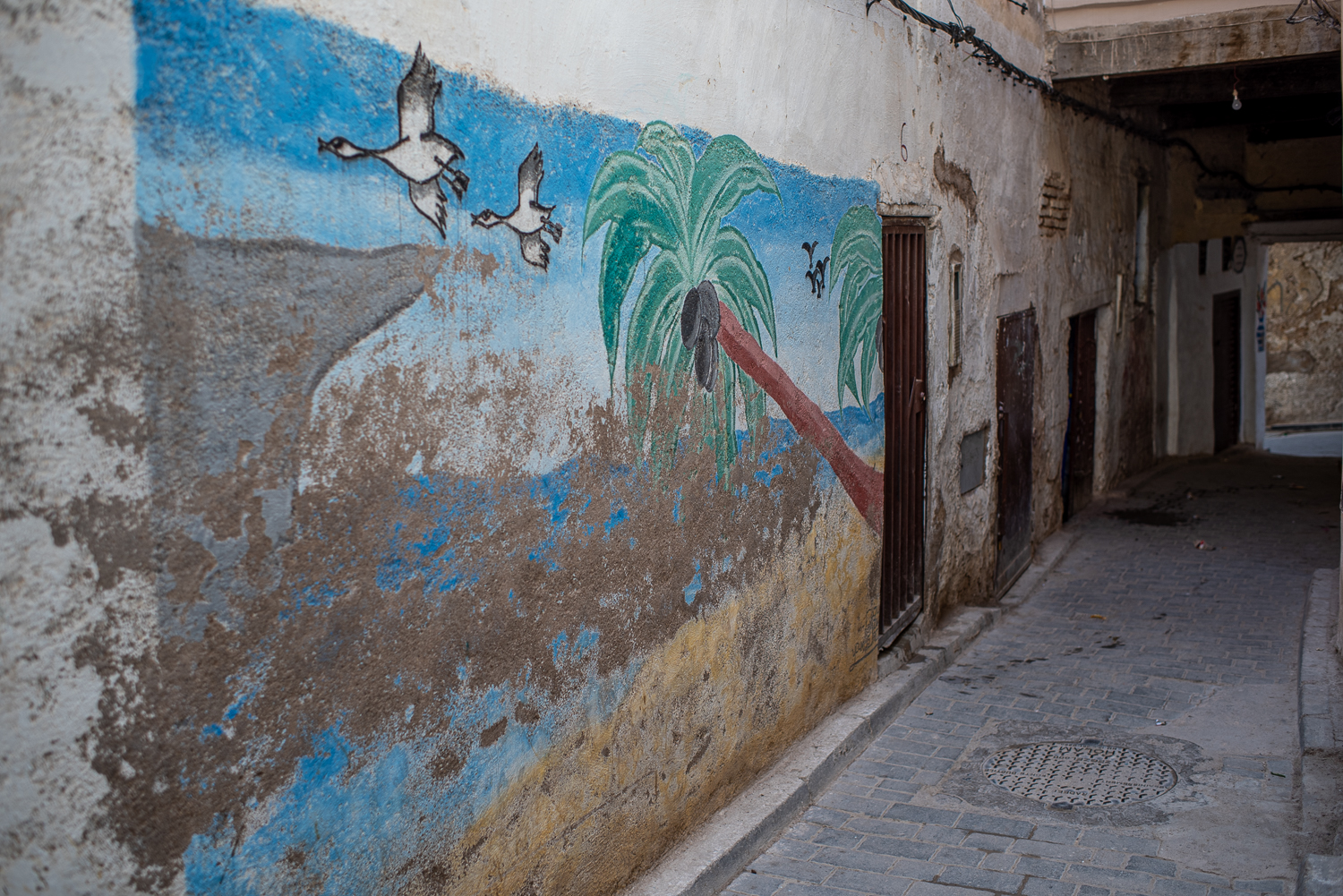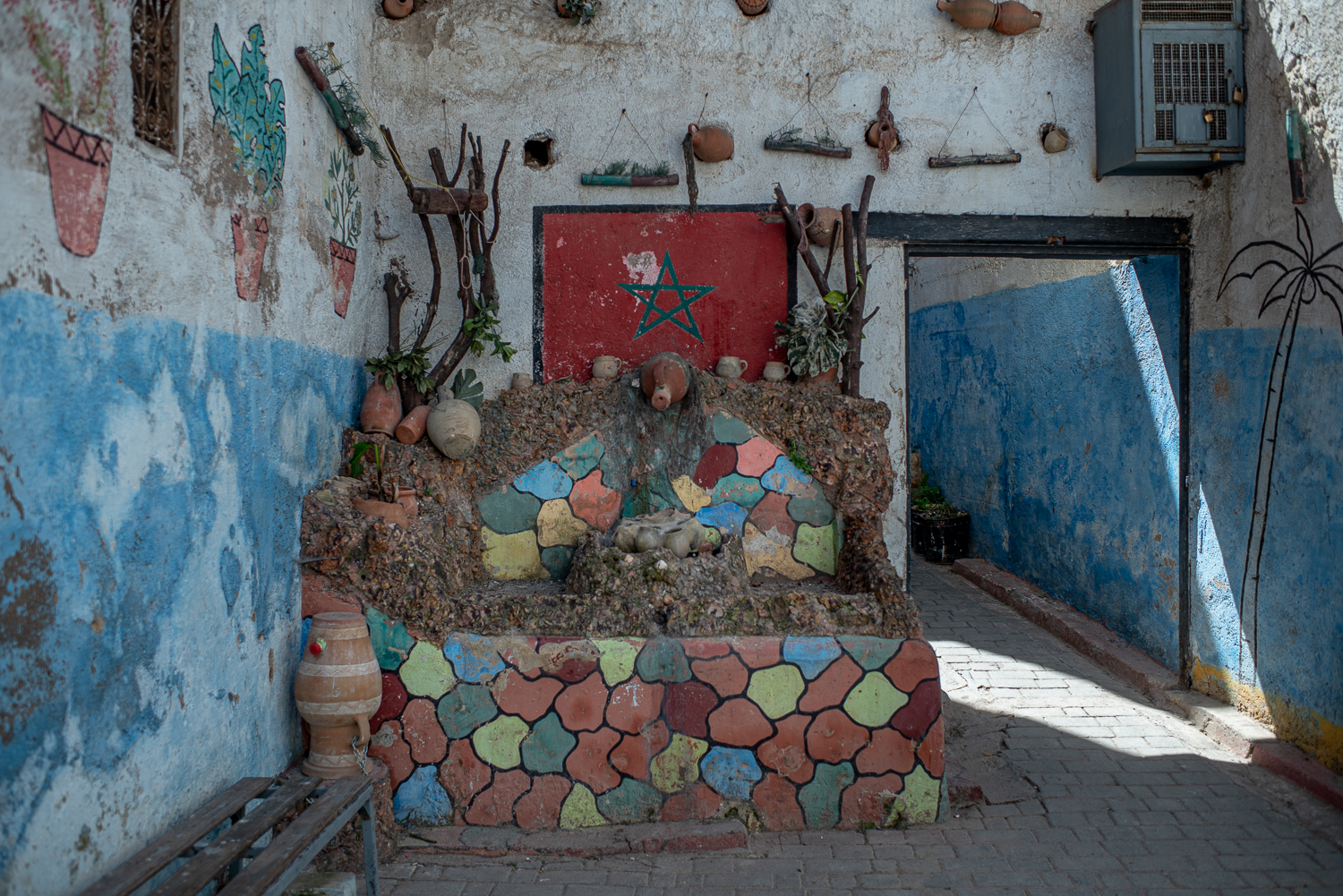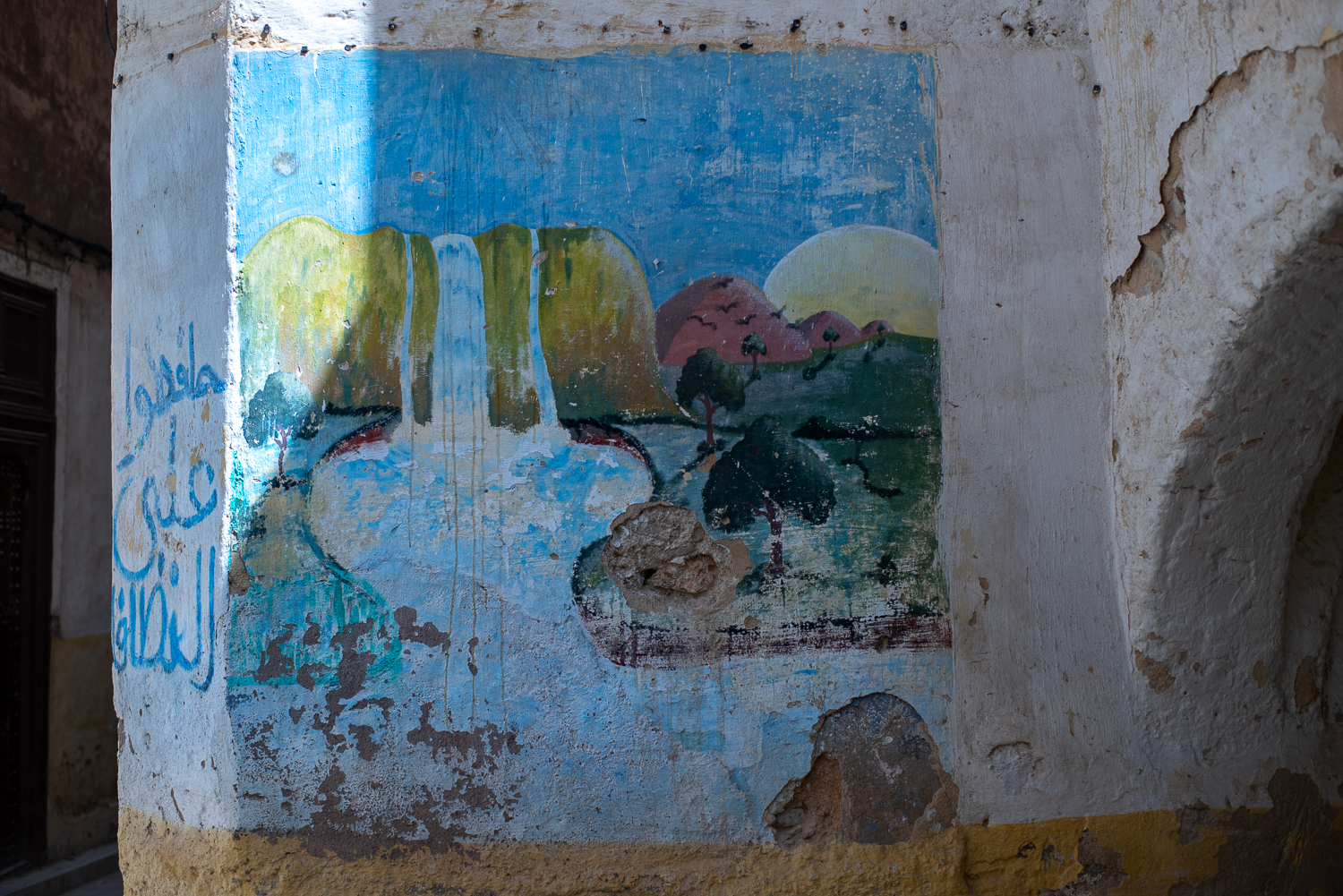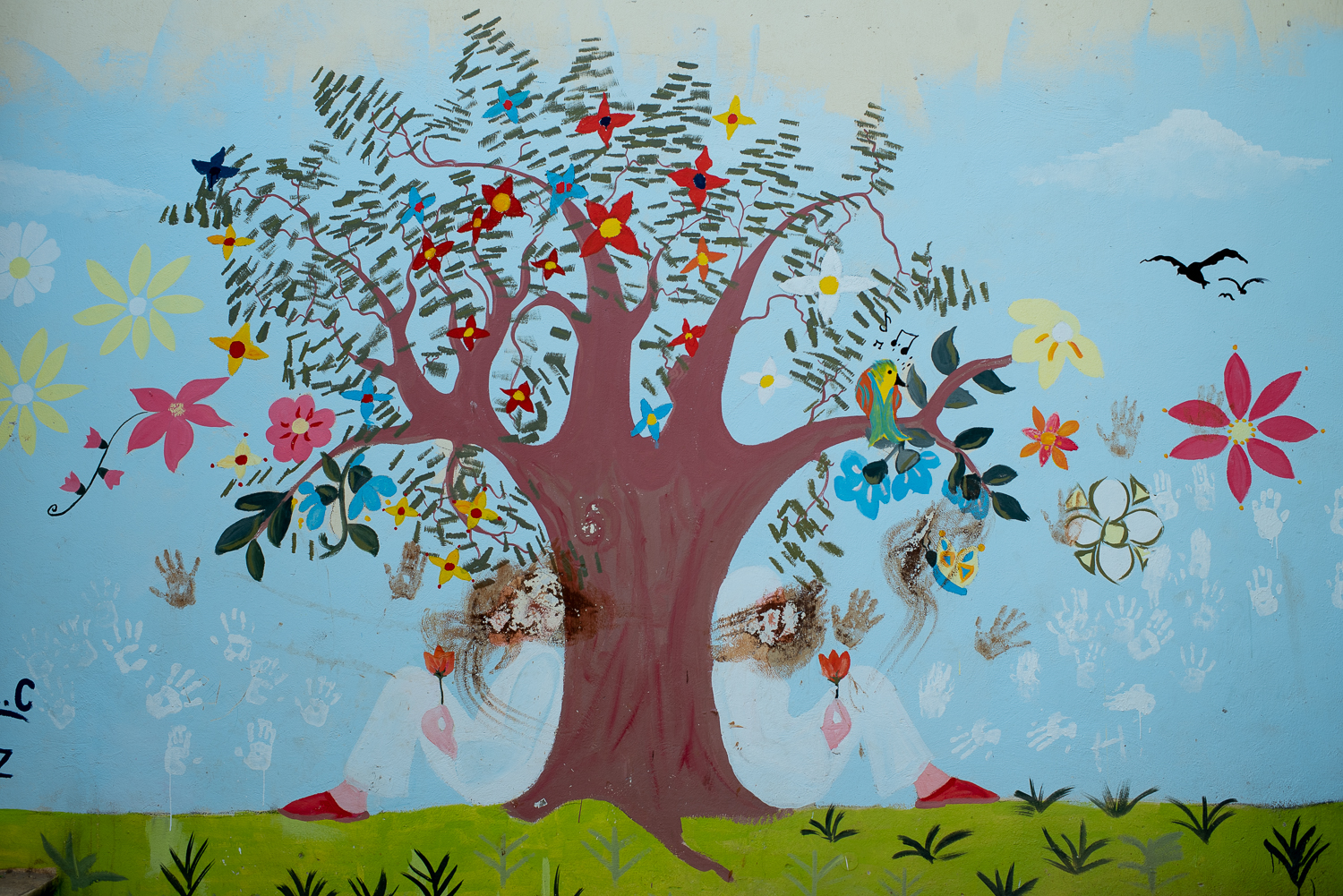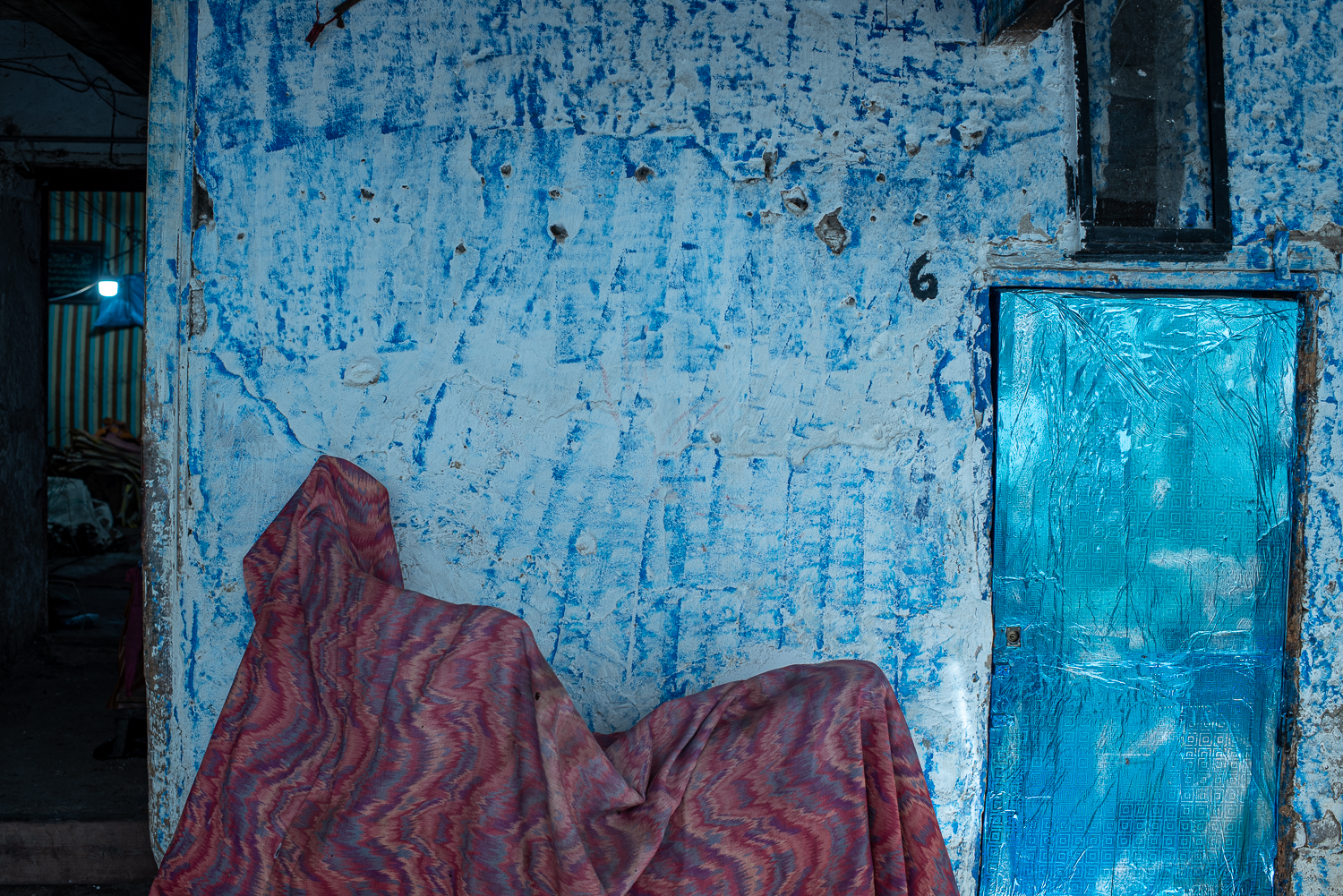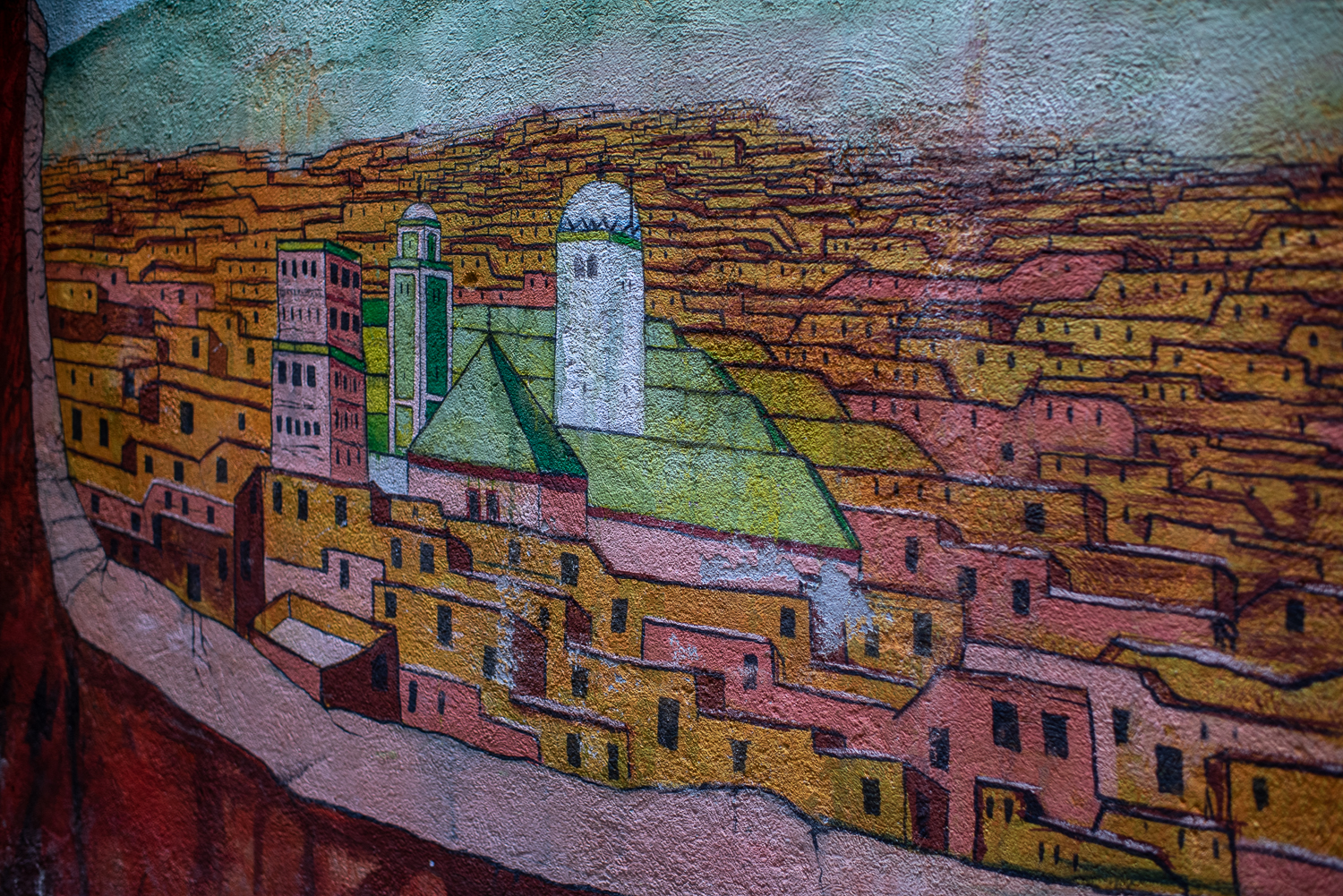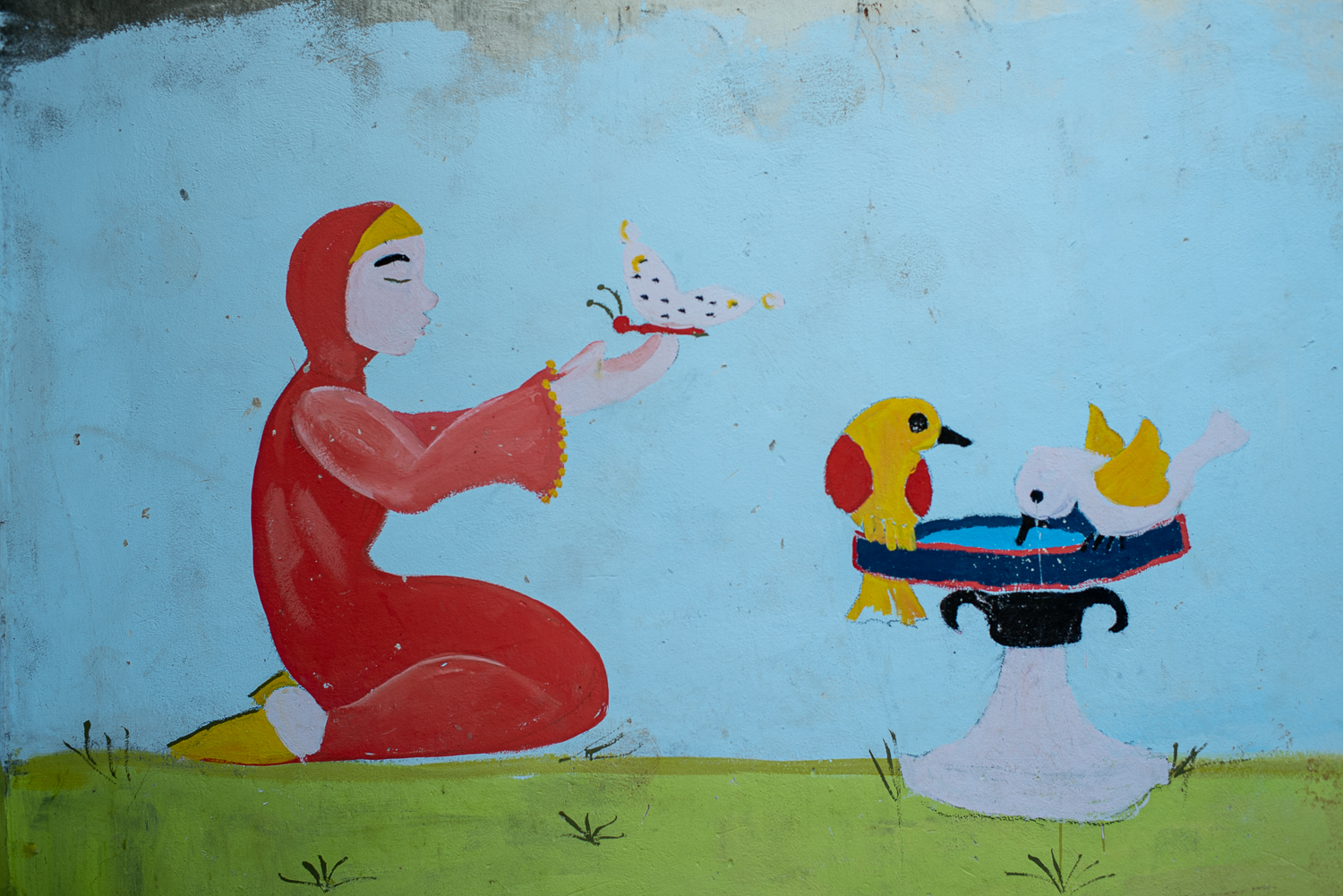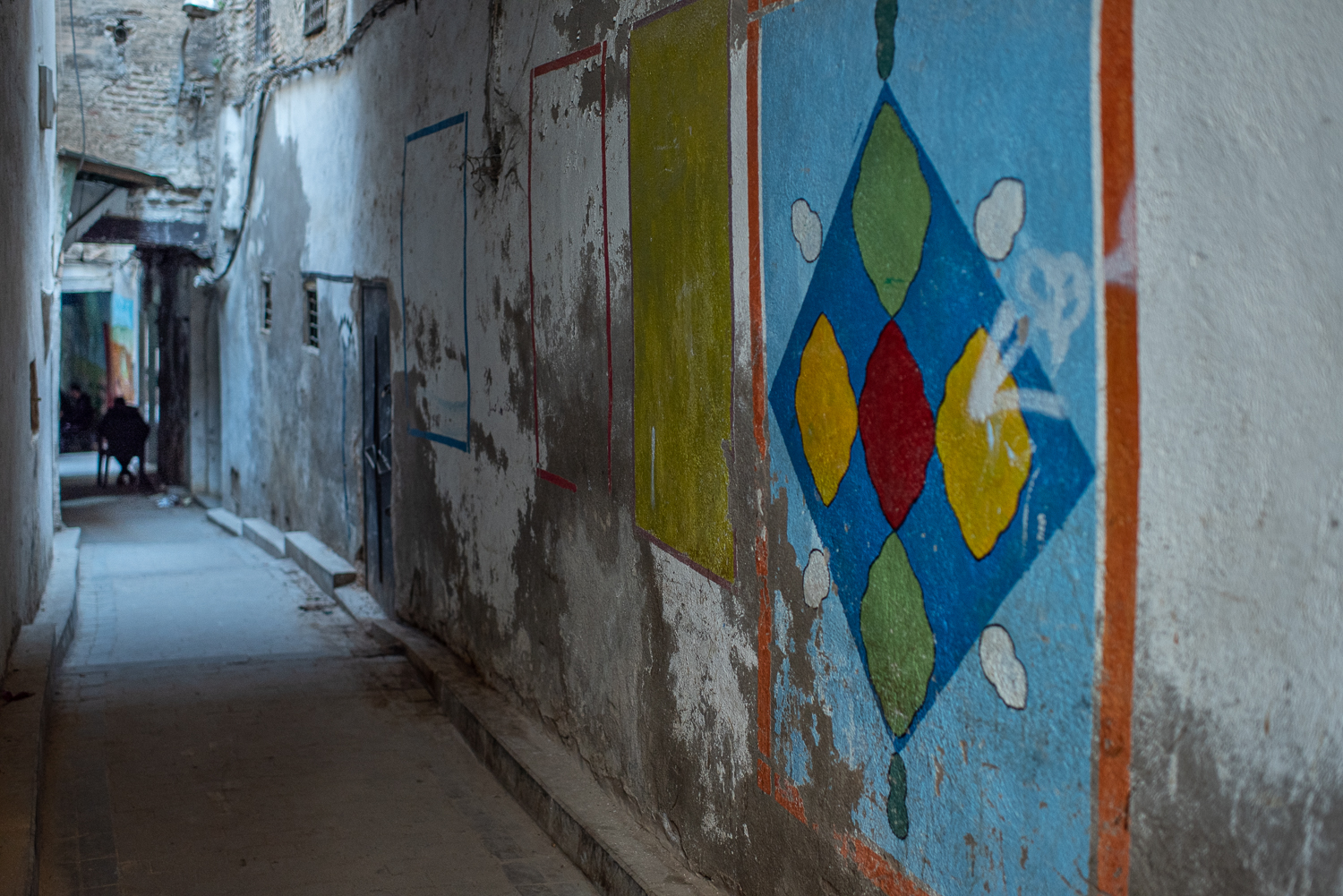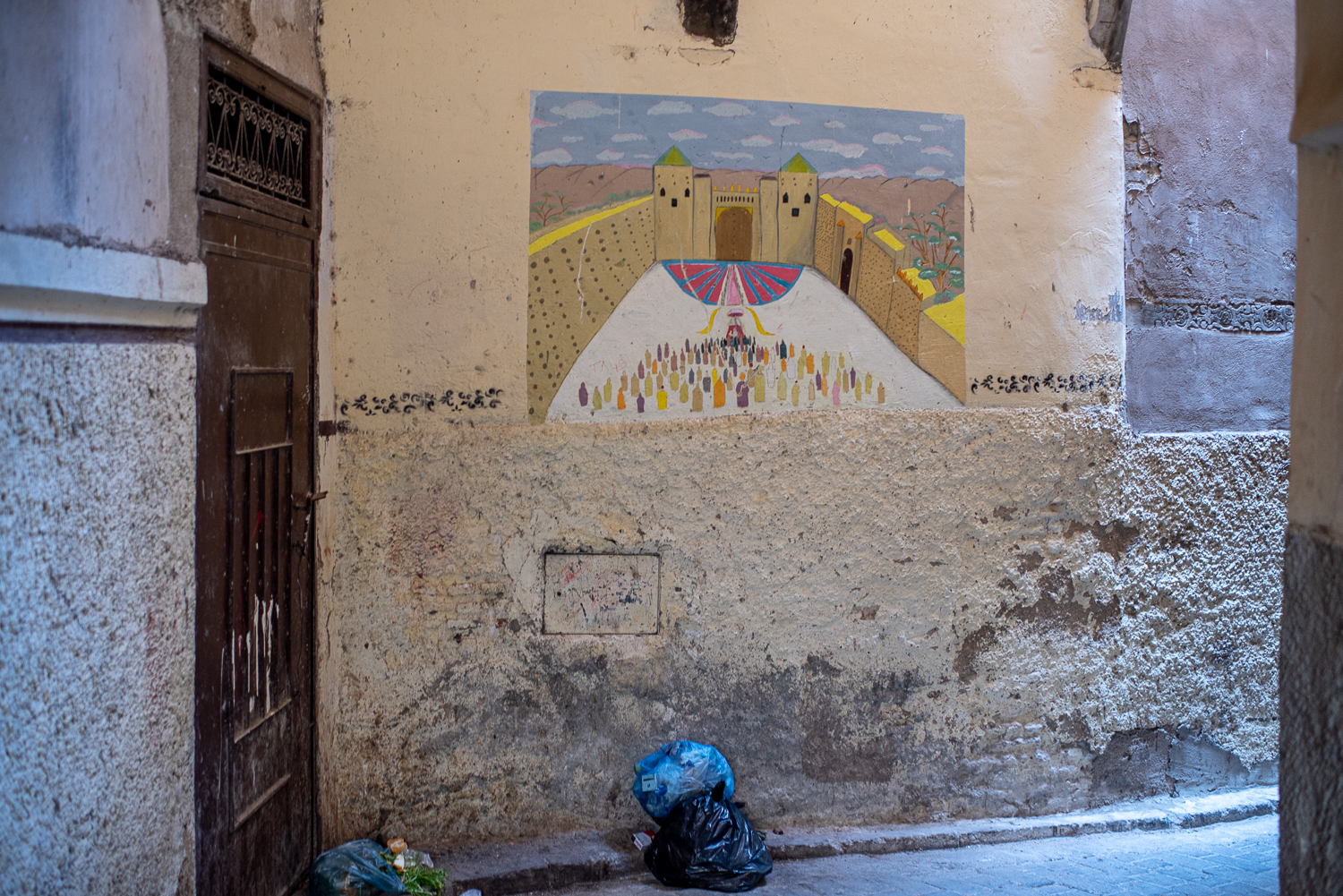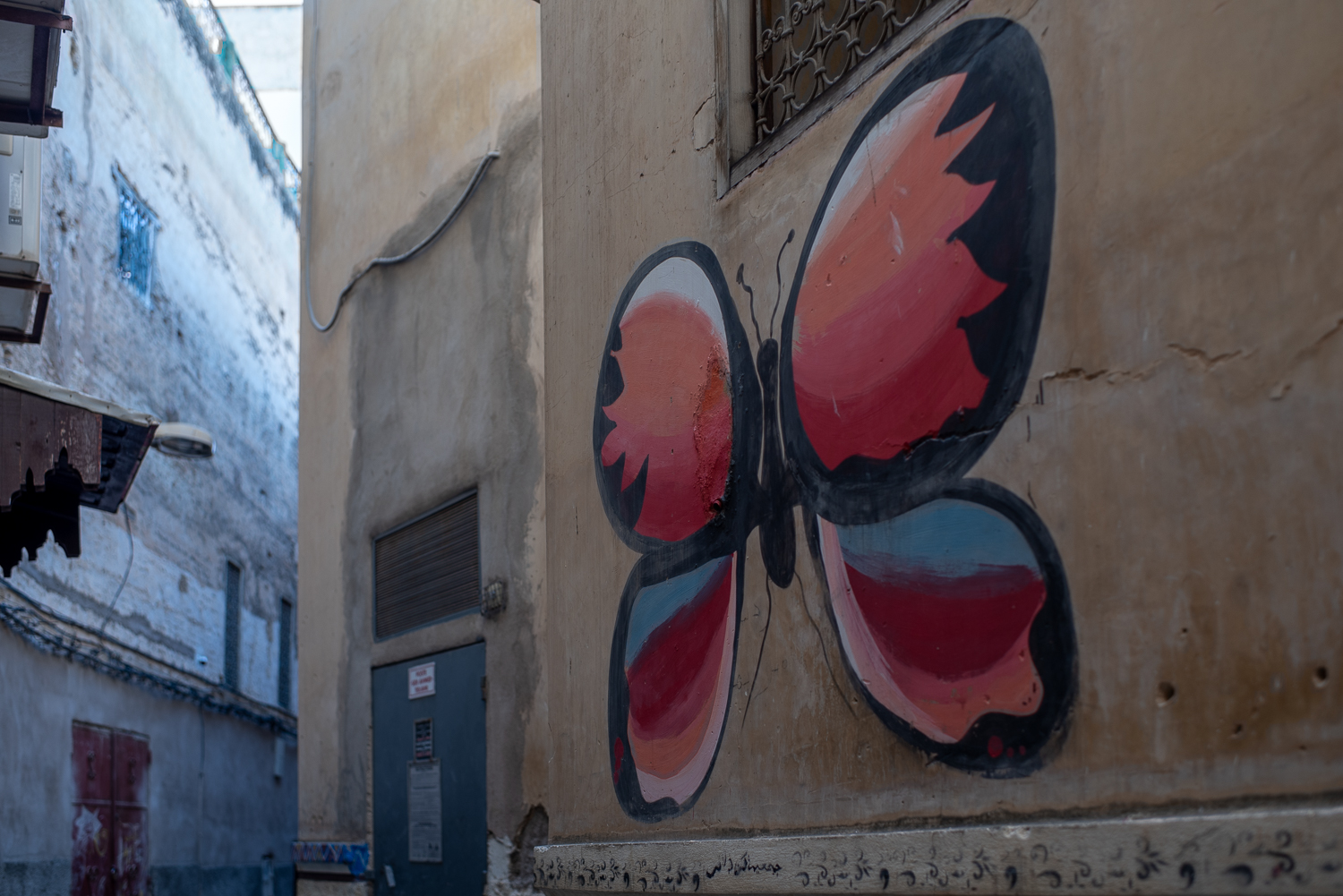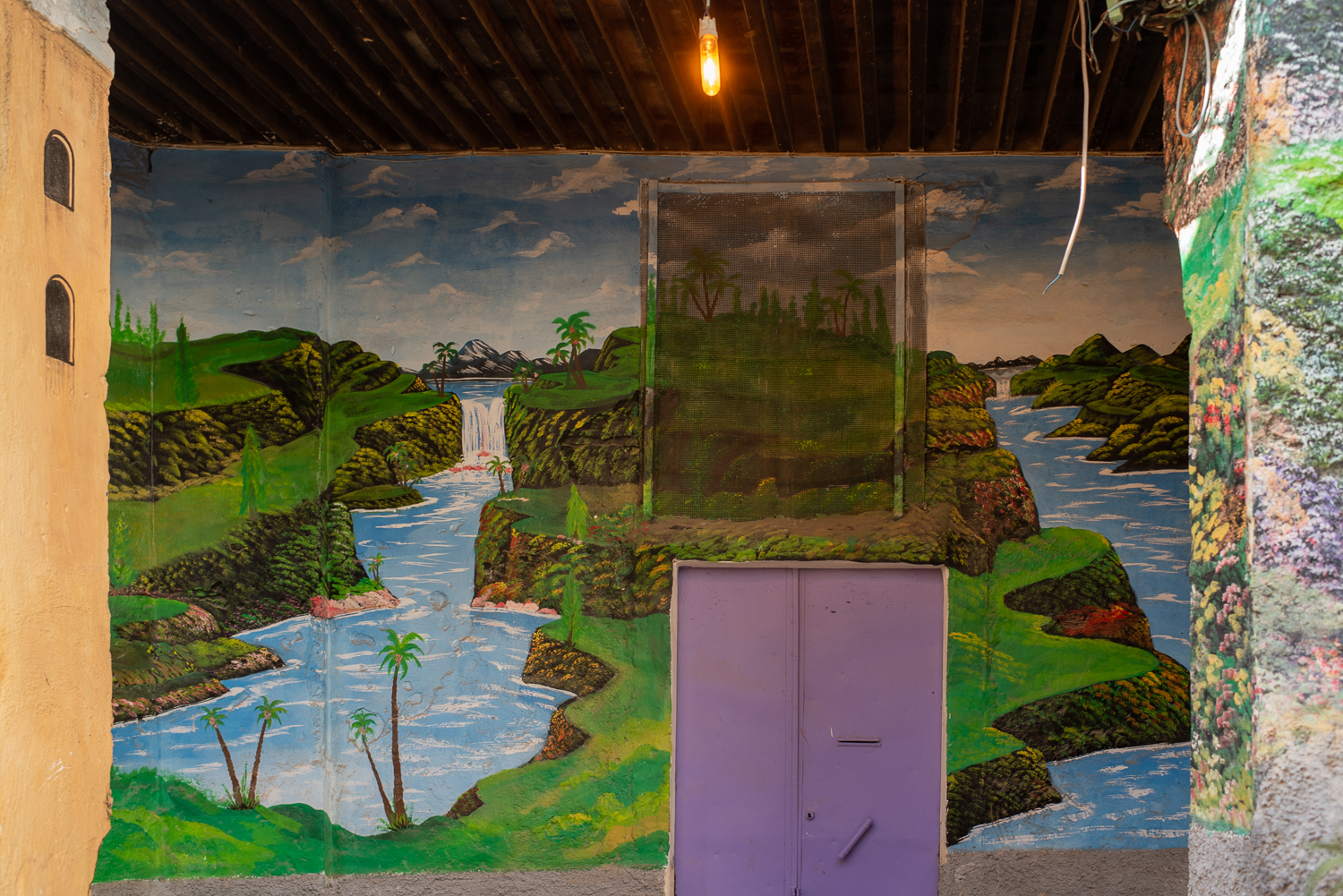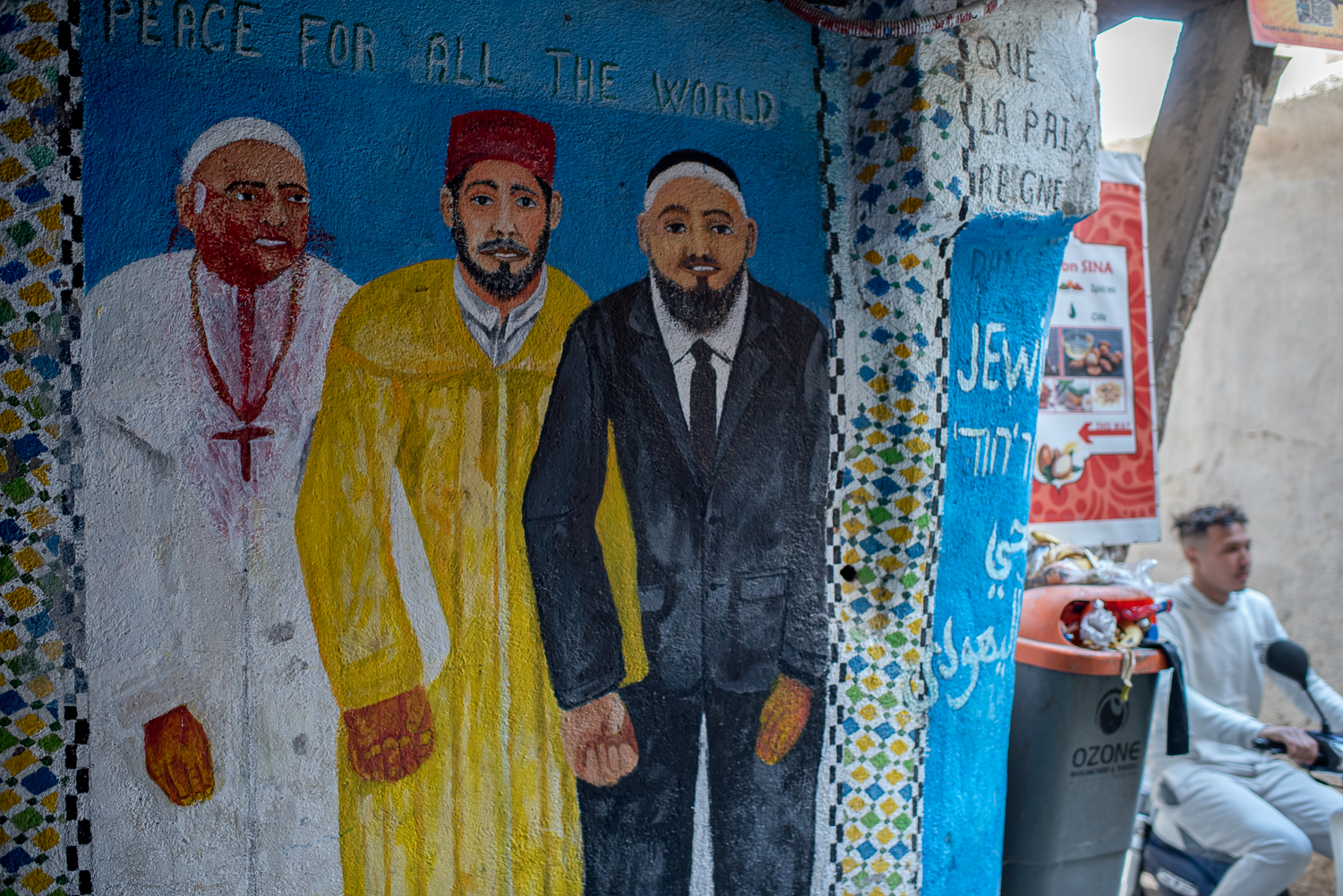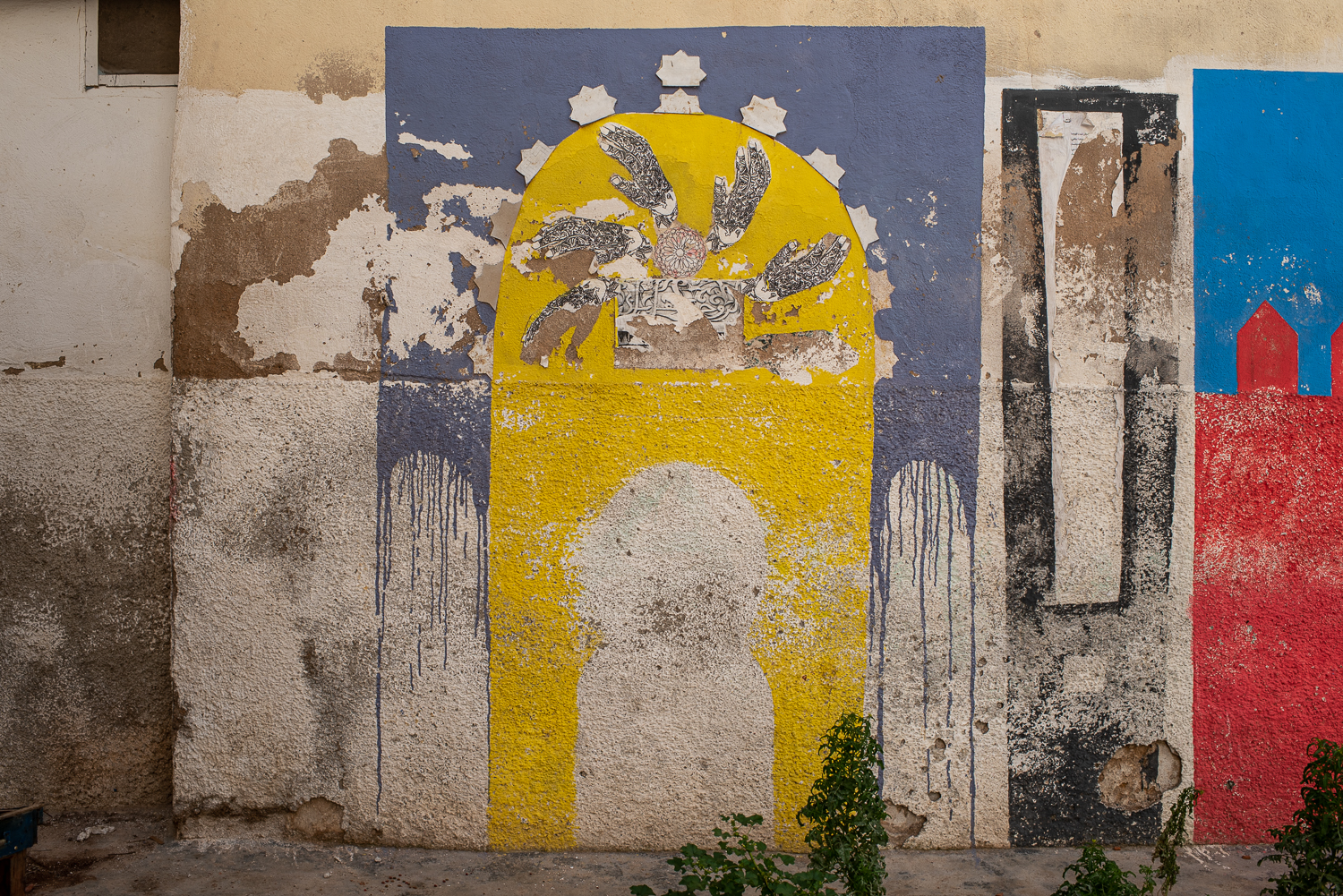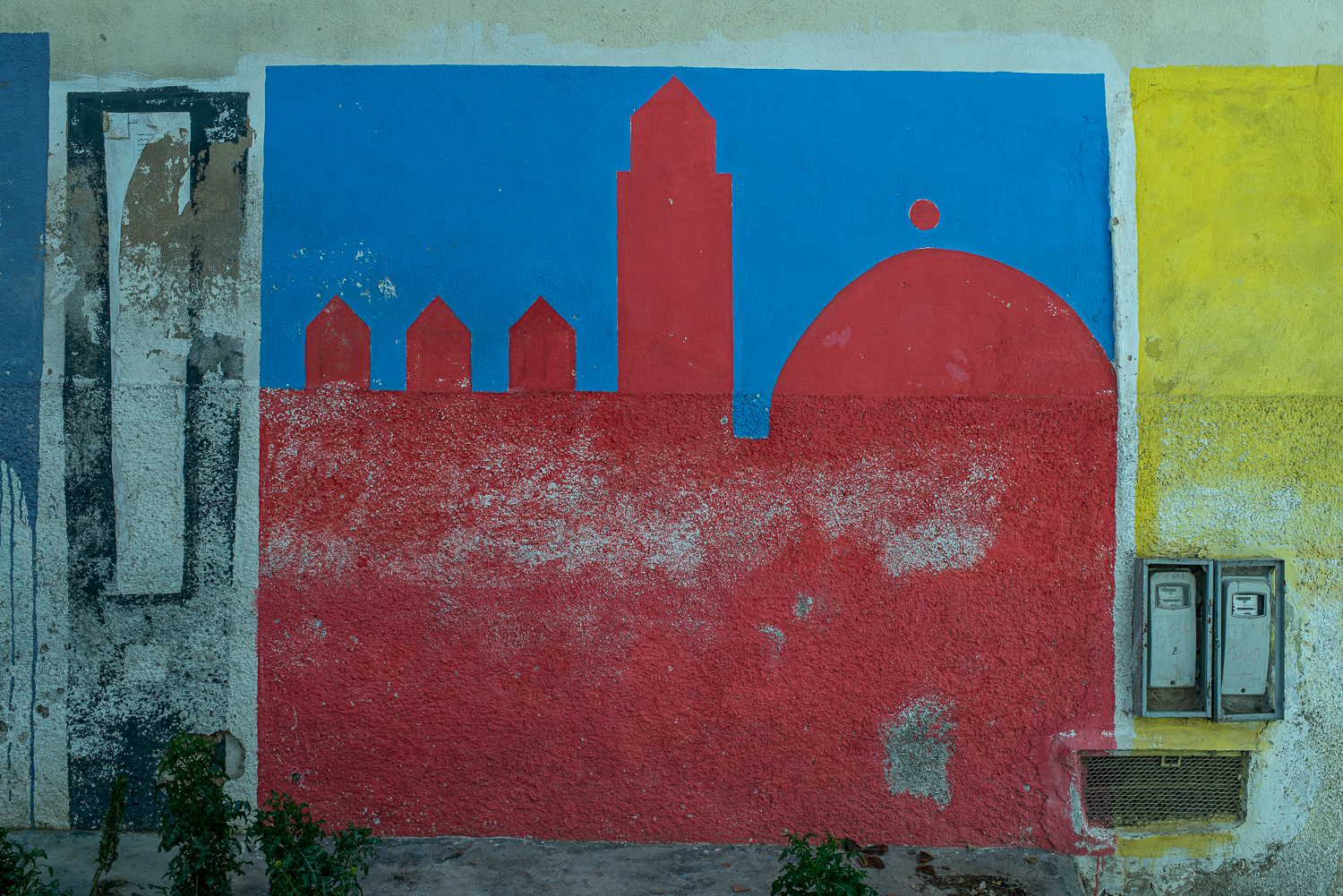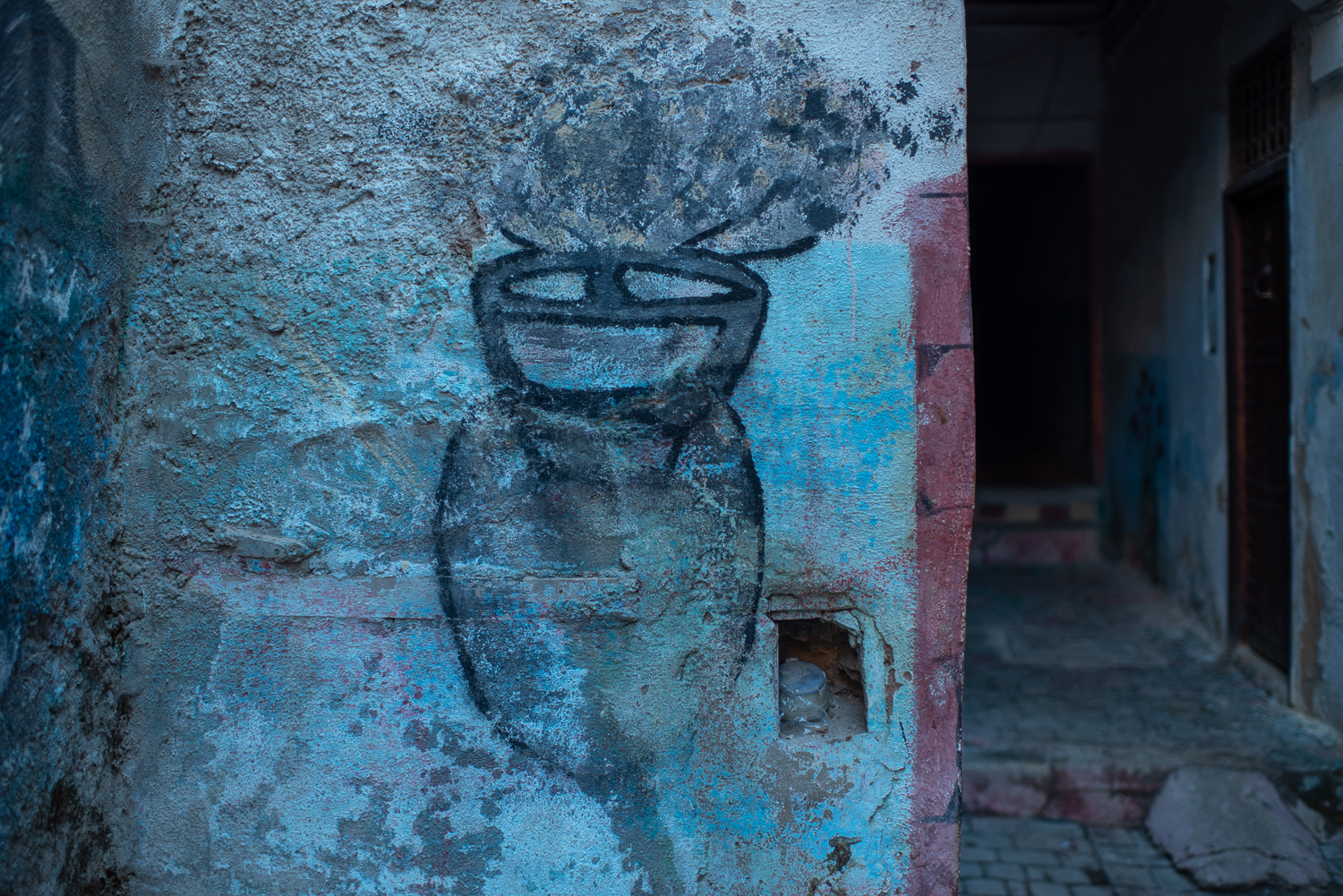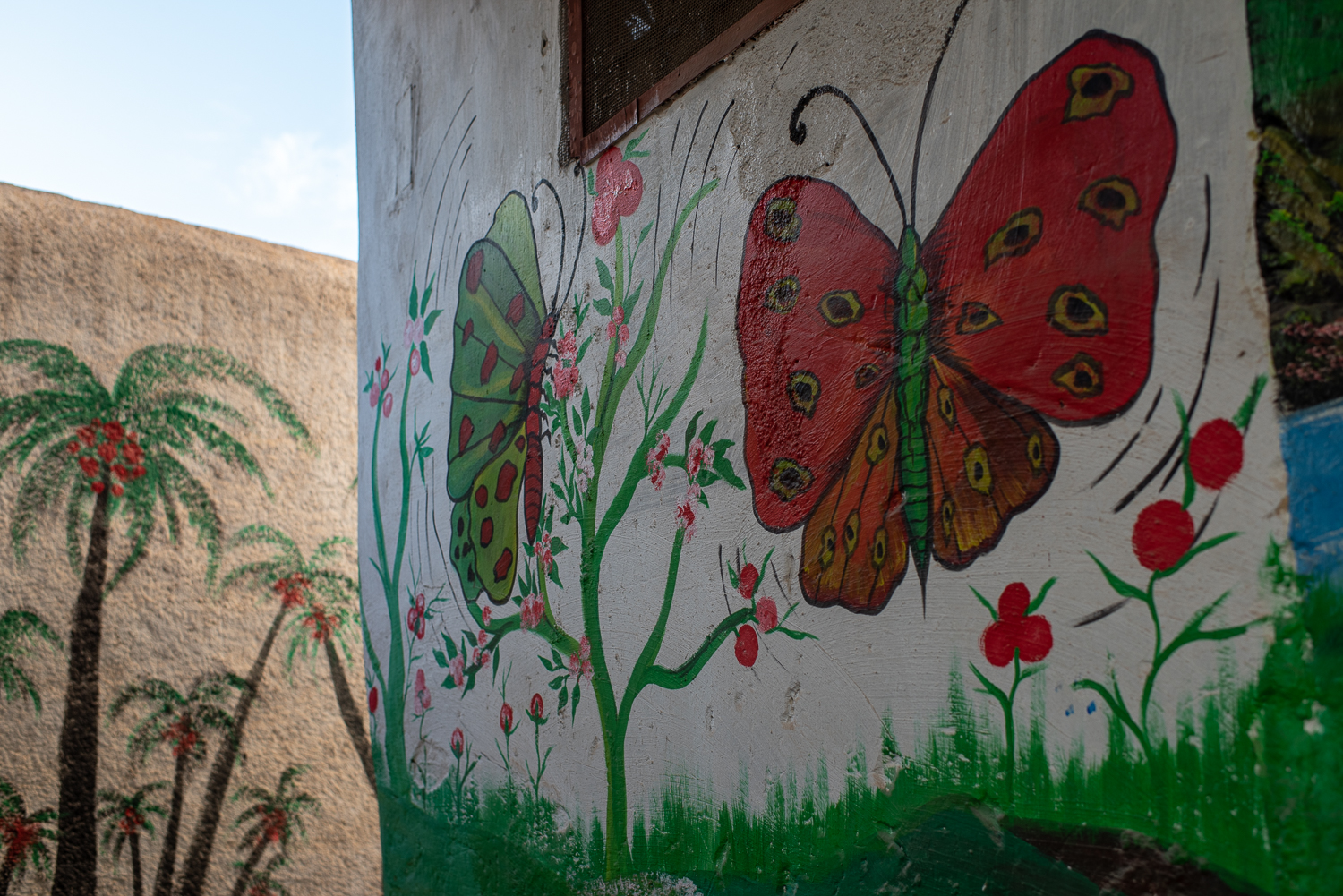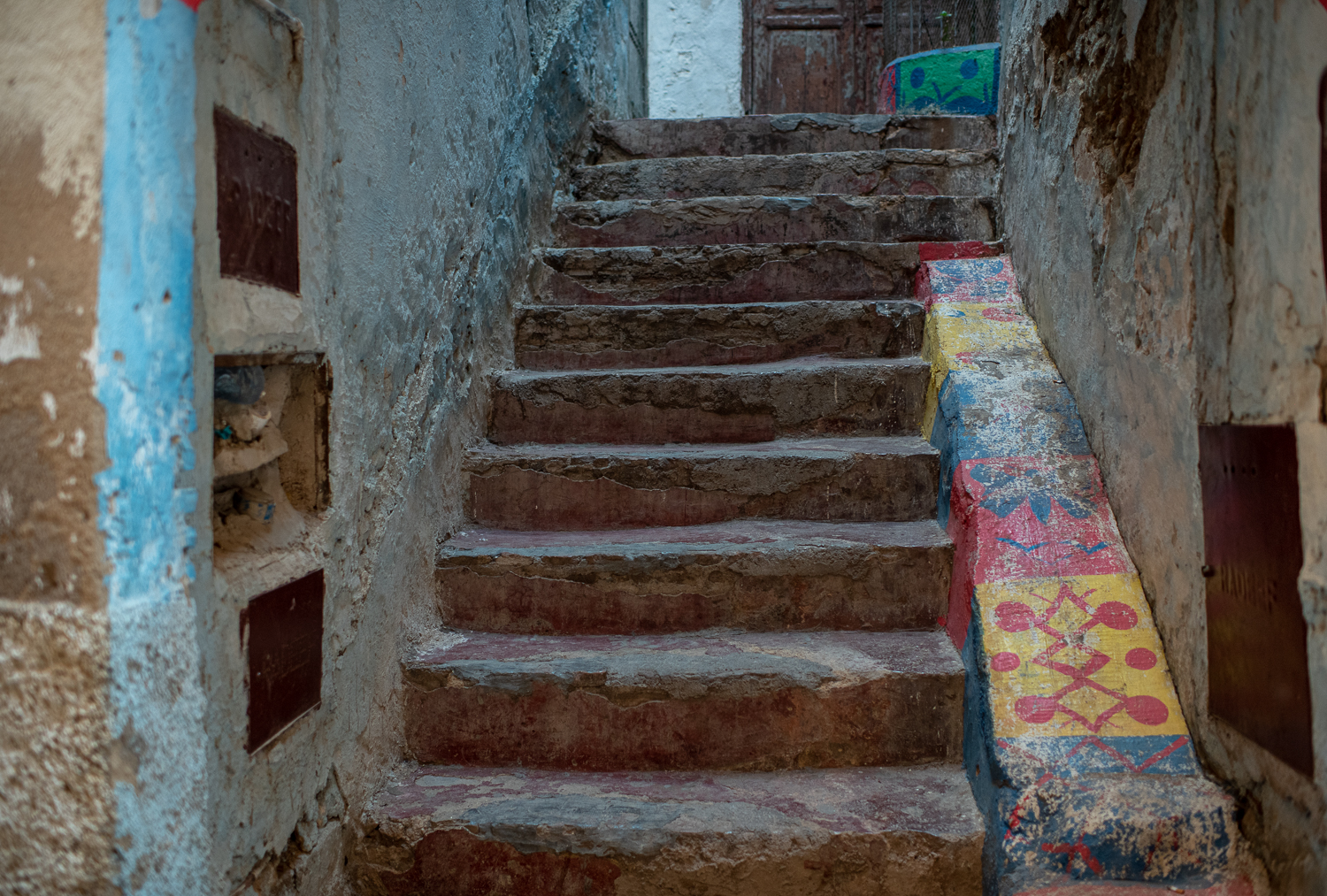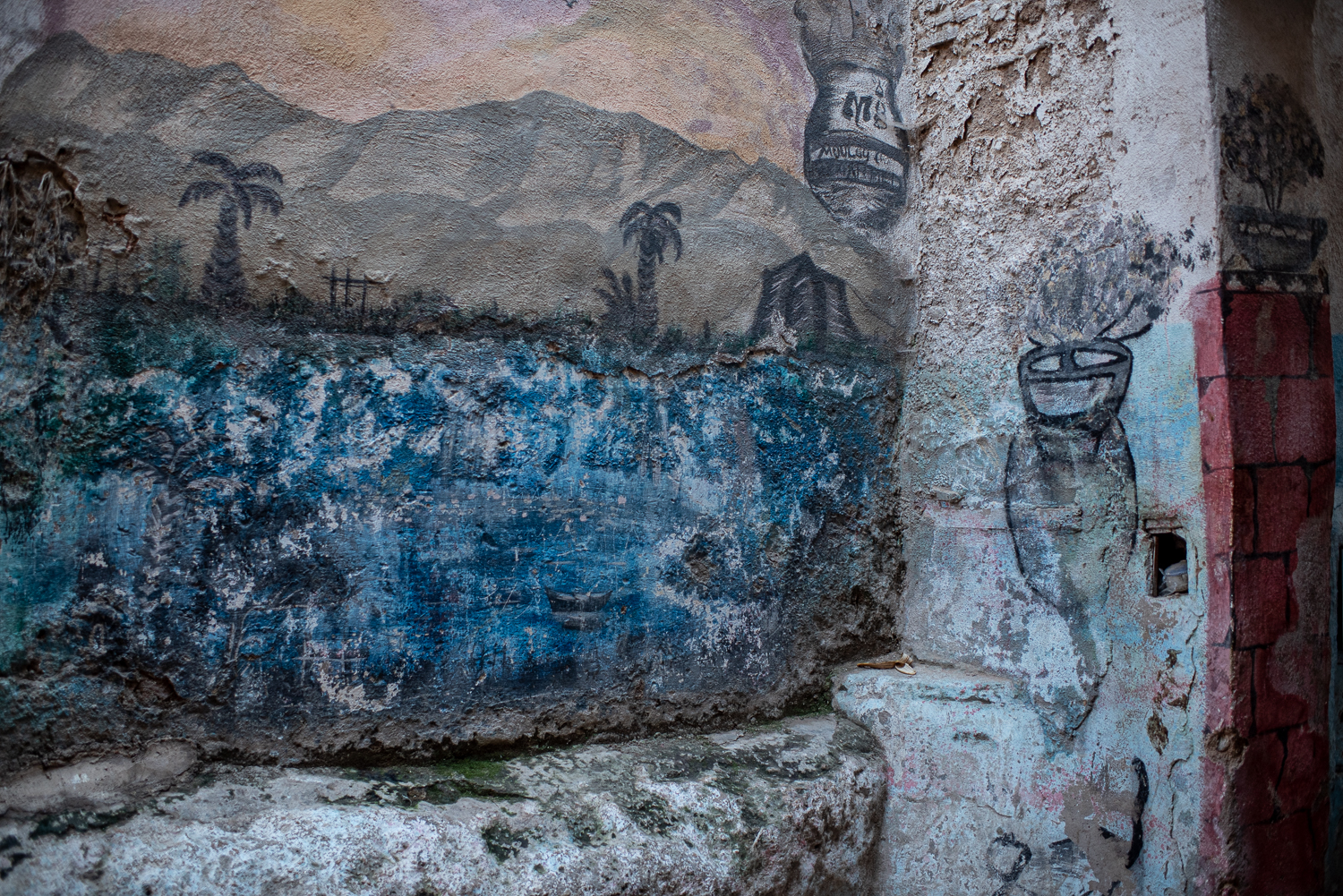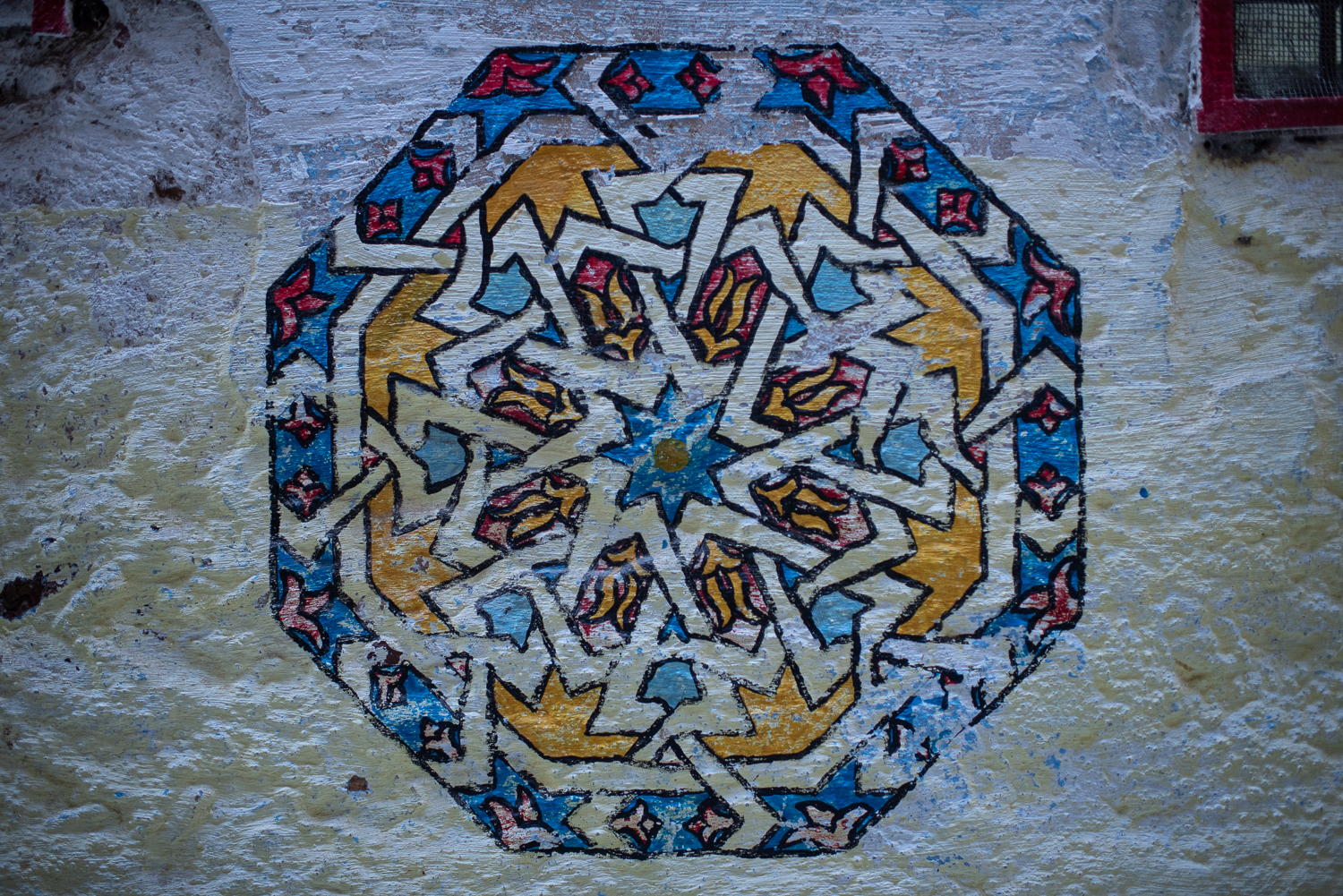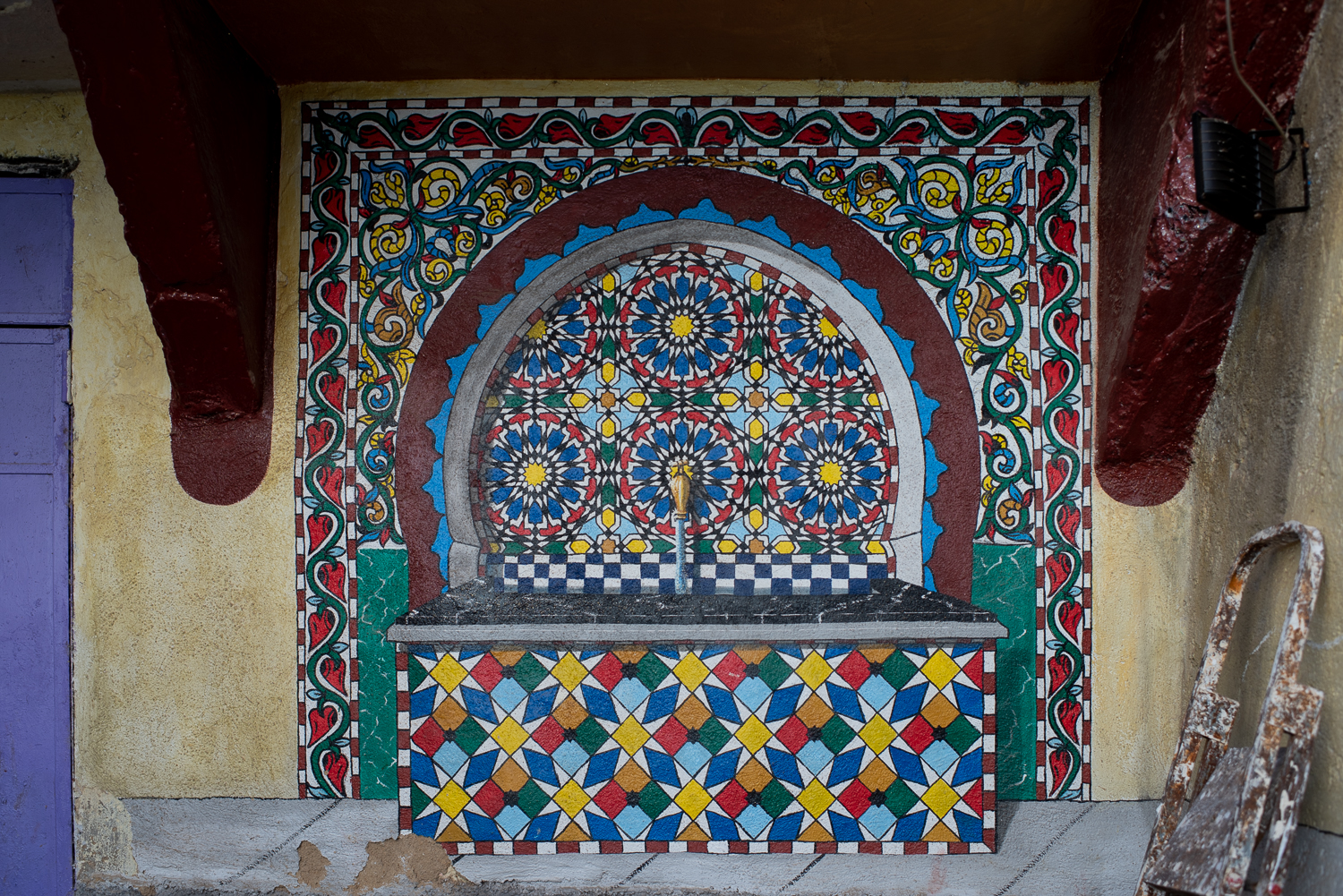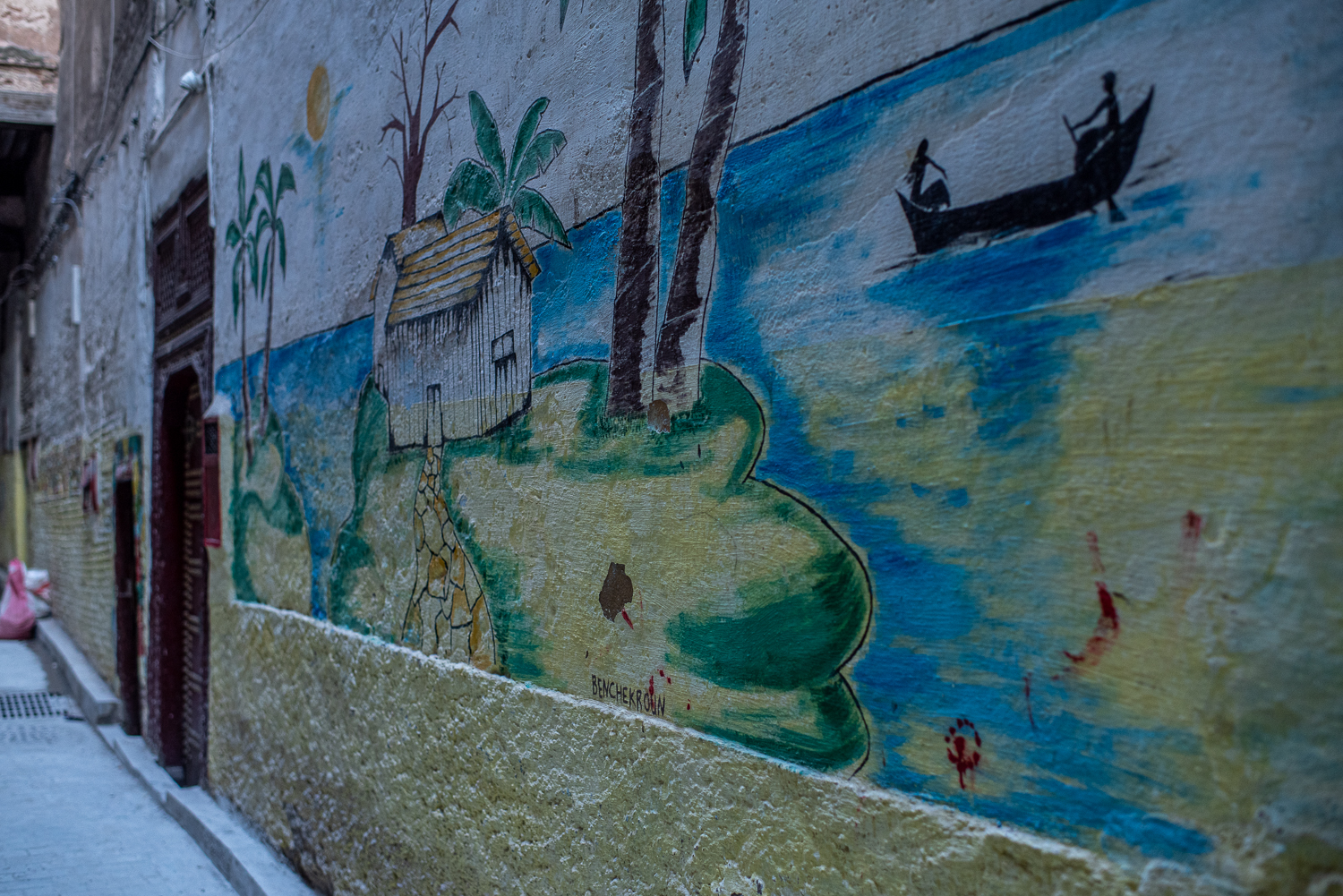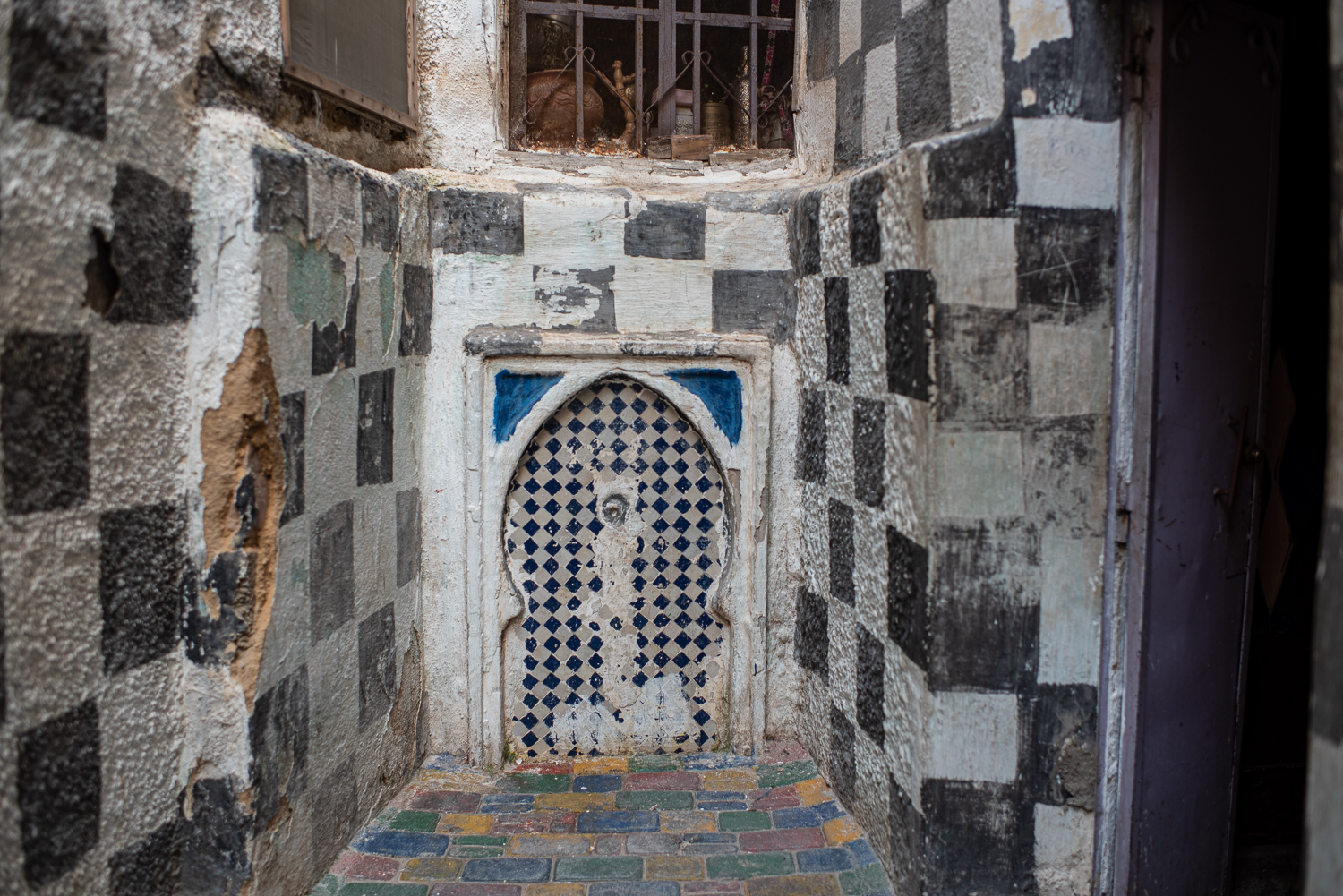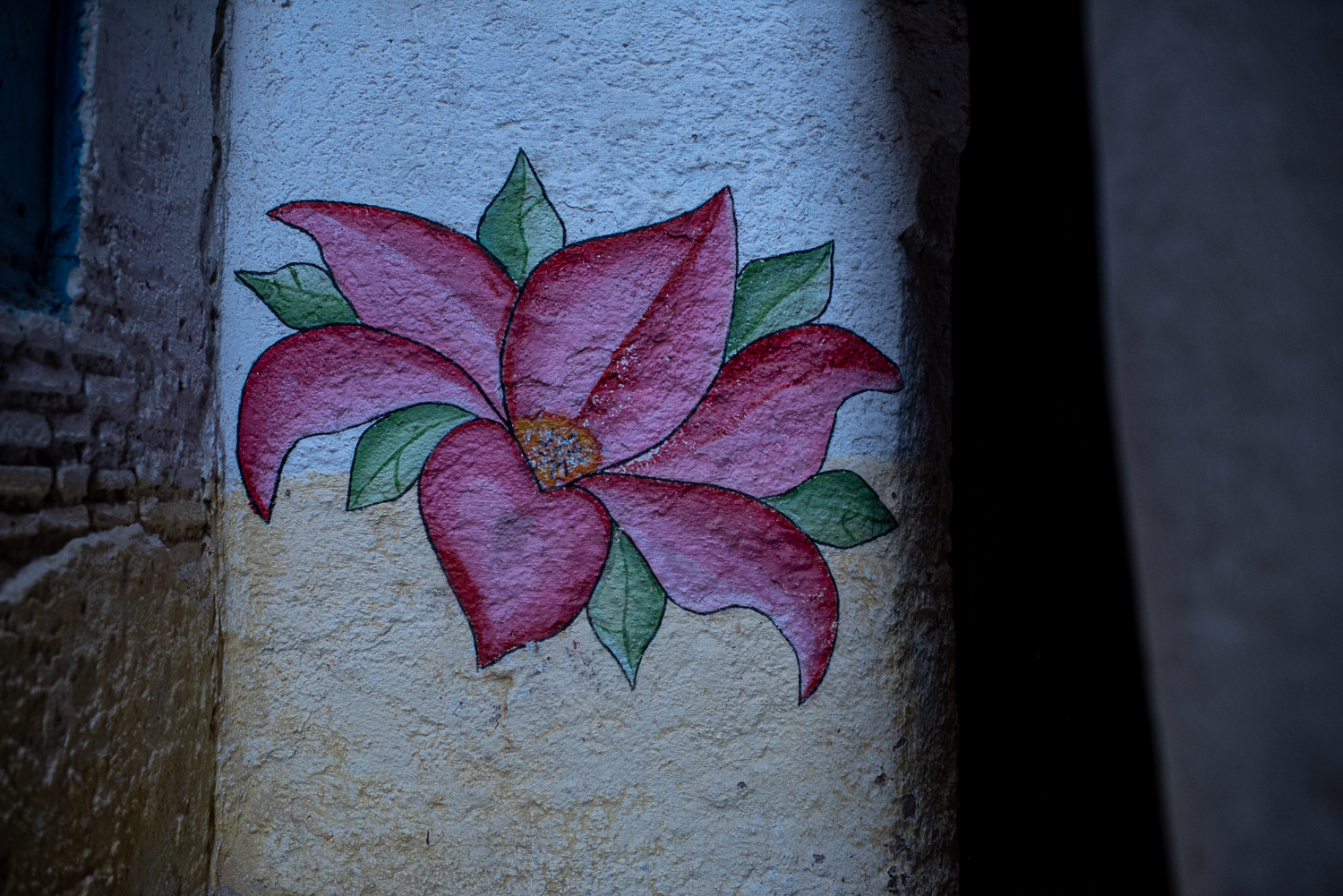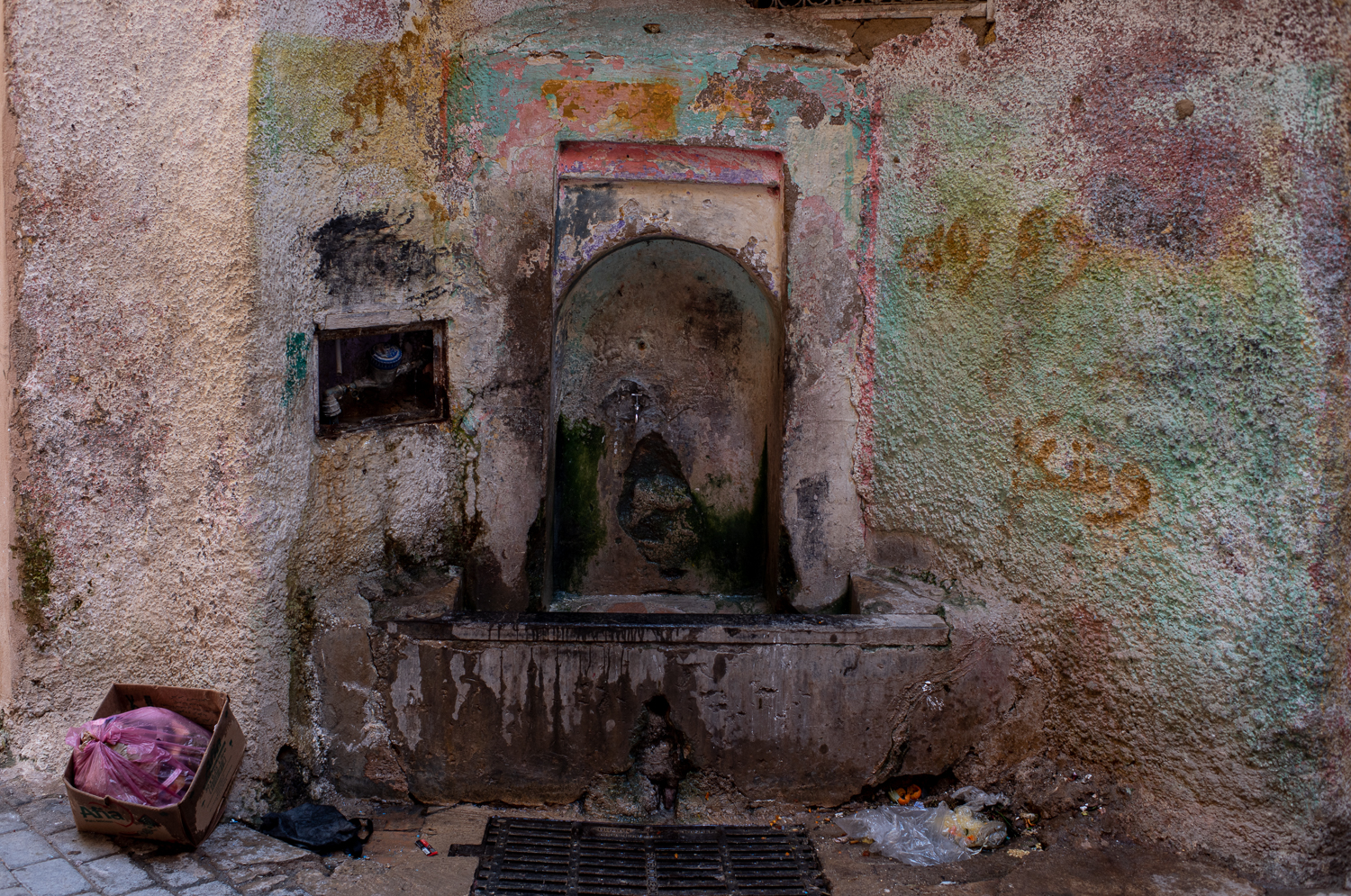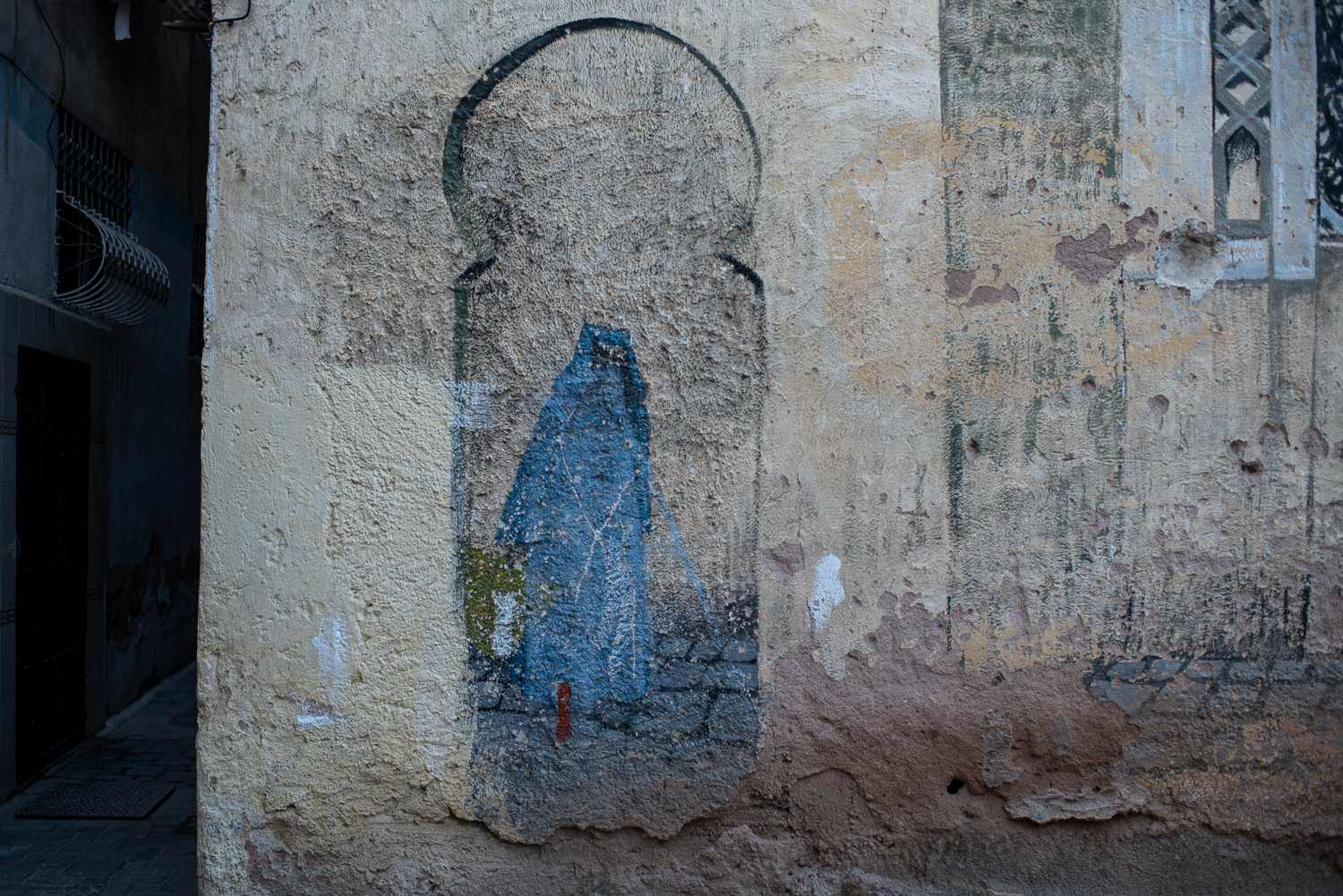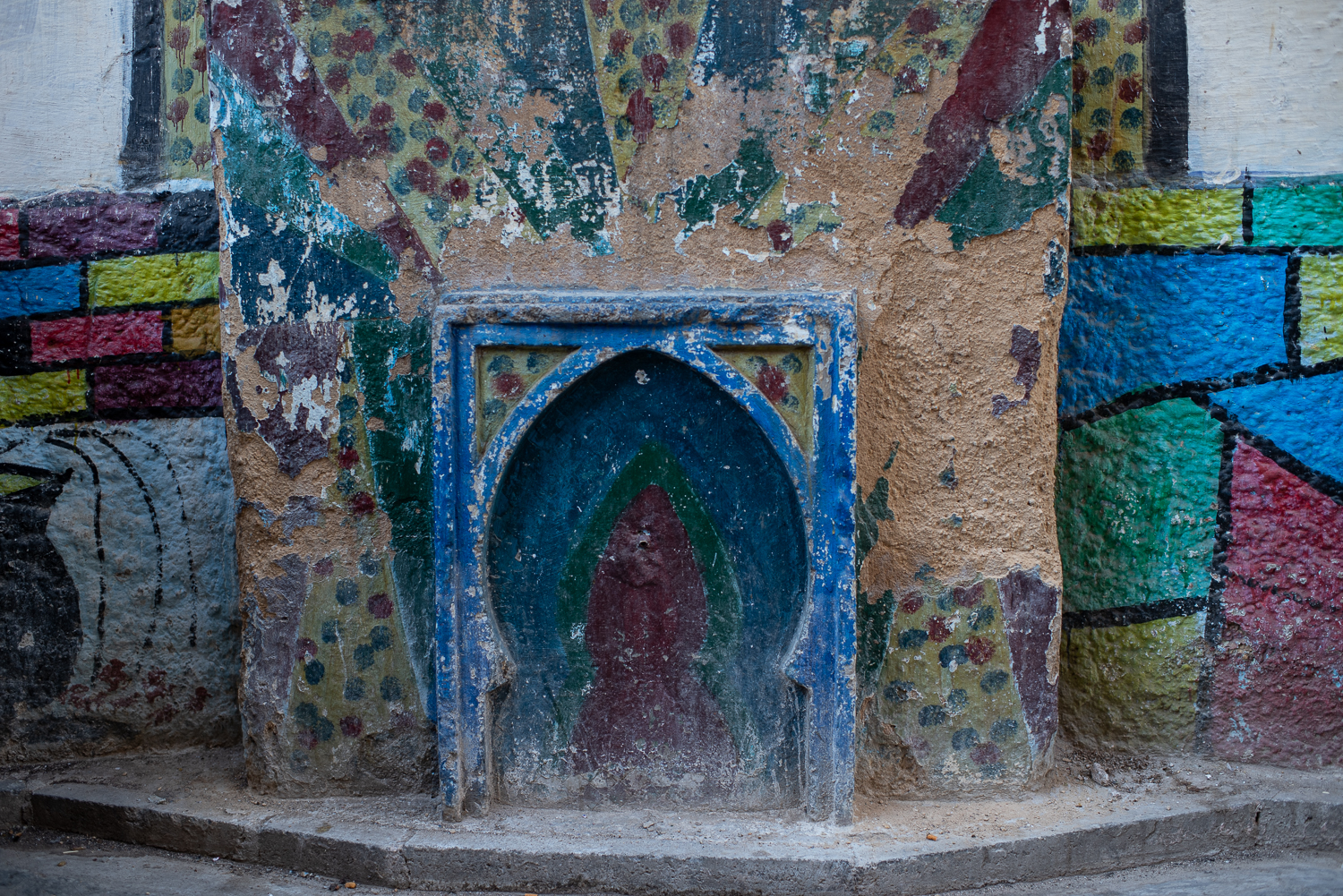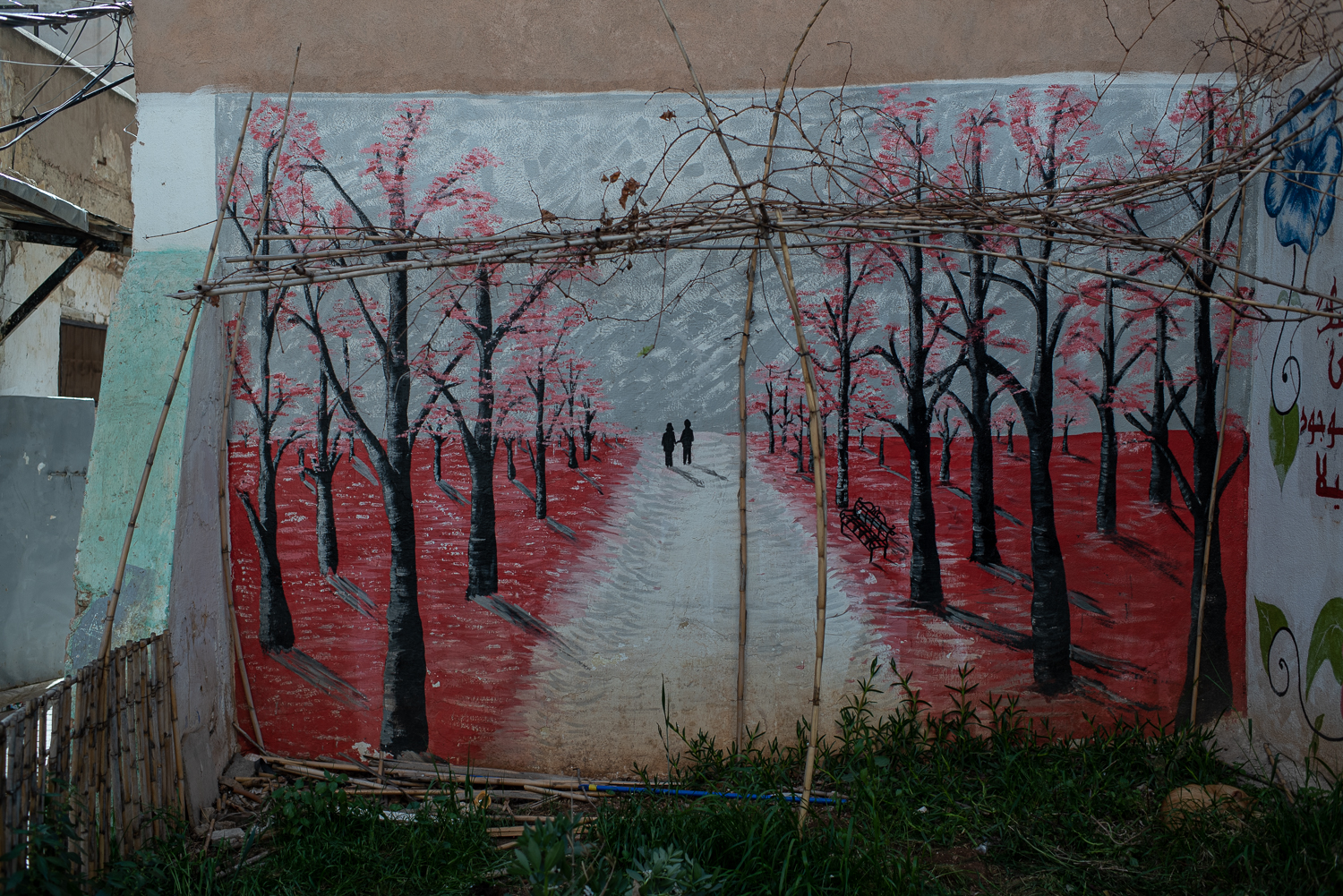This post describes a continued interest in the role and relevance of street art, on this occasion in Morocco. I have visited Morocco on at least 6 occasions over the last decade, and for an extended period of time rented a house in the medina in Essaouira. Other times I have stayed with good friends in Chefchaouen, made solid friendships with a family living in a Jewish cemetery in Meknes, stayed for several months in Fes and comprehensively visited the northern cities of Tangier and Tetouan. The attraction was initially in exploring the Sufi heritage of saints and the qubba, or little white tombs of Marabout saints, which romantically and mysteriously dot the Moroccan landscape. More recently I have made several visits to Ouezzane, a town in the north which celebrates a particularly rich Sufi heritage.
This interest quickly extended into the way that Morocco uses colour to both differentiate and delineate its cities by painting its medinas in unique colours and the use of wall art in these urban environments to convey both wider cultural constructs and more local customs and sensibilities.
In a country where the police and military mostly influence and dictate civilian norms, several cities in Morocco have been deliberately promoted to hold annual art festivals, where international artists are invited to celebrate urban spaces by painting on wall canvases ascribed by the local authorities. The Jidar Street Art Festival in Rabat is perhaps the best known example of this, although it may be argued that such deliberate useage of street art to promote international interest and acclaim is in direct contradiction of the history and primary function of street art. There has been suggestions that it maybe a form of systematic political gentrification appealing to an increasing international presence and obscuring the less attractive practices of a poor and oppressively state controlled country.
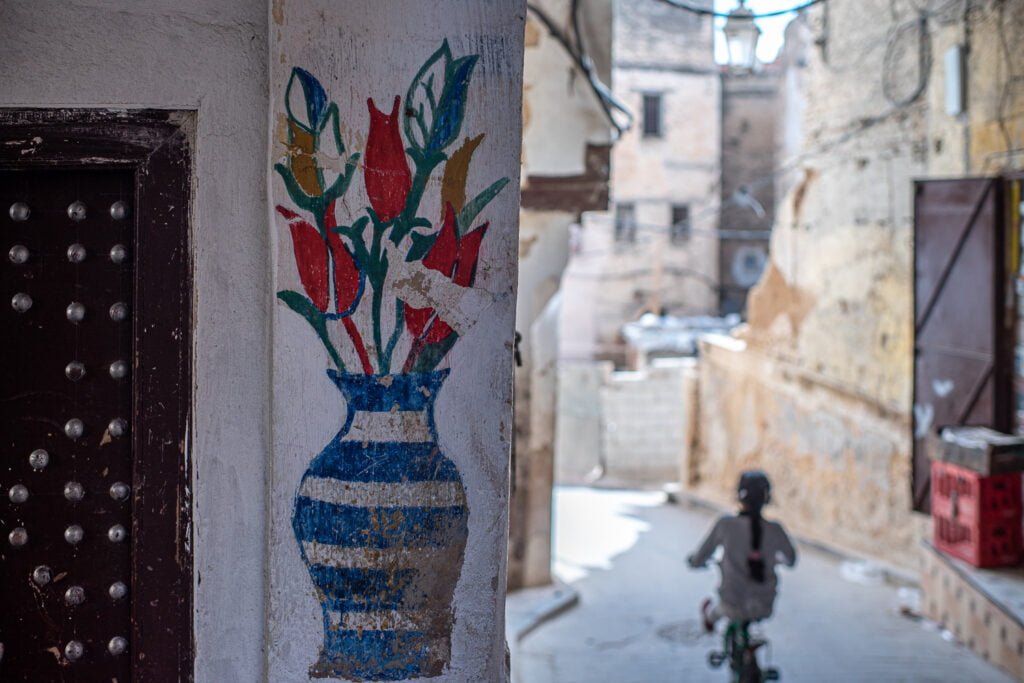
But what is street art, and what is its function within a community?
The article ‘About Street Art and its Function Within the Urban Landscape‘ perhaps provides some ideas regarding this.
“It has been said that some street artists simply see urban space as an untapped format for personal artwork, while others who might feel disenfranchised want to utilize public space to not only reach a much broader audience than traditional artwork and galleries normally allow. However, I think that the universal theme of street art is the transformation of spaces into places in an attempt to directly affect the members of the community by reclaiming public spaces. It brings the community together by creating a sense of shared experience. This alone breaks the routine of urban disassociation. What was once a third space becomes a place, a landmark commonly recognized by members of its community.
Therefore, the role of street art is to transform these empty spaces into places, and to recharacterize the faceless masses of the pedestrian public into the individually recognized yet collectively termed entity of “the people.” This entails a merging of the individual with “common” interests, which results in street art becoming a personal as well as a shared experience. It is with this in mind that street artists have attempted to create a notion of community within their artwork. Inevitably, street art is controversial, for in a world of injustice, exploitation, war, and alienation, a formulation of values implies a criticism of that world and the projection of a possible alternative world. Street art becomes a form of symbolic social action and implies further social action.”
Festivals such as the Jidar Street Art Festival in Rabat, although interesting, may not wholly reflect the communities in which those paintings are created. The informal colours, graffiti and and more disparate drawings which create an intimate and residual representation of communities are of more interest to me. Whether those ‘decorative’ works can be considered ‘high art’ is an irrelevance; I believe they do constitute a form of ‘folk art’ created by often local people and portray localised cultural associations which are affirmative and supportive to that commuity on an every day basis.
My interpretation of ‘street art’ may be a little unconventional and all-inclusive, especially in somewhere like Morocco where intense colour, idiosyncratic juxtapositions of colour and design, and often degradation and decay of materials and fabrics combine to produce a febrile mix of visual and cerebral stimulation. Combined with often stark sunlight, the intoxicating effect is difficult to over-exaggerate, and to live within these environments on a daily basis does influence perception. I see them as ‘liminal’ environments which contribute to psychological and spatial factors necessary for other cultural expression, such as music, art and spirituality. The popularity of ‘hadra’, or trance states, for example may be related to the bewildering combination of local colours, heat and intense natural light.
The three areas visited recently, Chefchaouen, Fez and Ouezzane, are significantly different towns and cities, and in these representations Chefchaouen, a once isolated northern town in the Rif mountains, has become a popular tourist destination. It is famous for its ubiquitous blue colour throughout its medina, depiction of its Riffian mountain culture through paintings and colourful useage of Spanish style ceramics . The local springs at Ras el Maa provide a plentiful water supply to the town and may explain why there is little depiction of waterways and rivers in its local street art.
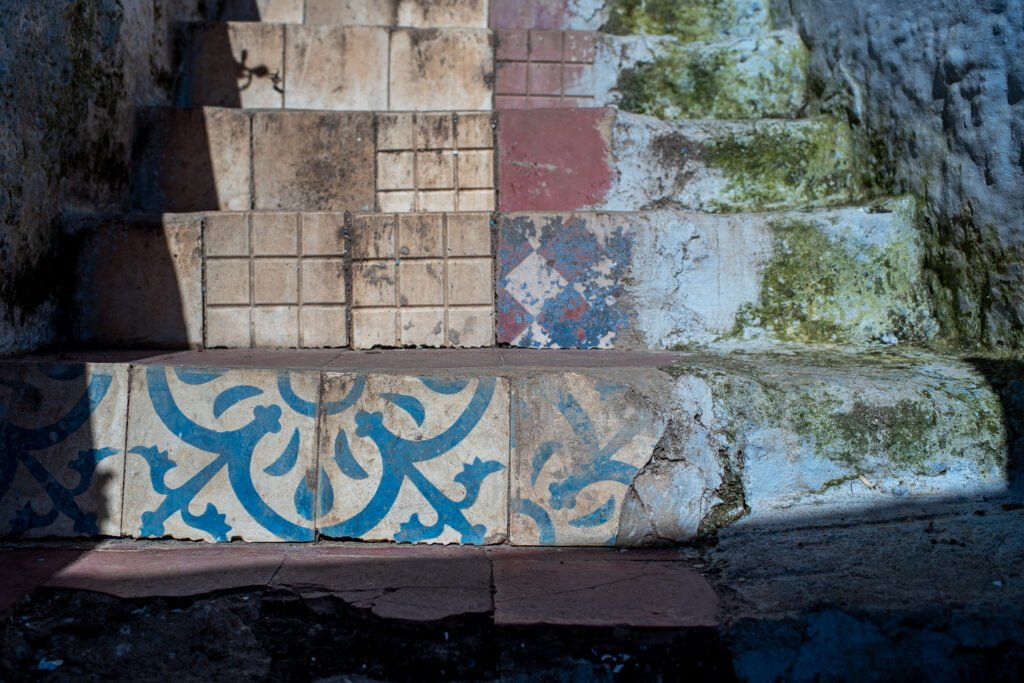
Ouezzane, some 50 miles south of Chefchaouen, is famous for its local olive productions, and the medina is painted green to both reflect that and also to reflect its spiritual, Sufi associations; green is the colour of paradise in the Quran. Many of its wall paintings depict large, sheltering olive trees above an African urban settlement.
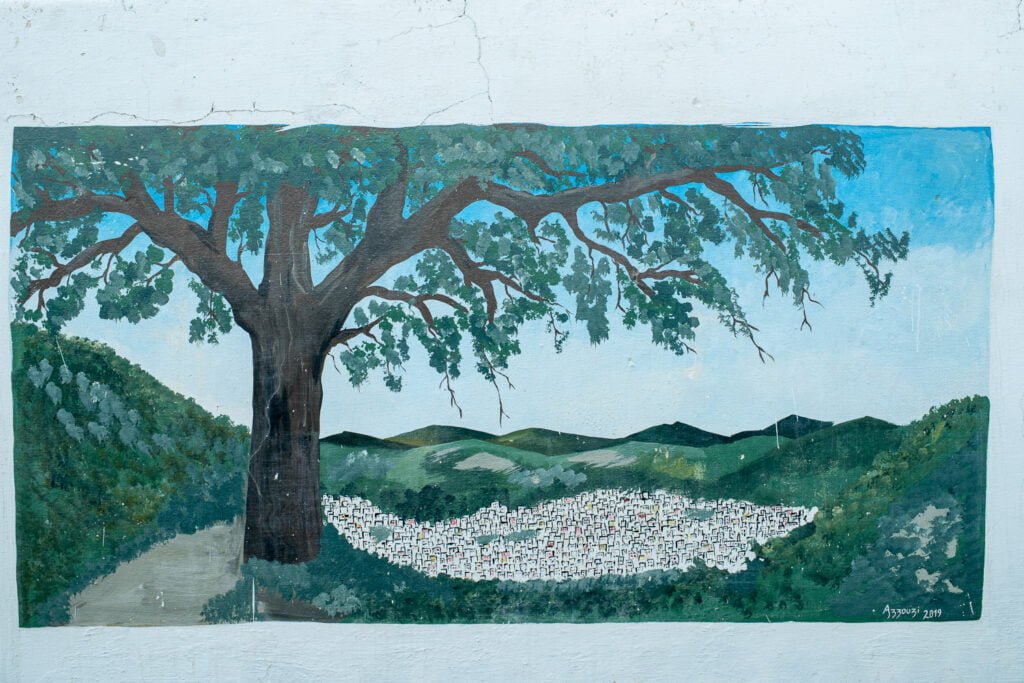
Deep in the urban labyrinthine passageways and lanes of Fes paintings of plants, gardens, rivers and waterways are very popular. Several local people described these depictions as being portrayals of Babylon, but I can subsequently discover little connection between Babylon and the gardens of paradise in the Quran. Maybe the legendary ‘lost gardens of Babylon’ provide a context for these statements, but I can find no authoritative texts to support this. The closest analogy I can find is that the garden of Eden represesents the ‘fourth layer of the Islamic heaven and not necessarily thought as the dwelling place of Adam’. What is interesting though is the frequent depiction of water within a beautiful landscape existing within a heavily populated, congested and arid urban environment.
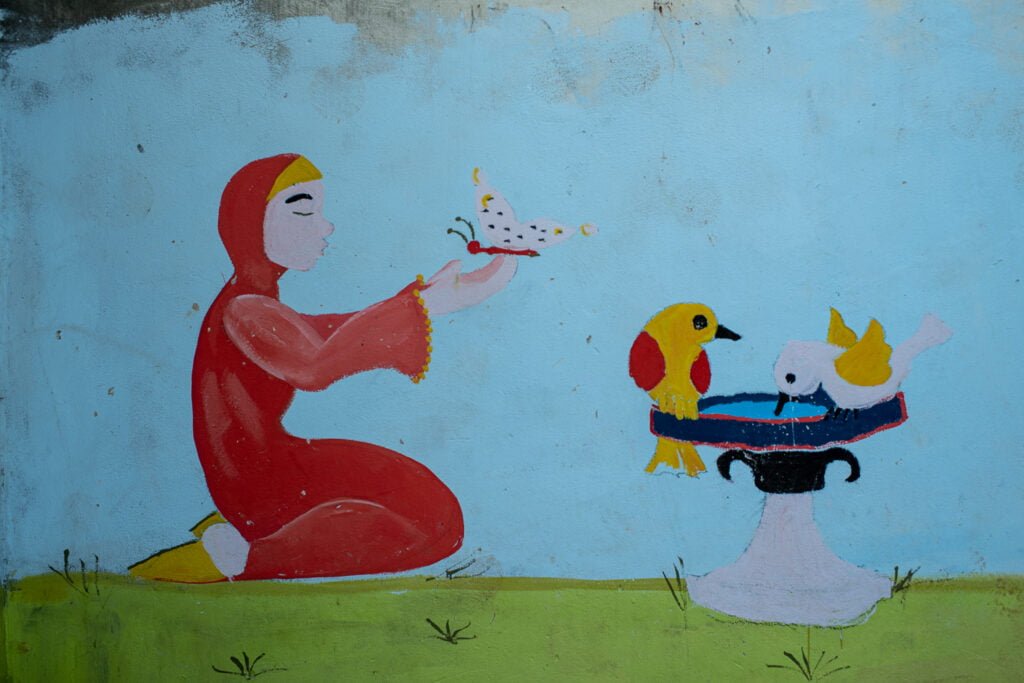
An increasingly common depiction in Chefchaouen and Fez is the portrayal of soccer and local soccer teams. This seems to reflect very competitive support for local soccer teams which compete nationally. Another interesting depiction is that of hairdressers across all three towns. Ouezzane also depicts local artisans at work, a reflection of its many small, cottage industries.
Below are galleries of images portraying my liberal interpretation of street art, including the interesting use of ceramics and the custom of painting medinas different colours, from the towns of Chefchaouen as found in March 2023 and Ouezzane as found in April 2023 and the city of Fez also April 2023. Although not ostensibly politically radical or subversive I do believe these visual environments represent the sensibilities of local communities and contribute towards maintaining those visions, belief systems and cultural values of the members of each community.
Chefchaouen :
Ouezzane :
Fez :
‘Some People are Vandals Because They Want to Make the World a Better Looking Place’………..
…..is a quotation from world famous artist Banksy describing his first commercially released print called ‘Rude Copper’ in 2002. Although not in itself an actual a depiction of street art, it is part of a series of images which include street art, and arguably illustrates Banksy’s then nuanced relationship with law enforcement. It also controversially suggested that the public be wary of any form of organized authority and law enforcement. It may also suggest, equally controversially, an apparent disdain by authorities for society’s disadvantaged, which has continued to be a feature of some political thinking. The artist’s mural work continued to be illegal, and Banksy even today remains an anonymous, shadowy figure within a politicised, though increasingly popular art form, however conversely it is interesting how his work is currently collectable and is now protected by the local authorities and law agencies he once derided.
